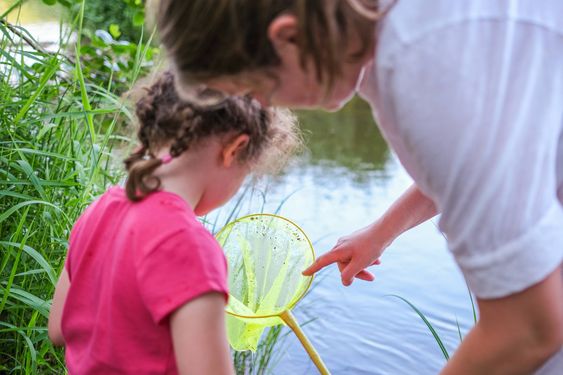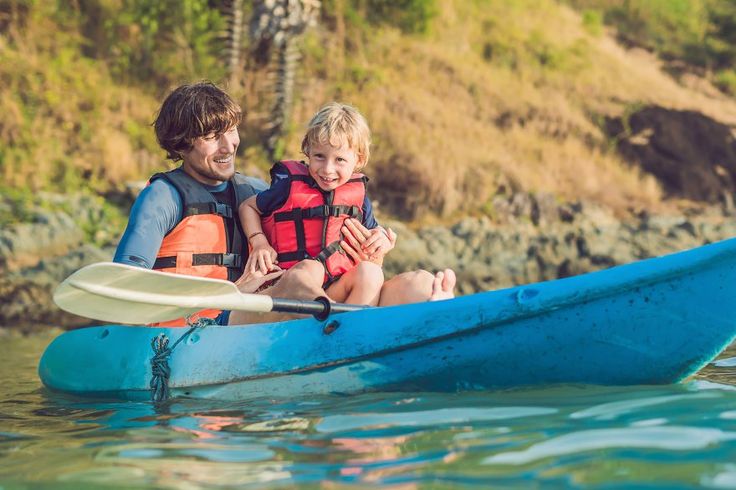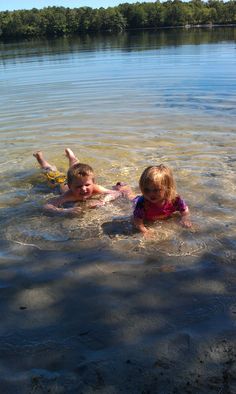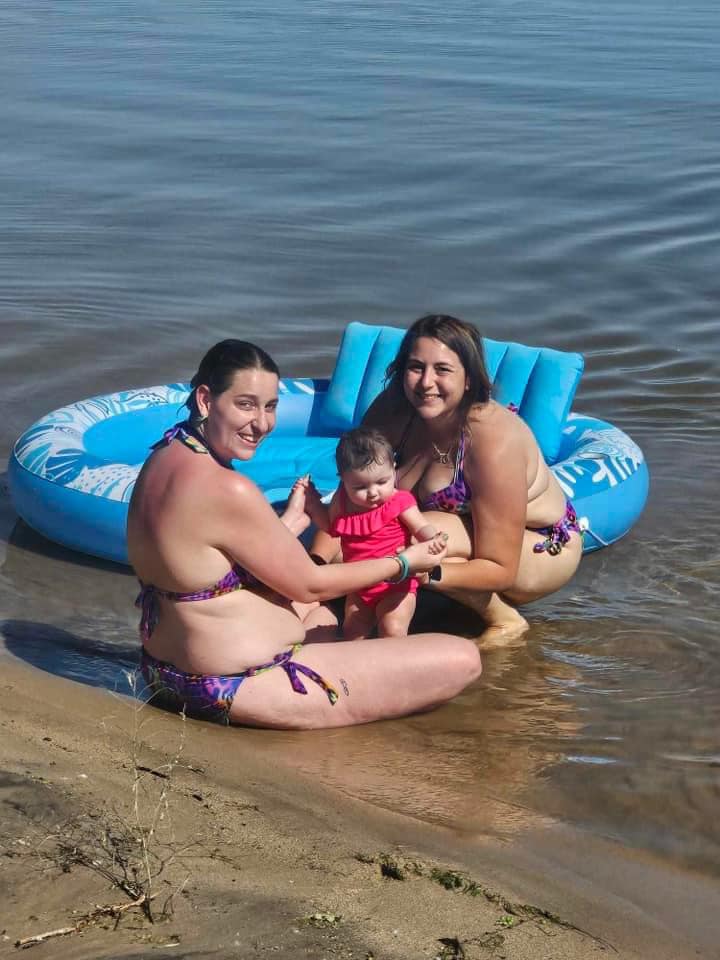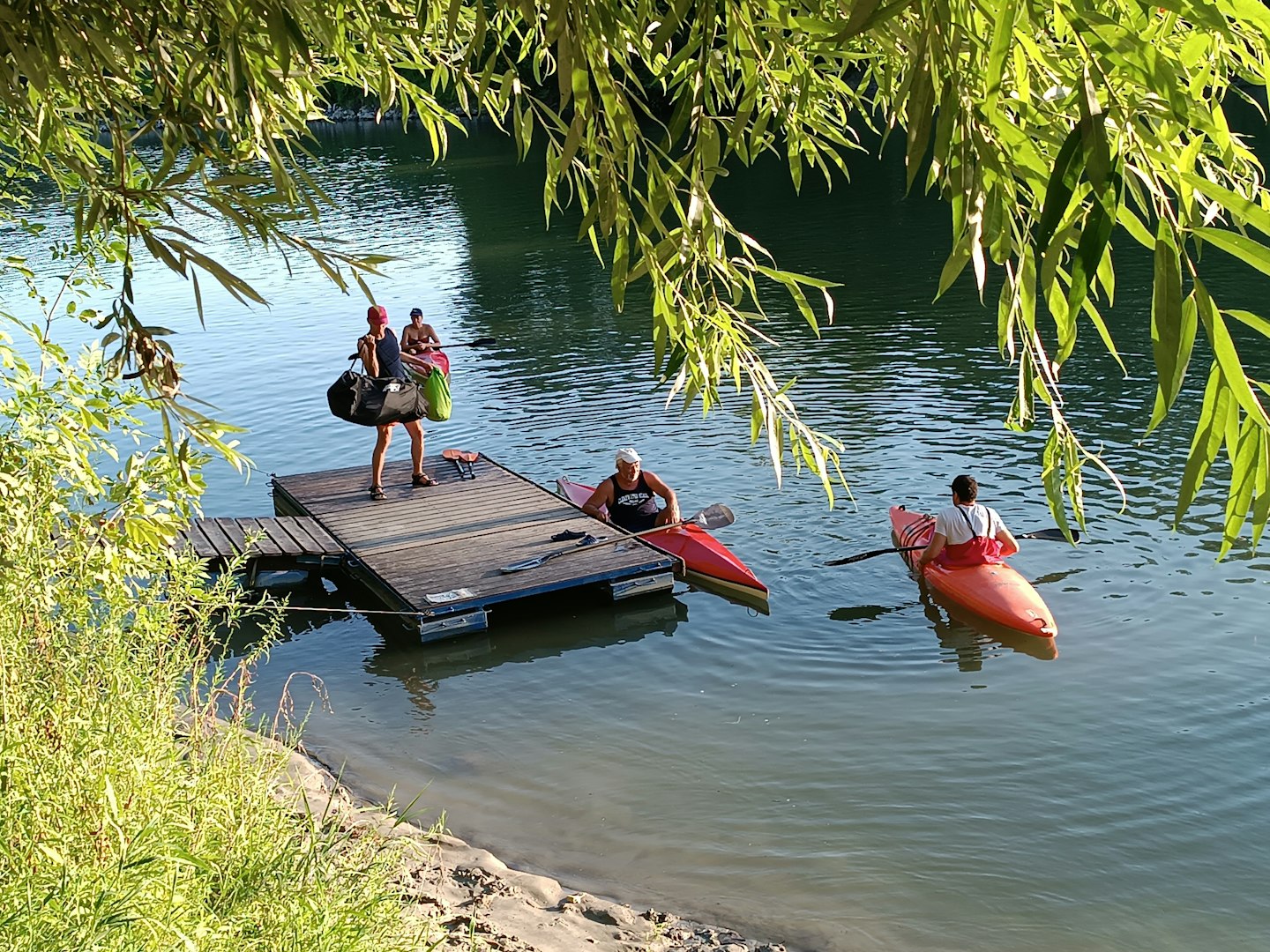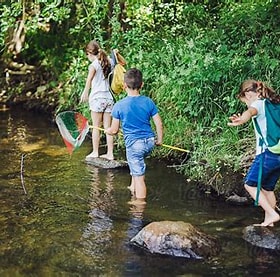
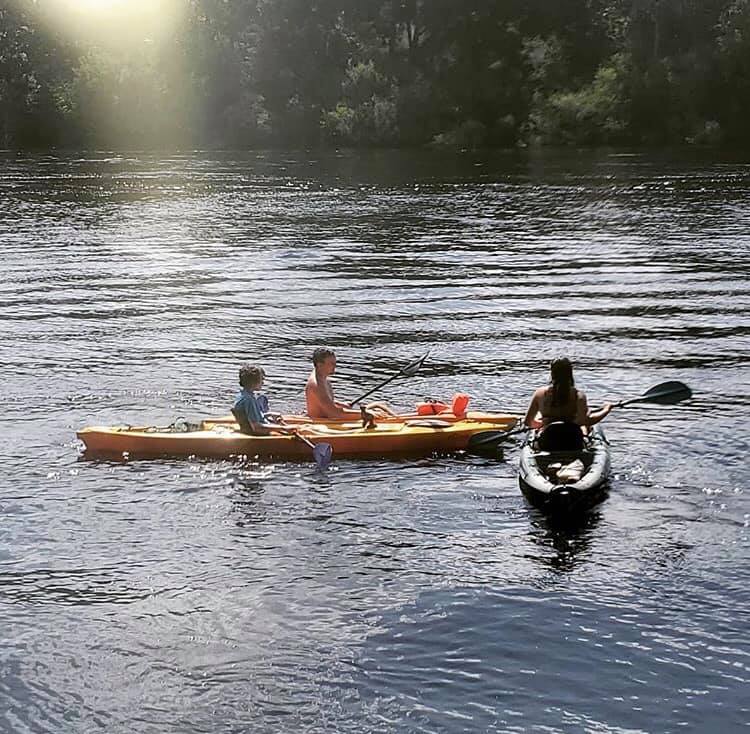
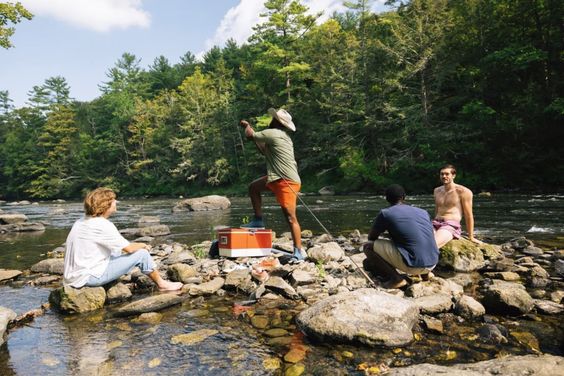
little explorers Activities for creek Stream River
Nature Play At the Rivers and Creeks
PLAYING DOWN AT THE CREEK WITH LITTLE EXPLORERS
Some of my fondest memories as a child are of playing in creeks with my sisters and brother and other neighbors. We could spend hours playing, exploring, learning, and cooling down on a hot day. We were late for dinner all the time – sorry mom. Our creek was a treat to play in and take a picnic lunch for a longer visit. It was down at the bottom of a treacherous hill on a dirt road. So we were much older when we were allowed to go by ourselves.
There’s something special about the water, moss, rocks, small creatures, and plant life that you find in and near creeks. Something magical that is different from any other shore. There is so much to find, explore and do that the hours will fly by like minutes.
Find places to snuggle or just connect with your kids outside. Every inch that we explore with babies is all new to them. Warm like a blanket, your hugs envelope your baby in the safety and security of your arms where they feel the love you can't tell them yet, but they can feel brimming from your heart. This is the beginning of them knowing they can rely on you, to trust that you will be there for them. An added bonus is when you spot a hummingbird, a butterfly, or a cute rabbit while you’re there.
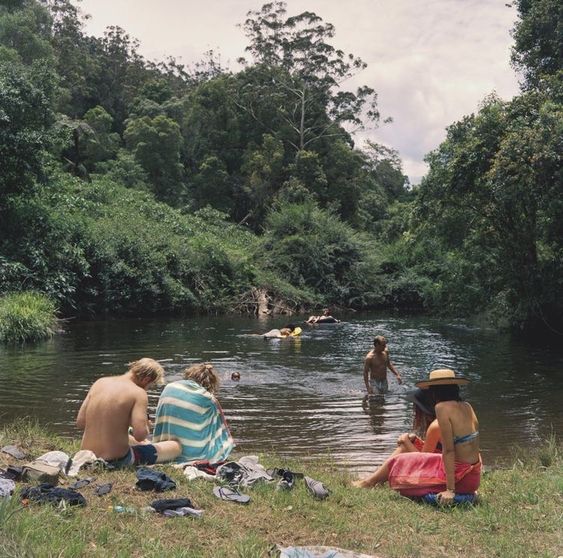
Make special hideouts for your littles. For some little ones being in a great big space may feel overwhelming. Creating little hide outs, forts, or playhouses is a great way to keep baby feeling snug and secure in the natural environment.When my oldest was young, she and her cousin had “the digging yard,” which was a patch of dirt under the branches of an ancient forsythia bush where they took digging trucks and basically just dug things. Endless hours of fun! Building special places for your kids
Get Outside & Connect Activity
– Play in a Creek.
I always loved it when my kids asked to play in a creek. If you don’t know of a creek near you call you local parks and recreation department. They will be able to point you in the right direction.
There is so much to explore and do around creeks. From learning about the plants and creatures that live there, to engaging in pretend play you can always find something to do.

We watched some boys play pirate ship, another family building a dam, some other kids having a water soaker war, and another group chasing after fish and tadpoles. My daughter has an endless fascination with rocks. As you can see below, she was in heaven at this particular creek.
Playing in a creek is a perfect activity on a hot day. On the day these pictures were taken the temperature was 108 outside, but you would never know it down by the creek. As I walked around with my feet in the water in the direct sunlight it felt like it was only about 80 degrees – and I was still completely dry except for my feet!
I was so comfortable in the coolness of the creek I forgot how hot it actually was. Below you can see me happily chasing after one of the little peg doll boats I made with my daughter.
My daughter was not as happy about them floating away. I think she missed the point – haha! She was so attached to our creations she had to put them all away.
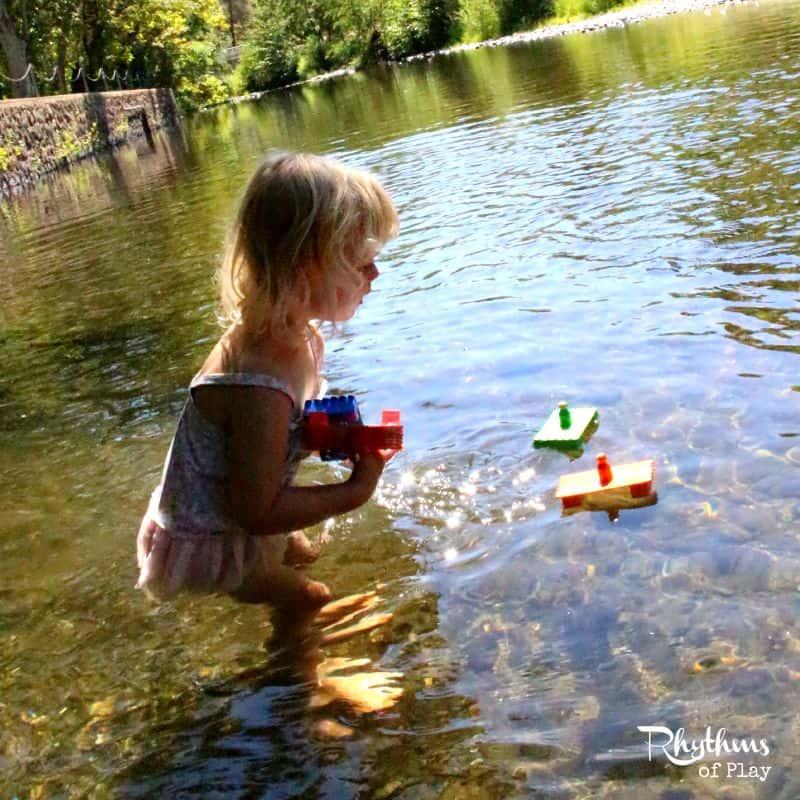
But that was okay because we quickly found something else to do. There were huge tadpoles everywhere. They were so big they were about to be frogs. Can you find it in the photo below?
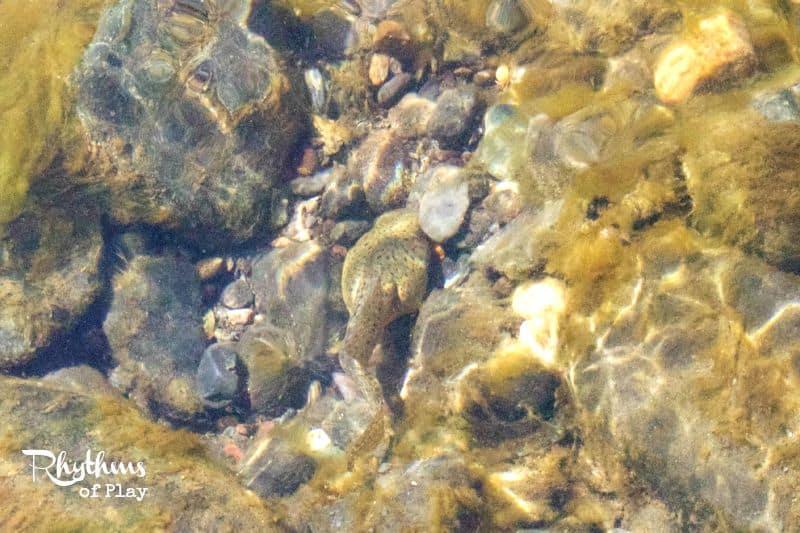
There were also lots of shells to collect, and a fallen tree that created a tunnel cave that my daughter stood at the mouth of for quite a while. I could tell she wanted to go in… but she didn’t dare.
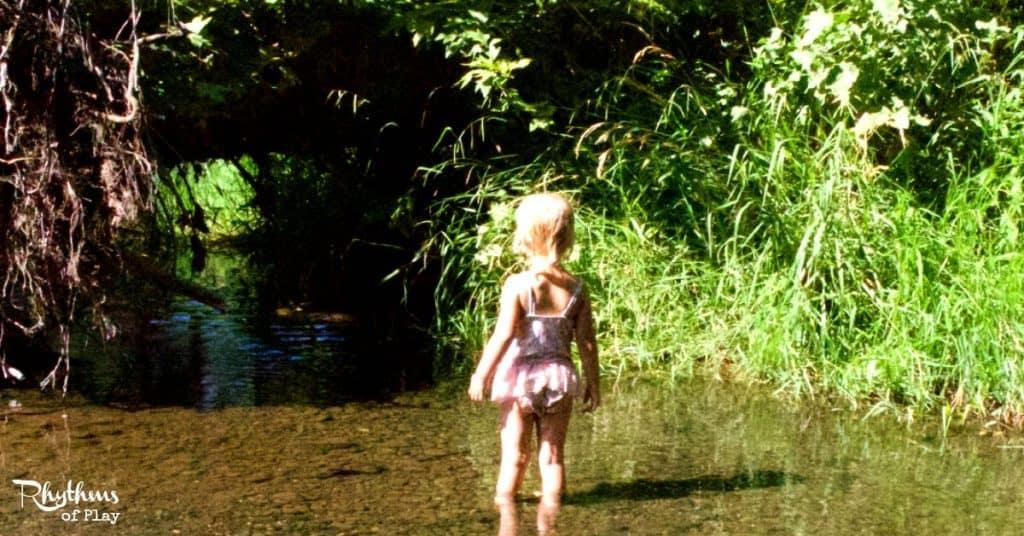
It wasn’t long before we were completely immersed enjoying the water on this very hot day. There was one point where I actually started to feel cold. I had goosebumps and I wasn’t even in the water anymore. Did I tell you it was 108 out?
It was a wonderful afternoon that passed too fast. My daughter wailed when we had to leave, but what kid wouldn’t? I never made it home in time for dinner either remember?
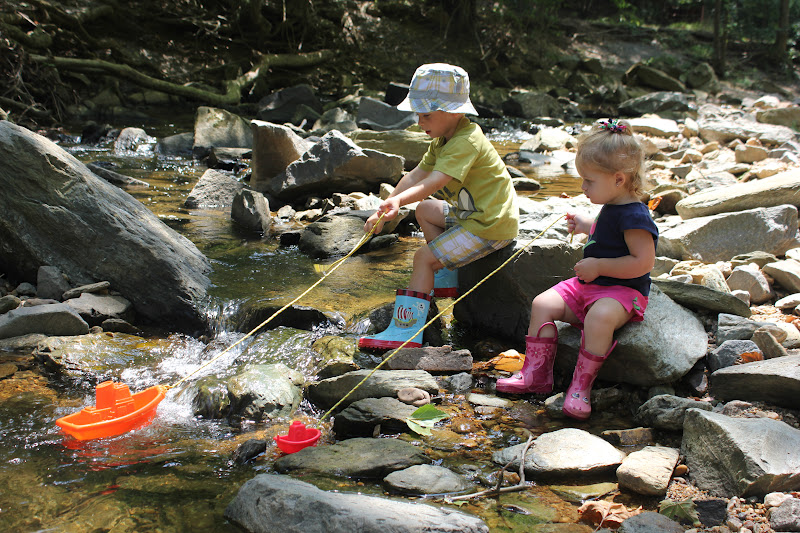
Get outside and play in a creek this week. I promise you will love every minute of it. Be prepared to go eat on the way home or have a crock pot going like we did or you won’t be home in time for dinner either. 😉
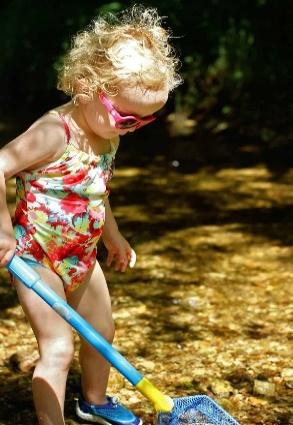
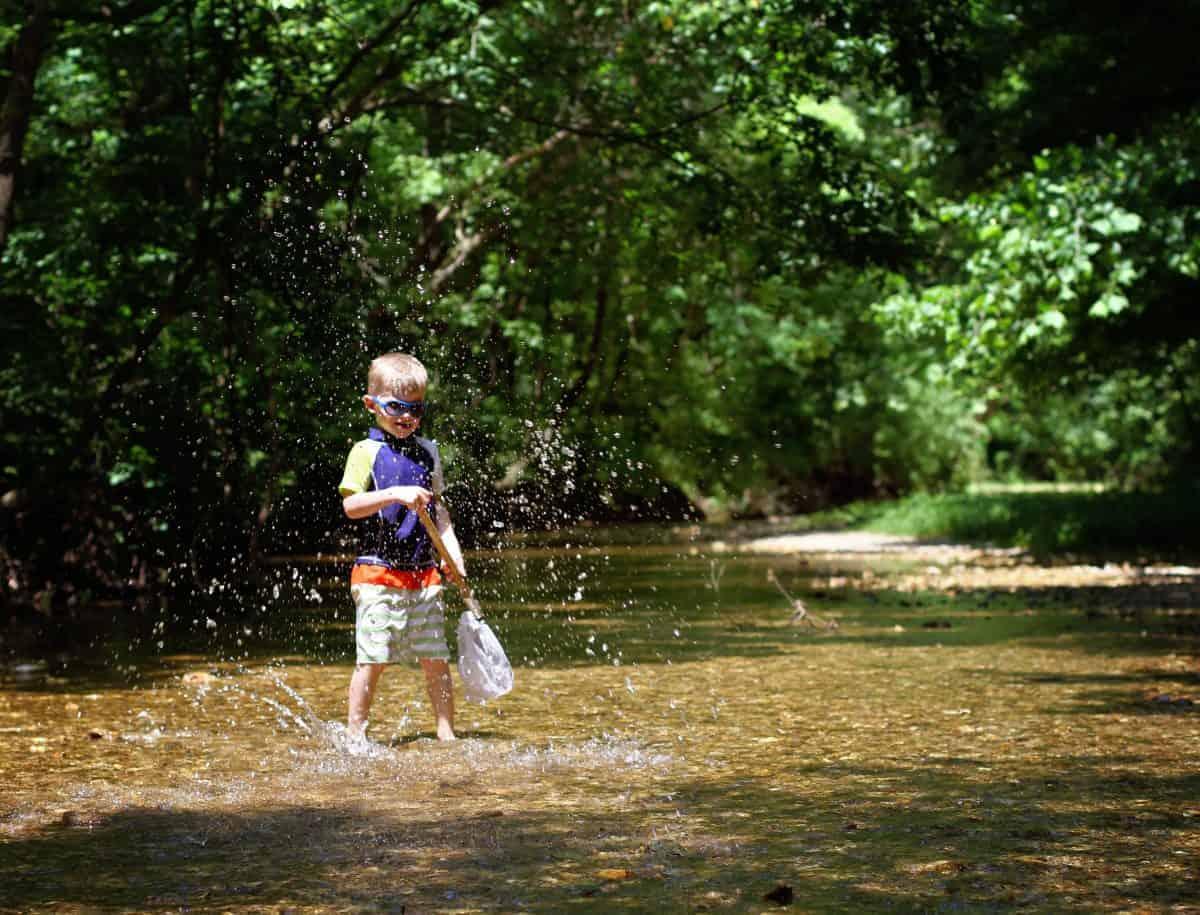
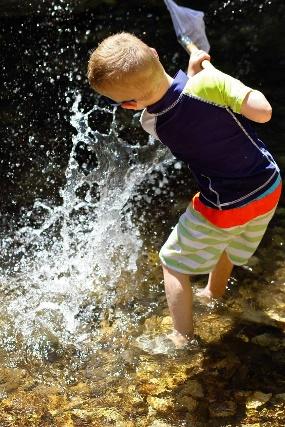
Necessary Gear
Exploring creeks with kids is a wonderful activity to do in the summer when everything’s lush and green and thriving. Wading through cold creek water is the perfect way for kids to cool off without having to spend the day at a packed public swimming pool or running up your water bill and flooding your lawn with the sprinkler.
Other than sunscreen bug spray and swimsuits, I recommend nets and water shoes for the kids – something to give them some stability and grip but keep the rocks and sand out (post coming soon on great summer shoes for kids). Polarized sunglasses are helpful for letting kids see underwater, although not necessary. If you want to keep something you find, bring a bucket or a small fish tank. And make sure to bring a change of clothes for the ride home – that way it’s totally ok for the kids to get as wet and dirty as they want.
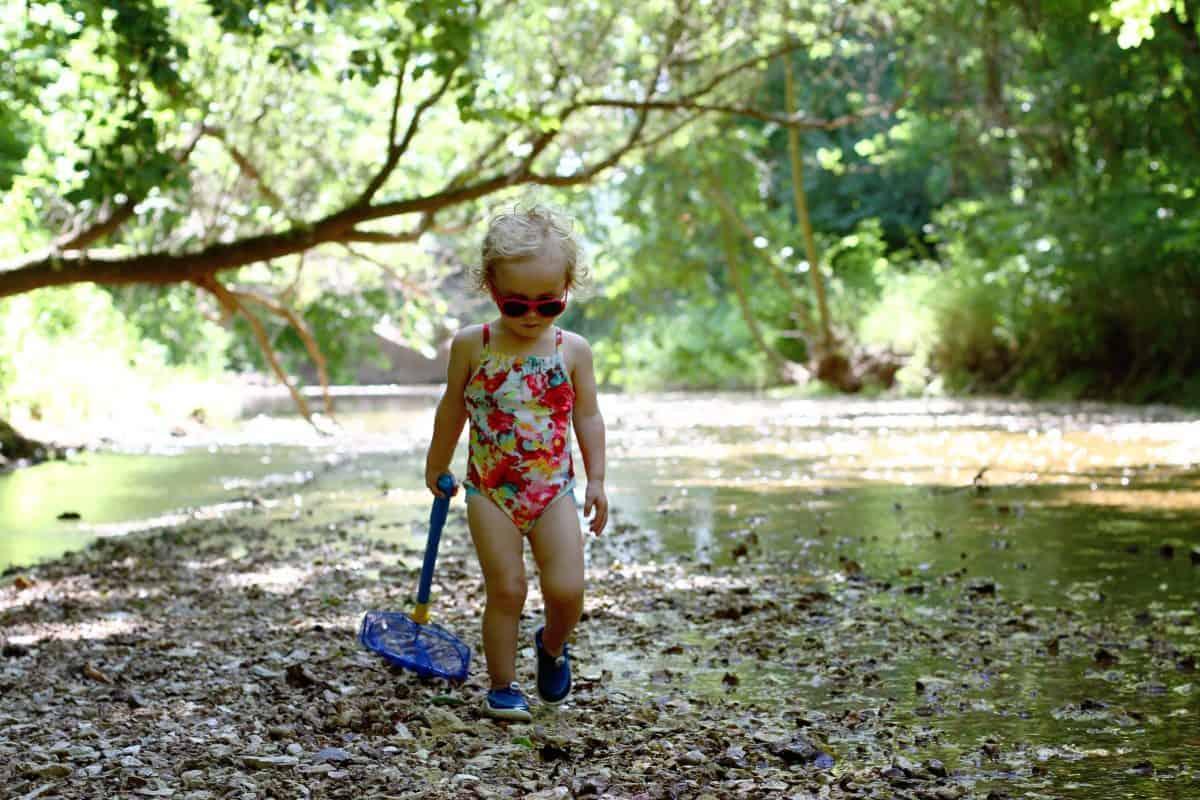
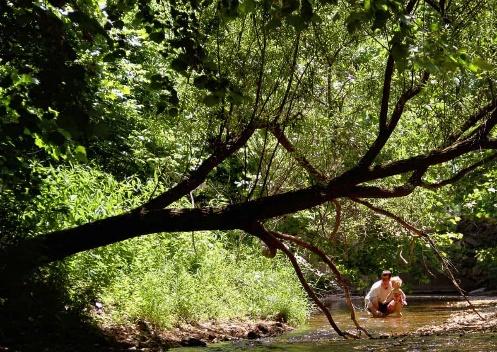
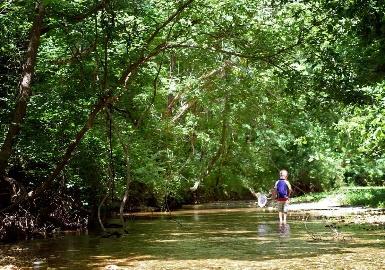
Locating a creek
Creeking is a great activity for kids of nearly any age (my kids started before they were 2) and can be done almost anywhere in the country…so long as you know where to look. Knowing the location of a good creek is probably the hardest part about creeking and is possibly what prevents most parents from taking their kids. Once you have checked out a park yourself, you will know what nooks and crannies that will delight your little one. Remember to shop for or make proper sized exploring gear for them if they are older.
Stream or Riverside Sensory Play
This post is all about turning a visit to your local stream into a sensory experience for the kids. Creeks and streams are full of amazing opportunities for kids to get immersed (literally!) in nature. Playing in or near a stream is not only a learning experience about the natural world around them, but it’s also a chance for kids to get wet, muddy and have a lot of fun! We’ve already covered all the amazing benefits of letting your kids play in the creek. Today, we have Brooke Selb from wreckingroutine.com sharing the benefits of streamside sensory play and how her family enjoys their local creeks and streams.
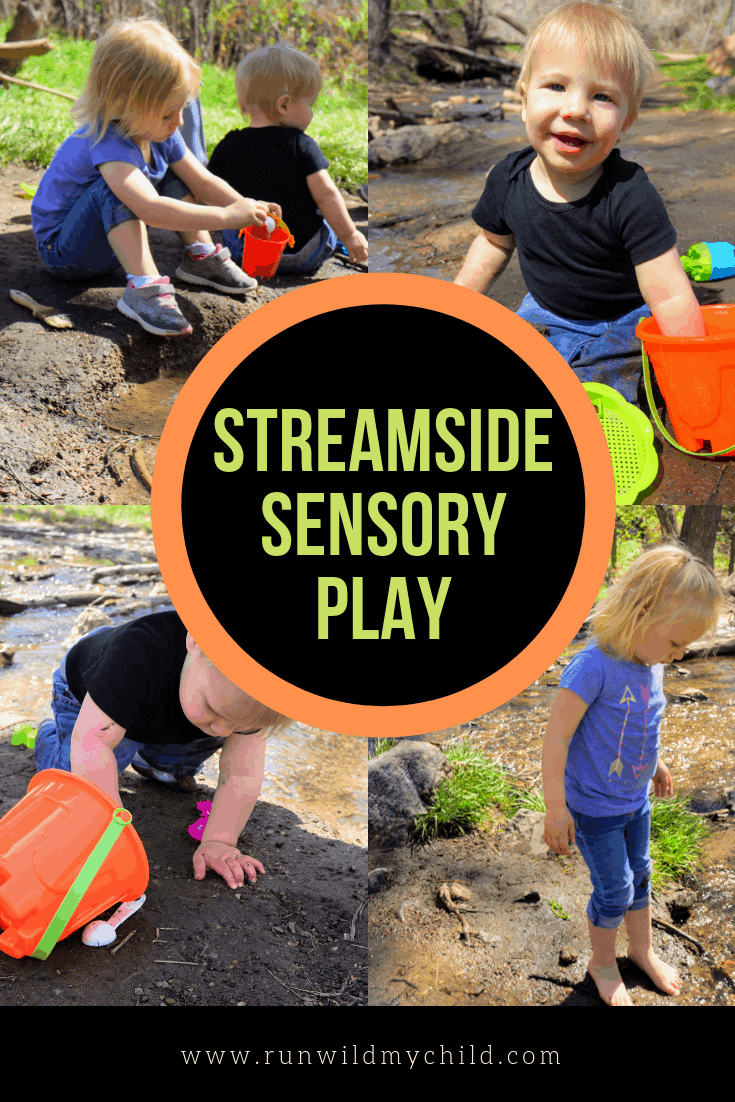
Trading the hikes for a stream
With two kids under the age of three, our days of hiking double-digit trails on a Saturday morning are no longer realistic. While our kids do pretty well on the trail, we are capping out around three miles. In fact, during our spring break staycation, we hiked two miles in mildly windy weather and both kids cried the entire time! Not the relaxing hike we envisioned.
However, both my kids (Zoey and William) absolutely adore sensory bins of any kind (think rice, beans, dried pasta, and shaving cream). They also love being outdoors (just like their mom and dad). So, we combined those two things into something fun and took the arduous hikes out of our routine.
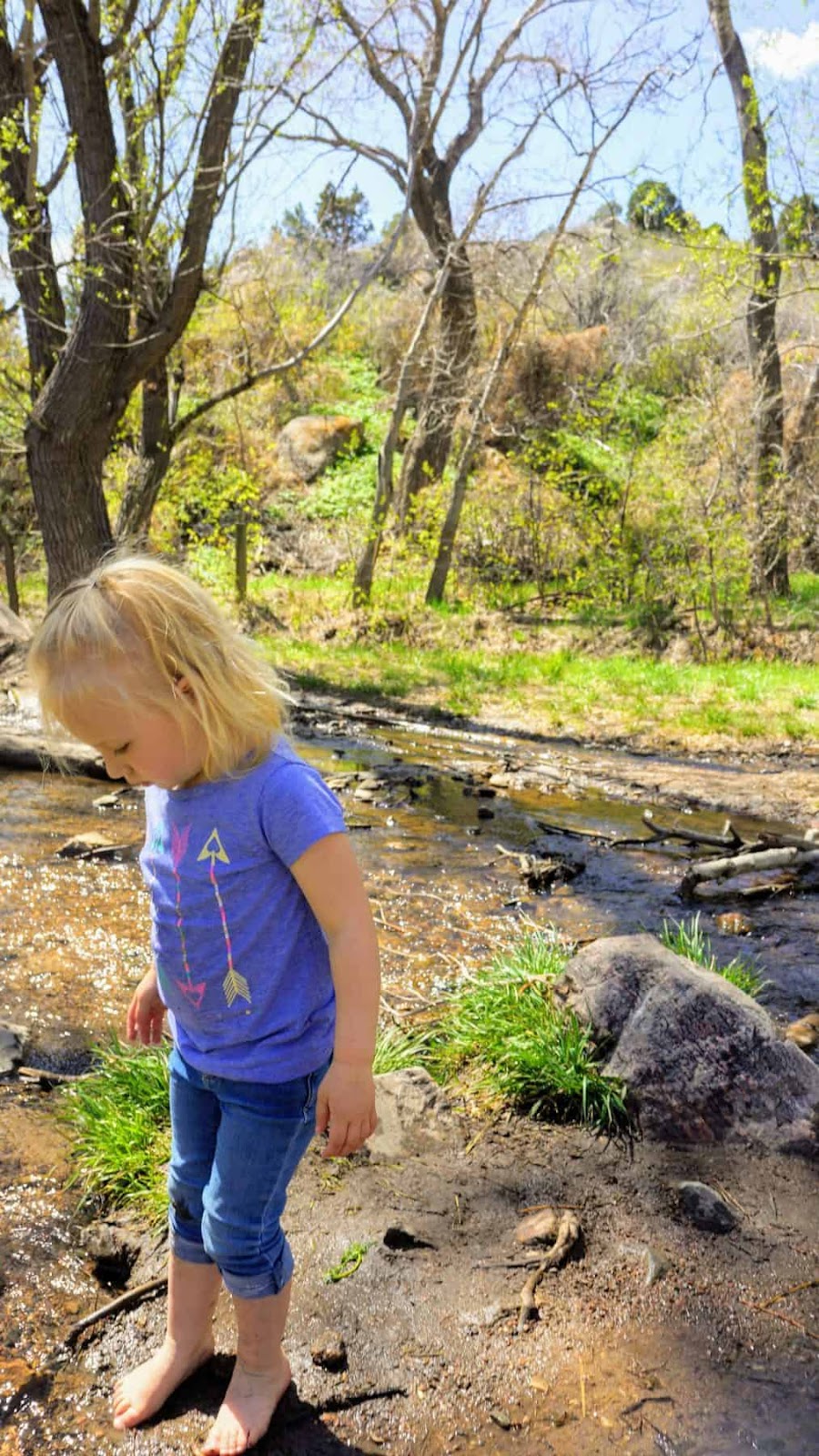
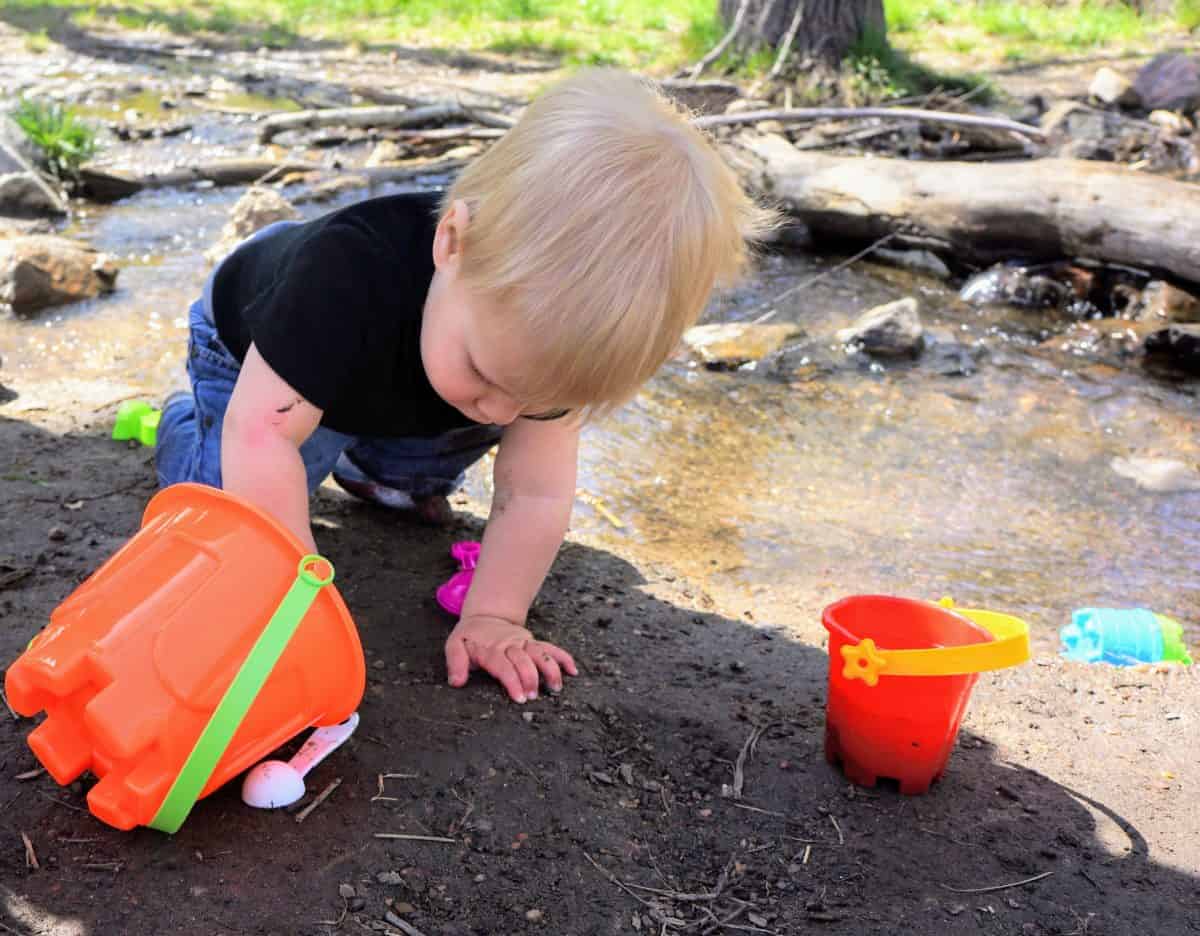
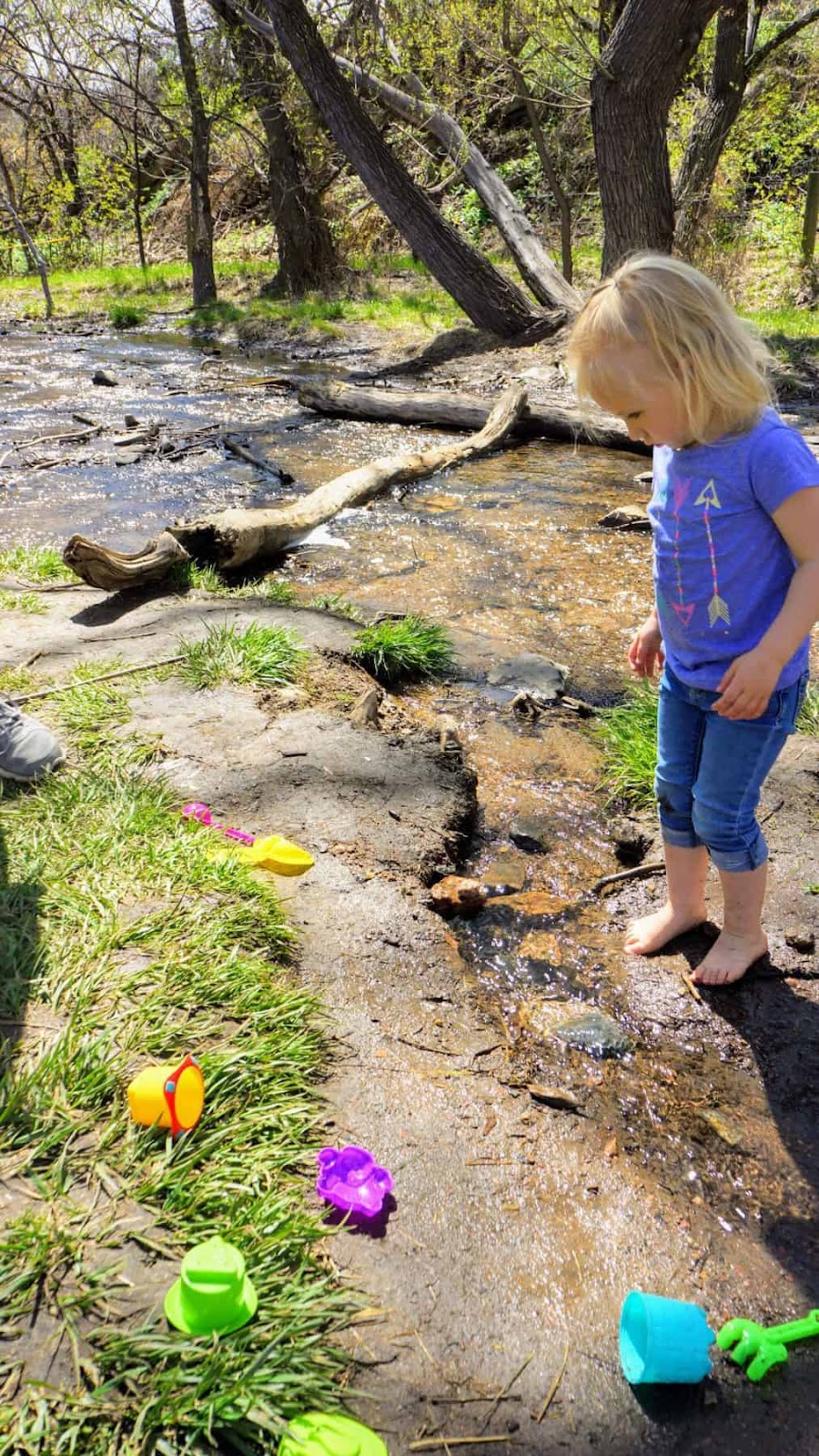
Streamside sensory play
Streamside sensory play is the perfect activity to get us all outdoors. We get to discover more about our surroundings, learn about local nature, and get messy. When I first realized how much Zoey loved this type of play, we ended up venturing out to our nearby streams at least once a week. Now that the weather is warming up, we are back to it! Our girl could not be happier to share her love of outdoors and water with her younger brother.
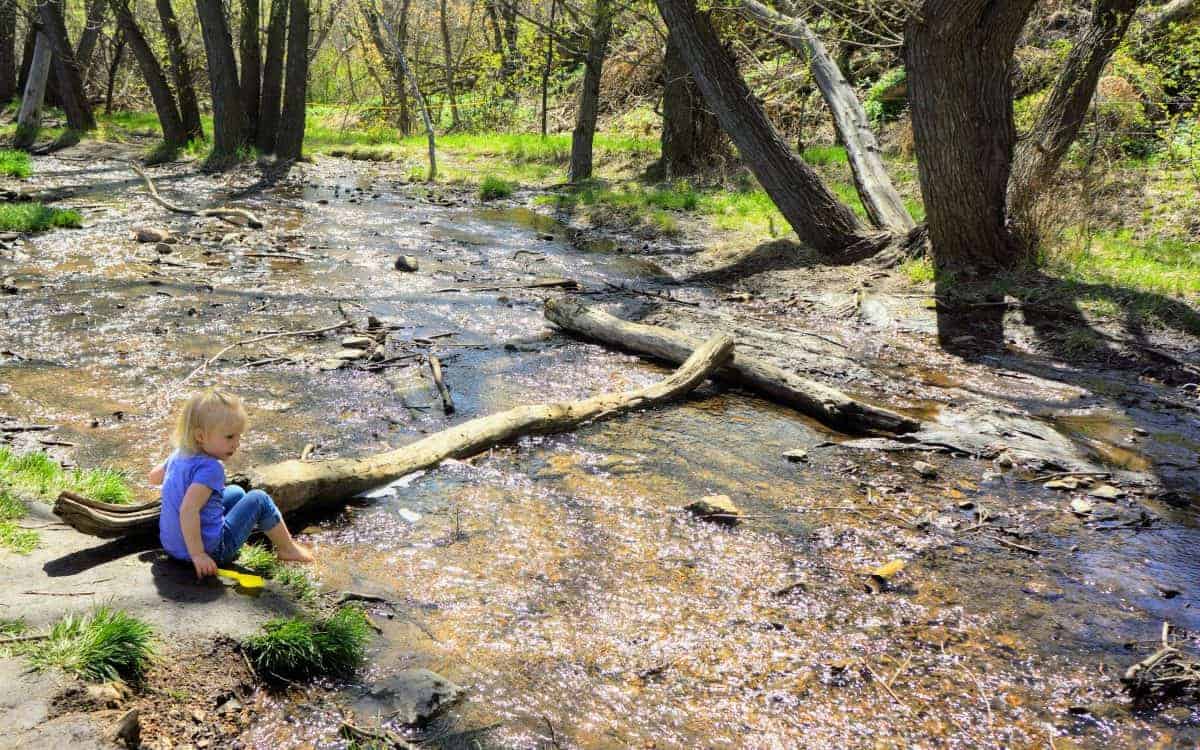
How to choose a good spot
I have found a few spots near our house in Colorado that are perfect for streamside sensory play. Some things that I look for in a good location are:
A flat and level area next to the stream. This prevents the kids from having to reach down into the water from slanted ground, which can lead to falls. We also look for flat areas so we can put out a blanket for William to sit on or as a place to rest and have a snack.
Location with a variety of textures. We like areas where the kids can get wet and muddy, with rocks or trees nearby. Gathering rocks and sticks to use in the water is all part of the fun!
Slow running water. I like the water to have a little movement. Not only does it help keep the bugs away, but it ensures that the water is not stagnant or smelly. Although, do not choose a spot with too much movement because when the toys inevitably slip out of wet hands, you want to be able to snag them before they get downstream too quickly.
Shallow water. The kids love getting in the water as much as possible, so shallow water helps me ensure they’re safe.
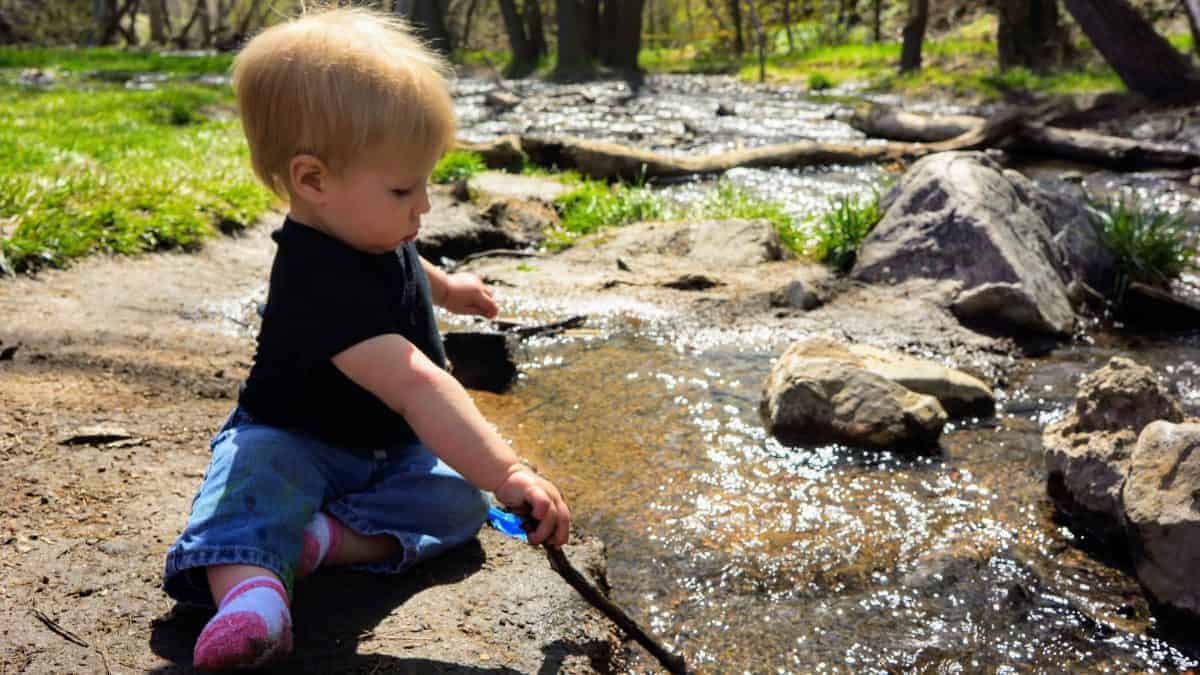
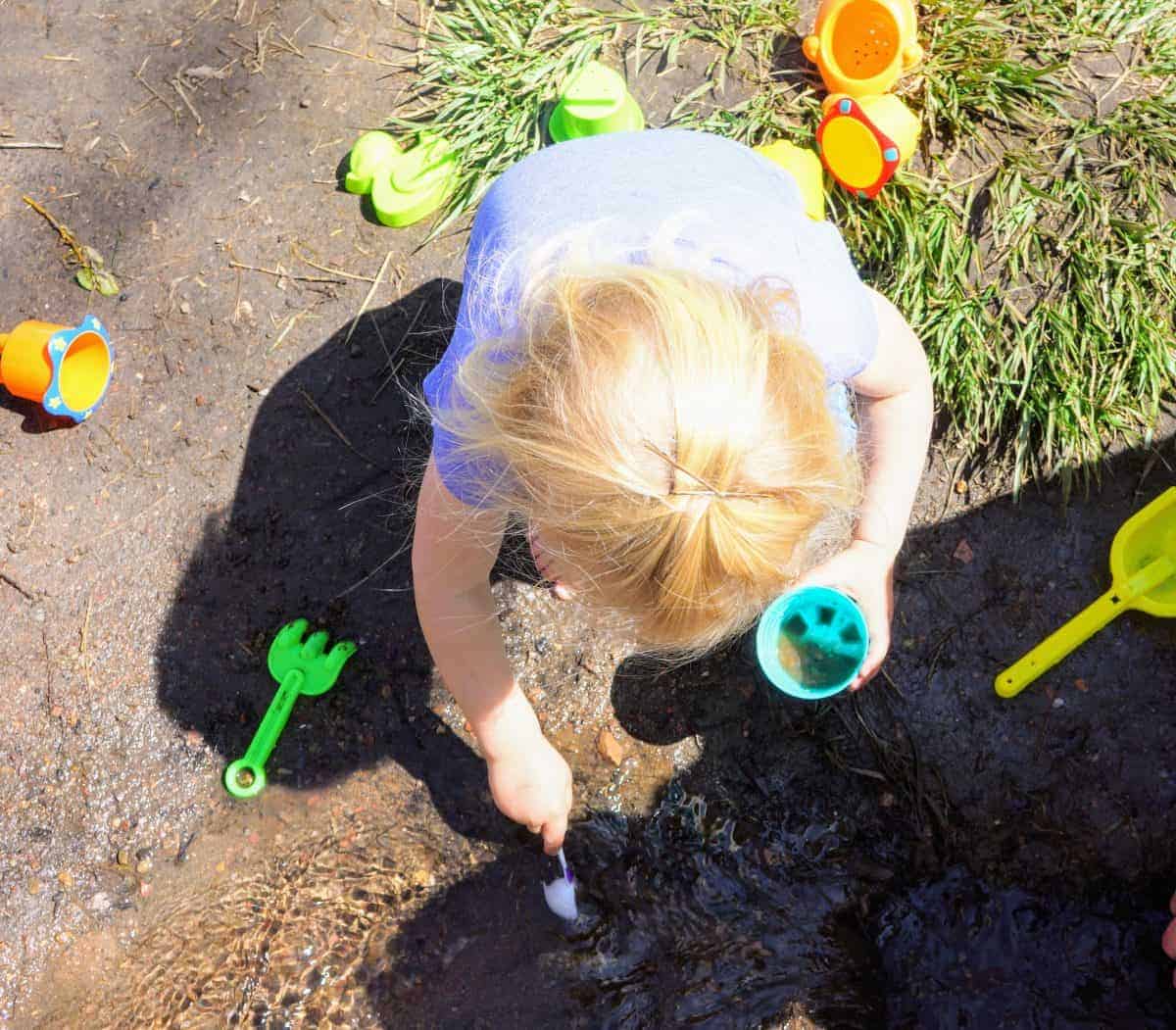
How to play streamside
This is the best part…there are no rules! Just let them at it! Zoey is good at digging, scooping, and dumping. There is no end to what you can do waterside: putting pebbles in buckets, making mud pies, building sand castles, splashing in the water with her animal figurines, chasing/catching minnows, and changing colors of dry rocks once they get wet.
Getting wet is a must in the hot months and playing in a stream is a great way to cool off and immerse yourself in nature. Playing in the stream allows all your senses to be stimulated. From the smell of the surrounding woods, to the cool touch of the water and the sound of the babbling stream. I let Zoey take off her shoes and socks and squish her toes around in the mud. She giggles the whole time!
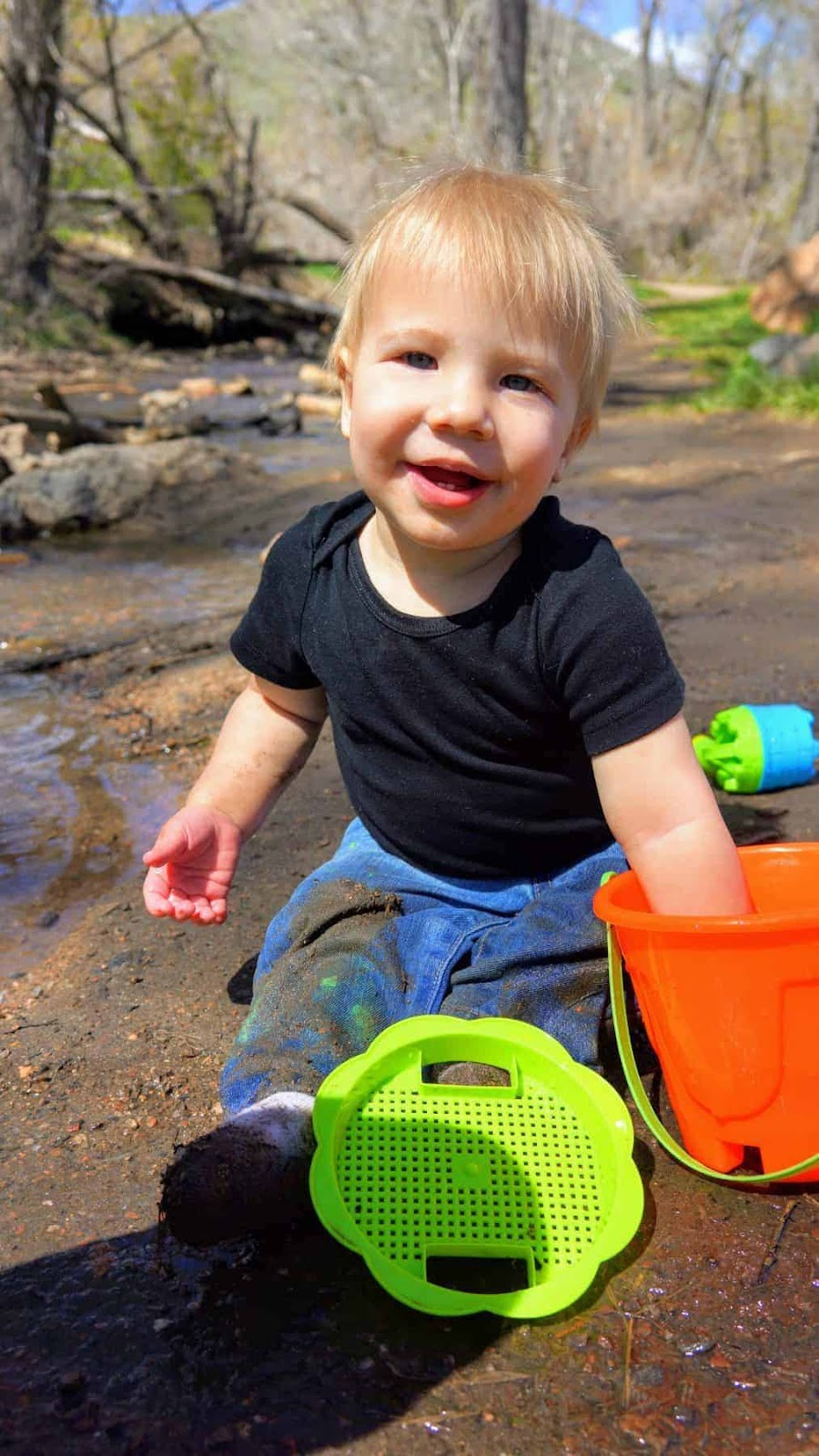
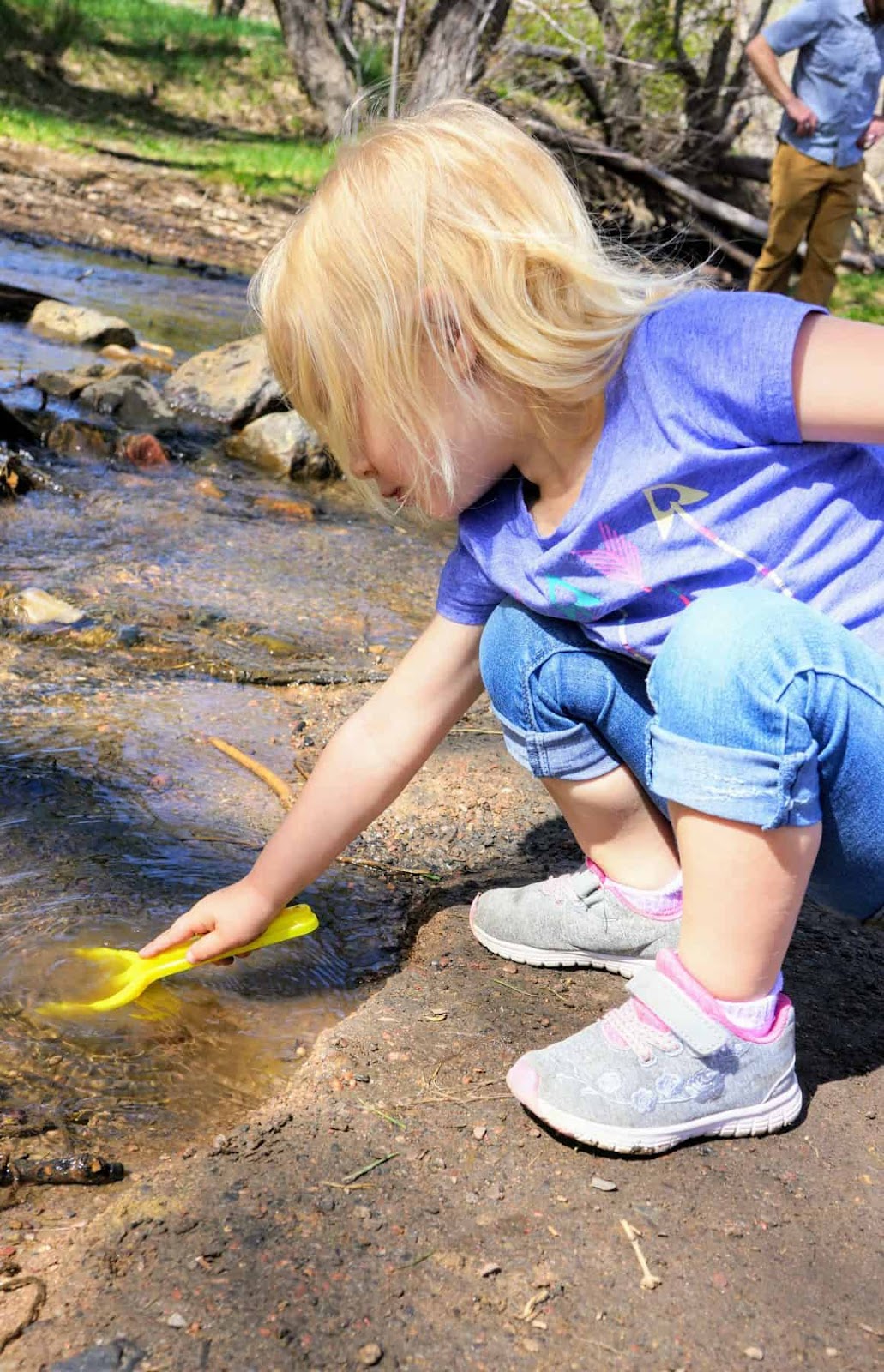
What to bring to the stream
Another good thing about playing in the stream is that you don’t need any fancy gear or equipment. Mainly, all you need is your imagination and a sense of adventure! However, there are a few things I’d recommend you bring along for your streamside outing:
A change of clothes. The most fun part of streamside sensory play is that the kids can get as wet, muddy, and generally messy as they want. While I try to time trips to the stream with bath night, a change of clothes will at least get you home with dry, happy children.
A hat. While some of the streams might be shady, often times the best spots for sensory play are in the open. Protect those little heads from that bright sun with a hat and/or sunscreen.
A sand toy set. Buckets, shovels, rakes, spoons, cups, toothbrushes all make excellent streamside toys. Essentially, anything that allows them to dig in the mud and scoop water. I’ve even brought a paintbrush along to make mud pictures on the concrete or rocky areas.
Animal figurines. We bought a cheap pack of little farm animals from the dollar store and Zoey adores playing with them in the stream. She builds muddy hole homes for them, dips them in the water to clean them, and hides them in the grass or under little rocks. They certainly add an extra element of fun.
A towel. Be prepared for muddy feet and wet hands! It is also nice to be able to dry off hands before the all-important snack break.
Snacks. This should be a given because if we are being real, we never leave the house for any activity without a cache of snacks. There’s something about fresh air seems to make the kids extra hungry.
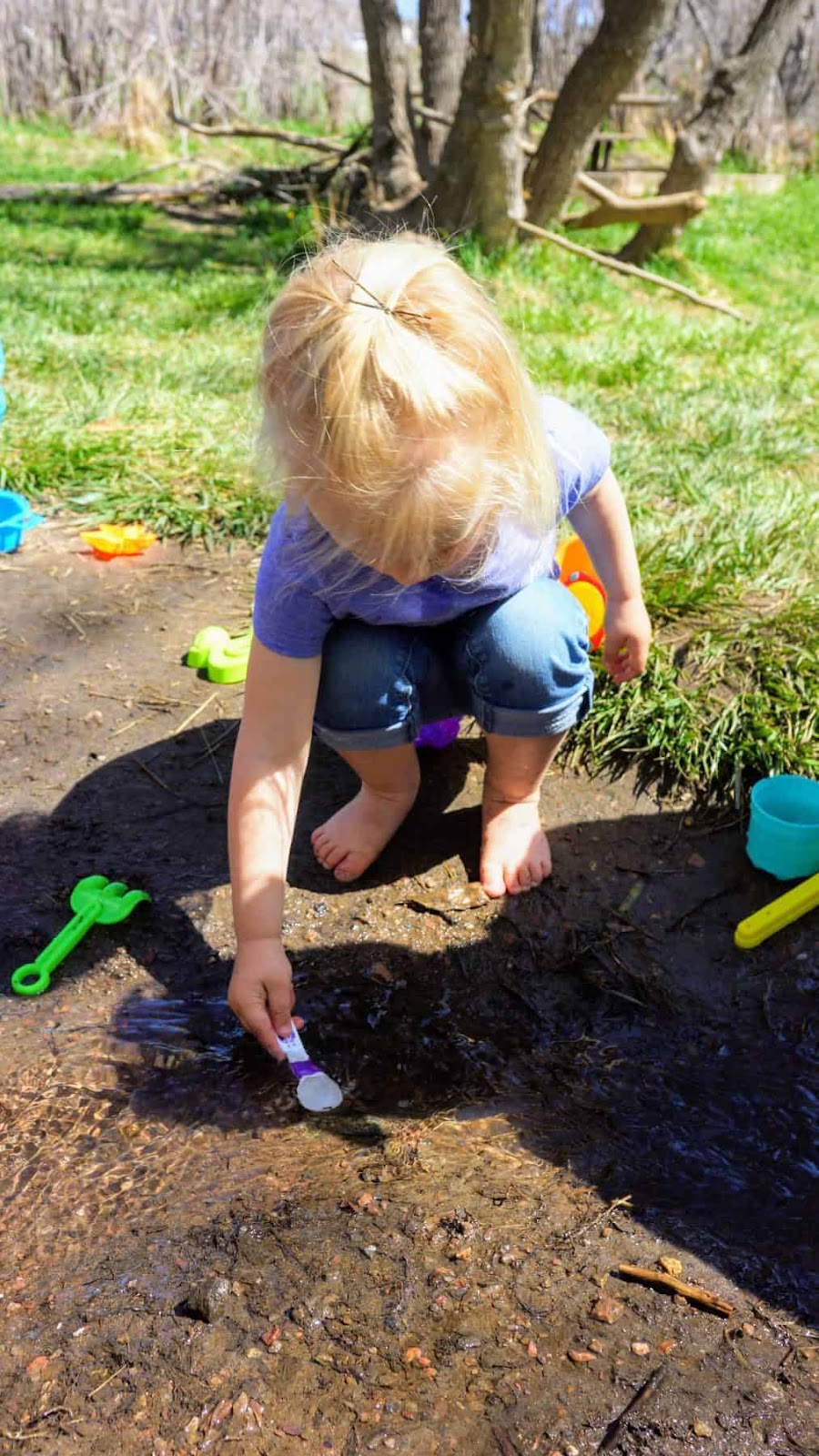
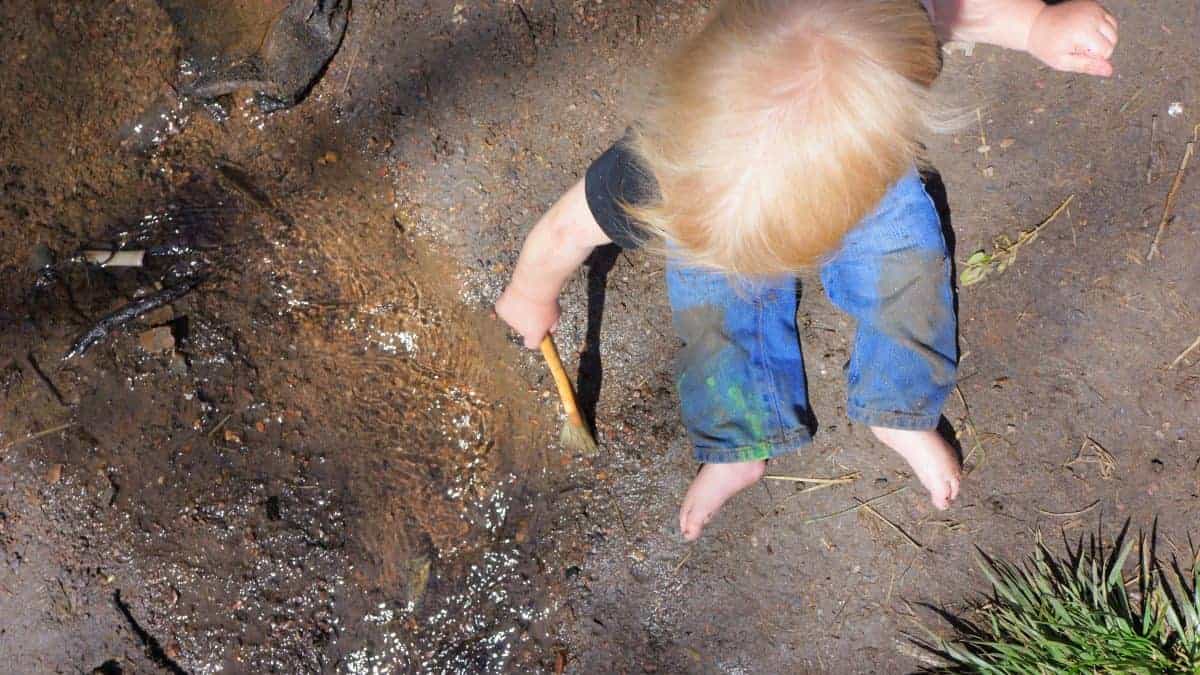
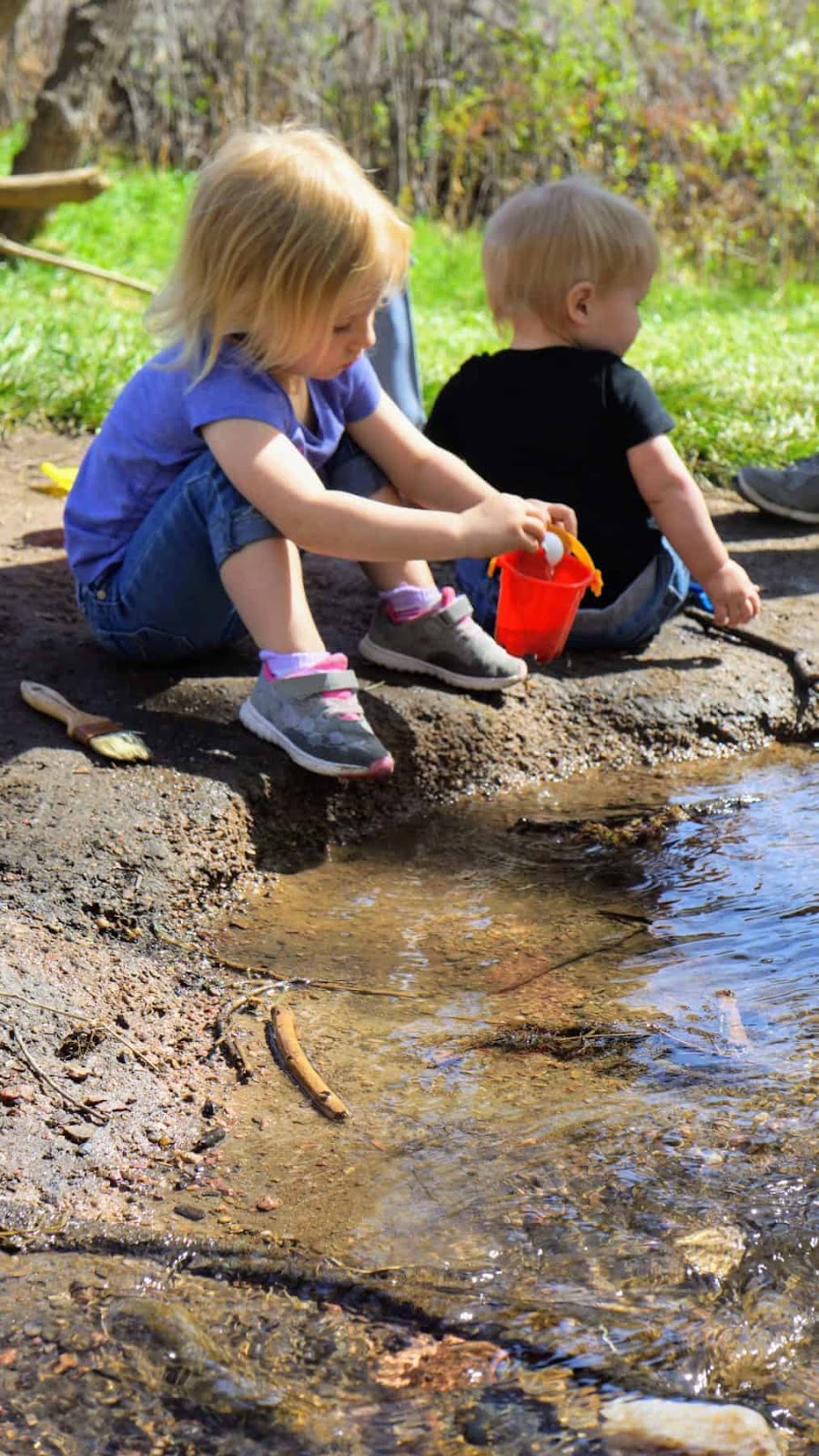
Let them play Their Way
The essential part of streamside sensory play is to really let the kids discover with all of their senses (except maybe taste, because…mud). They will get wet, muddy, and just overall dirty. Let them do it! They’re making memories! I promise they will talk about that time they were allowed to get as muddy as they wanted for years to come.
Hands-on adventures
Getting wet and dirty is part of learning about the natural environment, too. If my children are within reaching-distance of water—any water—they are sure to get wet! It doesn’t matter the temperature or what they’re wearing. So, if the pond you are visiting is wading accessible, wear some water-appropriate clothes and footwear. Bring some buckets, a net, a magnifying glass, and explore a pond with kids up close!
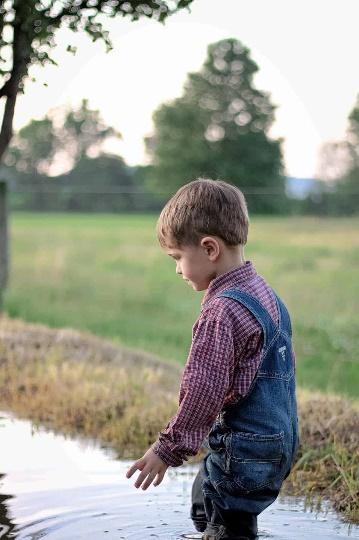
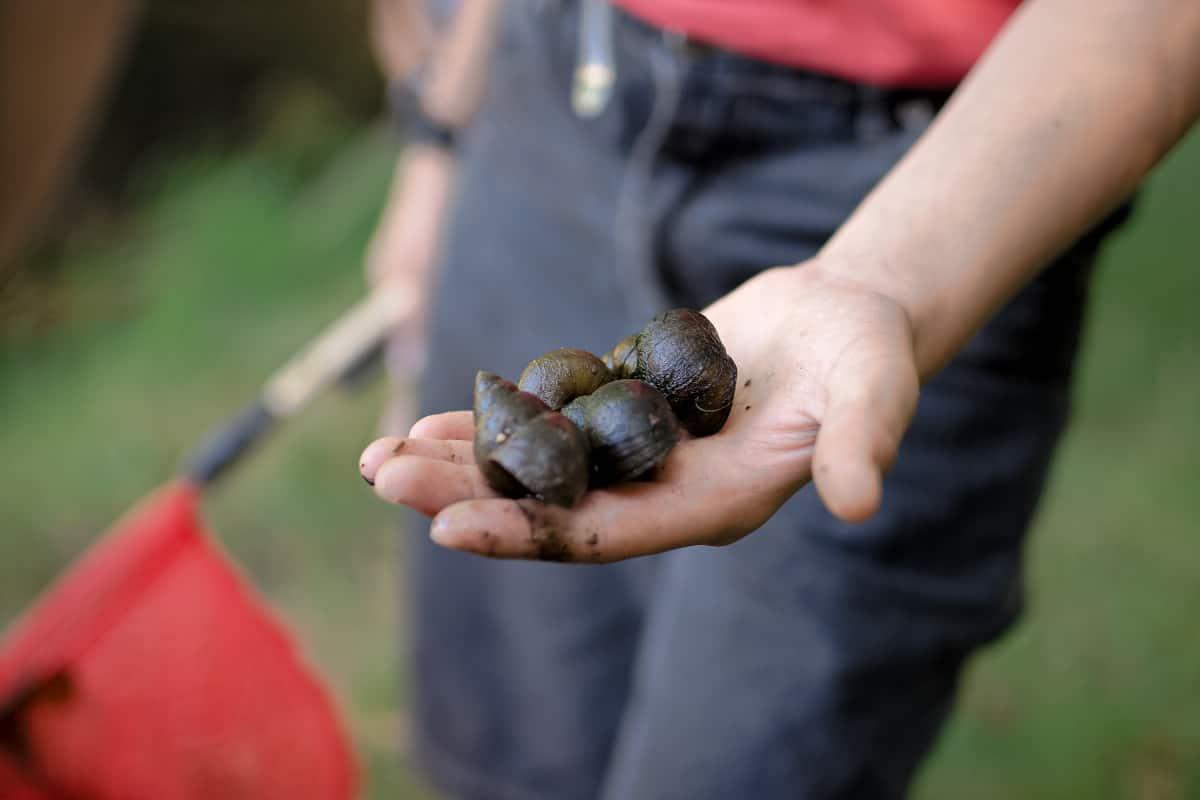
Exploring wild water with kids is a hands-on activity. If you have an adventuresome child with quick reflexes, they might be able to catch a bullfrog or net a minnow to examine. These are good opportunities not only to study creatures up close, but also to teach our children how to handle them and to release them safely back into their natural environment. The minnows can’t breathe air, so we have to observe them in the water. The frog is slippery and likes to jump, so we have to hold it securely but without squeezing it.
Superscript
10 Adventures to Explore a Creek
If you decide to go on your own family creek expedition, here are 10 simple ideas for adding to the adventure:
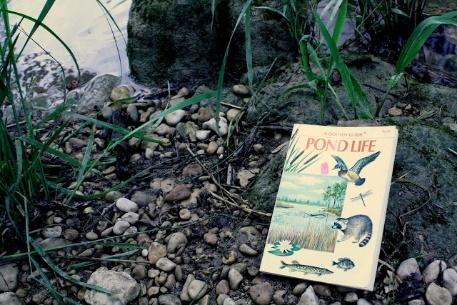
1. Bring a nature identification guide. The Golden Guide to Pond Life, for example, has everything you need to identify fish, bugs, and small water animals.
2. Make a water scope. A water scope is a simple instrument for helping you see more clearly deeper in the water. You can use any tall, waterproof container, but we used a protein powder container. Cut one end off with a knife so that you have two open ends. Use a large rubber band to secure a piece of cling wrap to one end. Push your water scope into the water and peer in to see what you can see! (It’s especially fun if you can find an area with some little fish to peer at!)
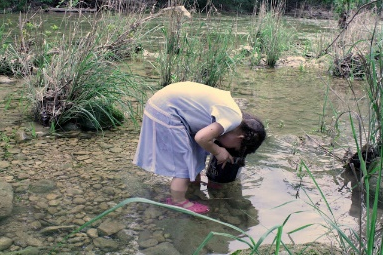
3. Build an island out of sticks and rocks in the middle of the stream.
4. Play “Pooh Sticks” The version of the game from Winnie the Pooh uses a bridge, but you can do it by deciding together on a set place along the river. Go upstream about 30 feet and have everyone drop a twig or leaf, or anything easy distinguishable into the creek at the exact same time. Run to the determined spot to see whose item “wins” by reaching the spot first.
5. Bring a butterfly net and a bucket for catching bugs and fish.
6. Collect shells and rocks. You’re not going to find anything dramatic like you would find at an ocean beach, but there are lots of small clams and snail shells to be found.
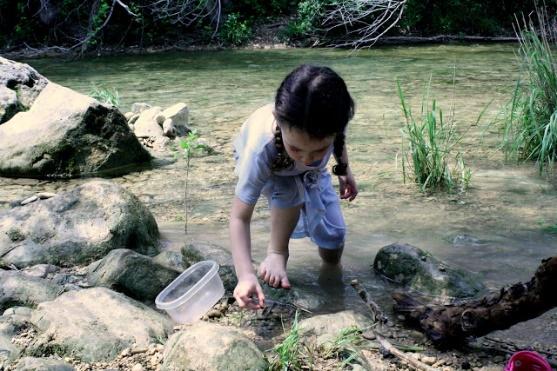
7. Collect smooth river stones. See who can find the smoothest, roundest stone.
8. Skip rocks. Use flat rocks and find a slow area of the creek.
9. Practice balancing on one of the many fallen tree trunks along the sides of the river. It’s much more exciting to balance on something when there is danger of falling into the “ocean.”
10. Collect brush and rocks to make a dam. Pick a shallow, slow-moving section of the creek, and see if you can stop the water flow enough to make a small pool.
mORE Things to Do at a Creek:
Get outside to enjoy a creek any time of year with this list of outdoor activities for kids and adults.
Discover fun things to do at a creek, from exploring the shoreline to playing in the water, with the fun outdoor activities below. A creek is a small stream of water that flows through fields, woodlands, parks, and even behind houses. There is something for everyone to enjoy at the creek; even your dog will enjoy spending time creekside with the ideas below. This informative creek activity guide is one of the many fun outdoor activities featured in the ‘Get Outside and Connect‘ series.
There is something to do year-round at the creek. From exploring local wildlife in the spring, swimming in the summer, leaf races in the fall, and skipping rocks in the winter. A creek is nature’s playground, classroom, and a great place to have a picnic or stop for a moment to relax and be present, anytime of year. With so many things to discover and activities to do, the hours fly by like minutes.
There’s something special about the meandering water, moss, rocks, small creatures, and plant life that you find in and near creeks that makes them magically different from any other shore. Some of my fondest childhood memories are of playing at a local creek with my brothers and other neighborhood kids. We could spend hours playing, exploring, learning, swimming, and cooling down in the water on a hot day.
Spending time in nature has numerous benefits, including reducing stress and promoting creativity. One great way to connect with nature is by playing in a creek. Please scroll down to learn about the benefits and tips for a fun day at the creek. You might also enjoy these nature activities for kids.
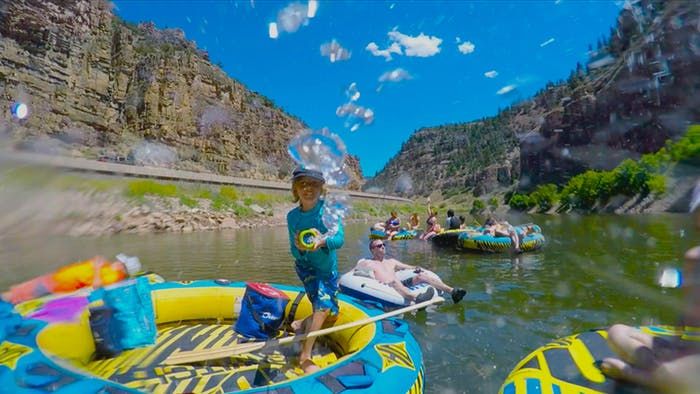
The Definition of a Creek:
A creek is a small, flowing body of freshwater that typically moves through a natural channel in the landscape. Creeks are naturally formed, unlike canals or ditches, which are human-made, but they are not always permanent. Generally, a creek has a continuous or seasonal flow, a well-defined bed and banks, and supports a freshwater ecosystem with plants, fish, and small animals. Compared to rivers, which are typically deeper, wider, and more powerful, creeks are often narrower and shallower, allowing people to walk across or wade through them.
The water in a creek typically flows downhill due to gravity, with its depth and speed varying according to the season or recent rainfall. Creeks can wind through forests, fields, valleys, meadows, and even urban areas, often feeding into larger streams, rivers, or lakes.
However, what makes a creek a creek is not an exact science. There’s no strict global measurement or cutoff that declares, “This is a creek, and this is a river.” Instead, it’s generally based on regional naming traditions and the size in comparison to other nearby waterways. For example, in the United States, a creek typically refers to a small stream that flows into a larger river. In the UK or Australia, however, the word “creek” might describe a tidal inlet or saltwater estuary.
29 Fun, Relaxing, and Educational Creek Activities for Kids and Adults of All Ages:
Have you ever been to a creek? Creeks are natural playgrounds that meander through forests, meadows, and even suburban areas teeming with beauty and life. There are so many ways to play in a creek, and several things you can explore and do. Whether visiting a creek in a local park, going for a swim at one down the street, or exploring one on a hiking trail, there are countless ways to enjoy these peaceful waterways.
Spending time at one of the many spots along several different local creeks is something everyone in the area where we currently live enjoys. From learning about the plants and creatures that live there to enjoying an imaginative adventure, you can always find something interesting to do at the creek.
My family feels fortunate to have more than one creek nearby, each with multiple unique locations along its shores to enjoy. Some spots even have picnic tables. Since there are so many wonderful creeks in our area, we have had the chance to spend a lot of time devising new and exciting creek activities to enjoy during our multiple visits.
The following is an informative guide to the various activities you can do at a creek, ranging from relaxation and recreation to learning opportunities. Whether you’re looking for fun outdoor activities for kids or exciting adventures for adults, there’s something for everyone to enjoy at the creek. Explore, play, swim, relax, and learn in nature’s water playground with these fun creek activities:
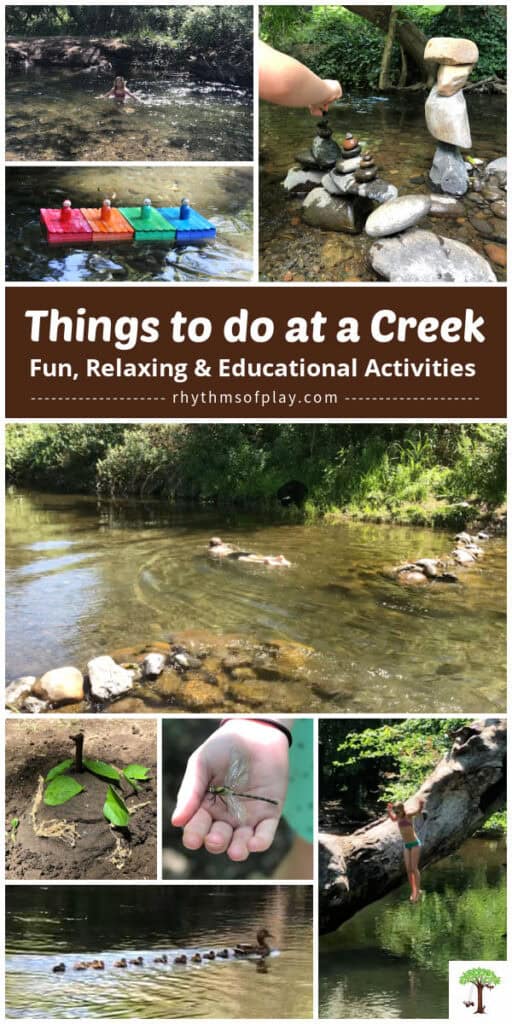
1. Skip Rocks and Stones:
Rock skipping is a creek activity that can be enjoyed year-round if the creek has areas with calm water. Skipping stones is a relaxing, almost meditative activity that can keep kids and adults of all ages busy learning and having fun. Stone skipping can also spark a bit of friendly competition among friends, family members, and fellow creek-goers.
Find a flat, smooth stone and throw it at an angle toward the water’s surface with a quick, flicking motion of the wrist. If you do it just right, it will skim across the surface of the water in a series of skips and jumps. Discover more information about this enjoyable outdoor activity, perfect for the creek, in How to Skip Rocks.
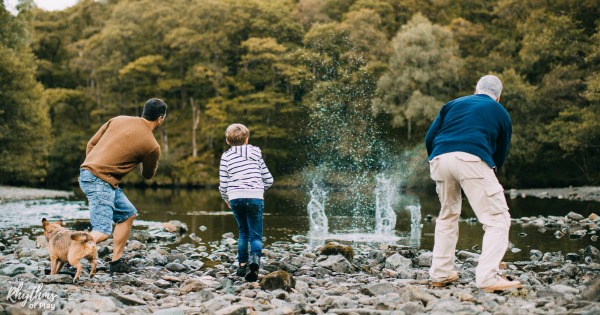
Stone skipping is fun for all ages. This photo shows three generations of family skipping rocks: A father, son, and Grandfather.
2. Swim, Wade in the Creek, and Play in the Water:
One of the simplest pleasures of creekin’ is wading in its calm, shallow waters. This is especially true during the warmer months of the year, such as late spring, summer, and early fall. The cold water is refreshing and feels great on a hot day. Best of all, many creeks have swimming holes in calm water deep enough for even teens and adults to go for a swim.
Always exercise caution around water and ensure children are supervised to keep them safe, especially when toddlers, preschoolers, and other young children are present. There are often strong currents after it rains or during the spring when the snow is melting at higher elevations in the watershed. Even on a calm day in the summer, there can be areas with strong currents that can take even strong swimmers for a ride downstream.
Related: Swimming Safety Tips from an Ocean Lifeguard Mom
Take off your shoes and go barefoot, or wear water sandals and splash around. Water shoes with a good grip help protect the feet and keep you from falling in the water, especially if the creek bottom is full of sharp or slippery rocks. Kids love splashing, exploring the creek bed, hopping between exposed rocks, and watching the water flow over their feet. You can see my daughter enjoying this creek activity in the photo below.
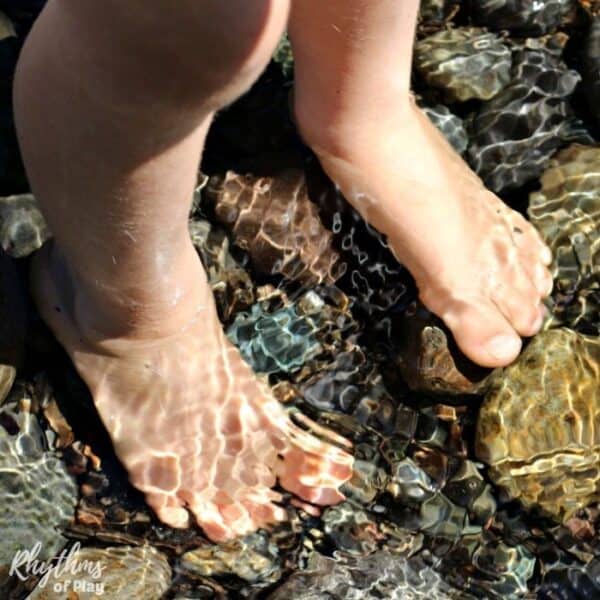
My daughter loves going barefoot at the creek.
3. Look for Animals and Observe Wildlife:
Here’s another creek activity you can do all year. Creeks are bustling ecosystems full of wildlife to observe both in the water and in the surrounding area. You might see tadpoles, frogs, tiny fish, dragonflies, butterflies, turtles, ducks, and even deer coming to drink. A creek shore is also an excellent place for birdwatching. Be quiet and move slowly, sit still, so you don’t scare away any of the wildlife.
Consider bringing a few nature study supplies to the creek with you. A pair of binoculars, a camera with a zoom lens, or even a magnifying glass, will help you get a closer look at other wildlife. Use a field guide or app to help identify the species. You might also want to bring along some goggles, or a mask and snorkel for viewing wildlife in the water during the summer months.
Example of Wildlife Viewing at a Creek:
You can see my daughter observing a Mallard duck and her ducklings in the spring one morning in the photograph below. They had grown accustomed to seeing us, as we often passed by on our daily walk, so they didn’t swim away. You can see an earlier photo of them I took two months prior, at the bottom of the photo collage at the top of the list of creek activities. In that photo, you will notice that Mama Duck had several more ducklings following her that day, and they were much smaller in size. They began diving for food after this photo was taken.
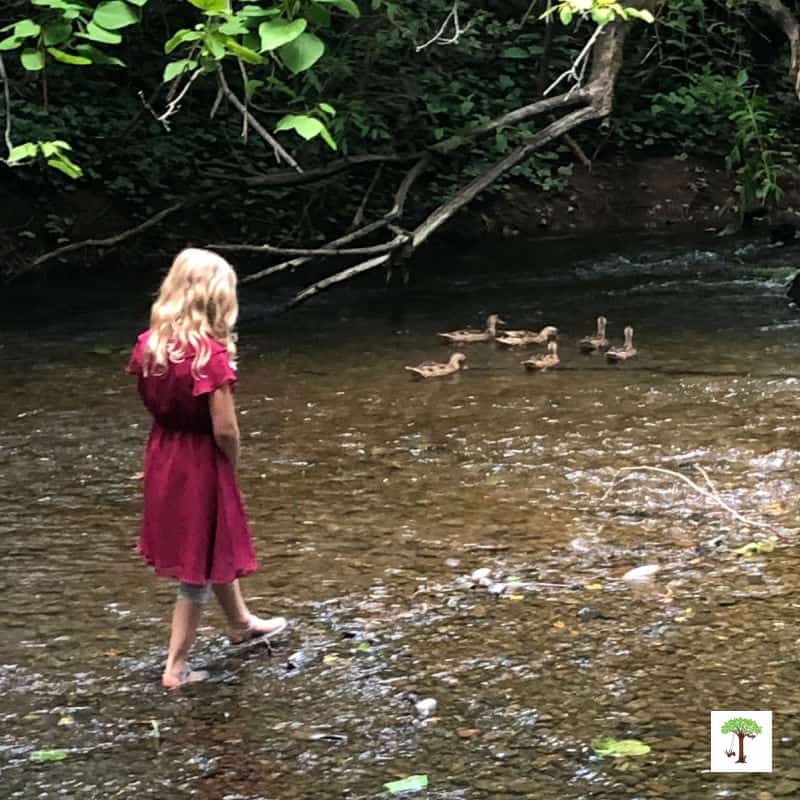
The ducklings were almost full-grown in this picture, but they had dwindled in number since the first day we saw them. (You can see a photo of them taken two months prior at the bottom of the photo collage at the top of the list of creek activities.) As homeschoolers, we are fortunate to have the daily opportunity to learn about animals and their habitats in real time, up close and personal. That day, my daughter’s questions led us to a discussion about the food chain and predators in the wild. Creeks are a fantastic location for in-depth nature study and hands-on experiences like these.
4. Catch and Release Creek Critters:
Use your bare hands (or a small net) and a bucket or a recycled water bottle to explore the tiny world of aquatic life in the creek. With these simple tools, you can catch small creatures, such as tadpoles (shown in the photo below), minnows (little fish), crayfish, mayfly larvae, and explore them more deeply. You may also want to bring along a pair of goggles or even a mask and snorkel if you plan to swim to get a better view underwater.
Another idea is to try to catch the insects and invertebrates that inhabit the surrounding area, like my daughter does. I’m always amazed by what her gentle hands can capture. Look at them, learn about them, and then please gently return them to the water or let them fly away if you happen to catch a dragonfly or a butterfly.
If you try this activity, please practice creek etiquette:
Always be kind to animals, and never take one home or keep it as a pet.
Avoid disturbing their homes, which are often found under rocks and logs.
When you catch them, handle creatures gently and return them to their natural habitat as soon as possible. Small buckets or bottles of water, such as the one my daughter is holding in the photo below, can get too hot for them in a short amount of time. Most creatures can’t survive in these conditions for long, especially if it’s hot outside.
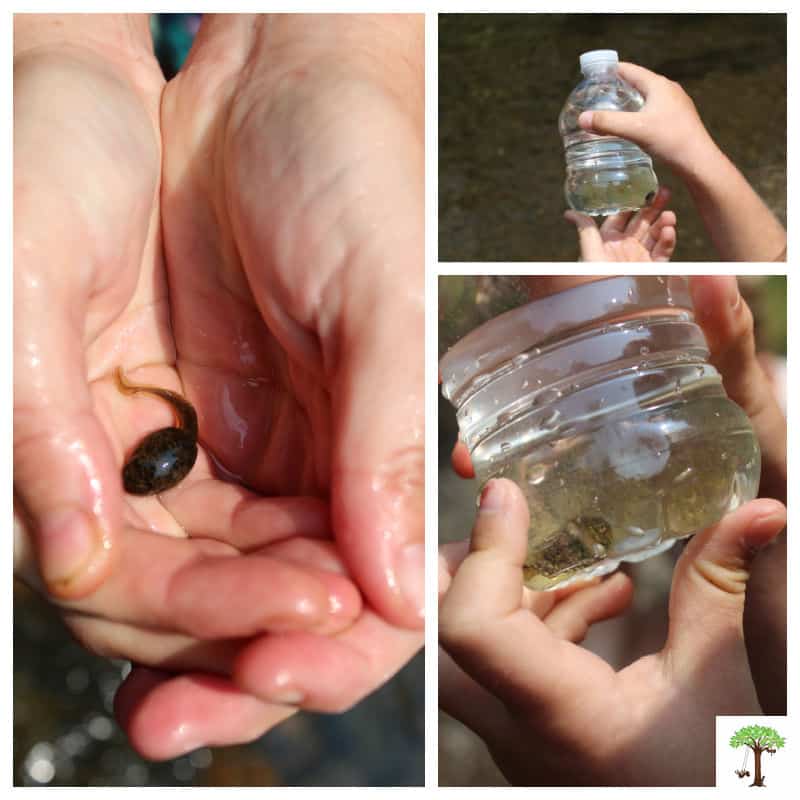
In this photo, my daughter is gently holding a small tadpole and investigating it in a recycled plastic water bottle before releasing it back into the creek.
6. Have a Picnic:
Enjoy a peaceful solo meal by the water, invite a friend, or bring the whole family. Pack a snack or a simple lunch in a cooler bag and sit in a chair, at a picnic table, or on a blanket near a creek to enjoy nature on a beautiful day. If you try this activity, please avoid using disposable plastics, and remember to pack out all trash.
Having a picnic is another excellent activity to enjoy at a creek throughout the year, whether with family, friends, or alone. Listen to the water, watch the birds, breathe in the fresh air, and enjoy the food and company, even if only the wildlife and the serenity of the trees around you. Solo picnics at the creek are a lovely and relaxing adventure that everyone should have the chance to enjoy.
7. Swim Like a Salmon:
If there is a place to swim with a gentle current, do your best to swim like a salmon upstream against the current. Swimming against the current is excellent exercise, but it can be dangerous because, depending on the creek’s speed, it can be exhausting. If you try this gross motor creek activity, ensure you won’t get swept away, run into anything dangerous, or become too tired to return to safety. Keep a close eye on children and be prepared to assist them if they need help.
You can see my daughter in the photo below enjoying this fun creek activity, swimming like a salmon against the current. I was standing in a spot where I could easily assist her if she needed it. Our dog is in the background, distracted by something in this picture, but usually likes to bark at her whenever she’s not touching bottom, pretending to be her lifeguard by informing her to return to safety. It must run in the family, as my husband and I were both ocean lifeguards for 20 years. But it makes sense, without sheep, our Border Collie has become a fantastic child herder, especially when she plays in the water at the creek.
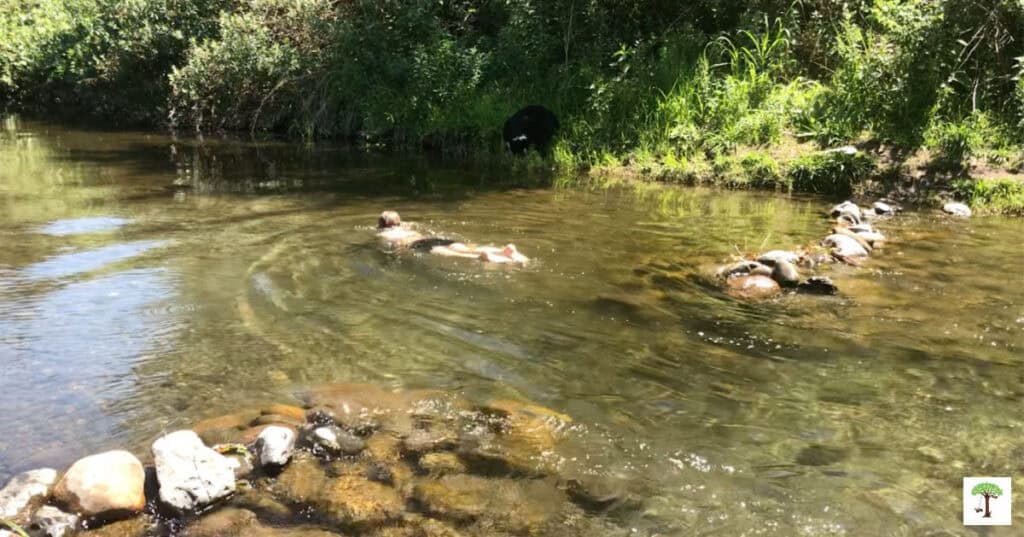
8. Engineer a Partial Dam:
Creating small, partial dams is a fun and educational activity for kids and adults of all ages to do at a creek. Creek activities like this introduce children to the basics of engineering and water flow. If you choose to build a dam, never block off an entire waterway or stop the flow of water entirely. Please dismantle the dam before leaving and ensure that water is flowing correctly to prevent disrupting the natural ecosystem and the well-being of its inhabitants.
In the photo above, you can see my daughter swimming like a salmon upstream through a dam-like structure with a ditch in the middle that other local community members built to provide a current to float down and swim upstream against within a shallow section of the creek. She is touching the bottom of the creek with her hands, about to stand up and prepare to float back down again in the photo. Perhaps that’s why our dog took a moment to eat some grass; lifeguarding and herding children can be exhausting — lol!
9. Build with Rocks, Stones, and Sticks:
Stacking rocks to make little towers or building a mini bridge using sticks and pebbles is another fun way to pass the time at the creek. You can see my daughter putting the final touches on a rock bridge with stone arches and various sizes of rocks and pebbles balanced on top and around it, which she made at the creek one day, as shown in the photo below.
Building partial dams, stacking stones, and constructing small bridges are excellent STEAM educational activities for kids of all ages. Like partial dams, please remember to dismantle these structures when you’re finished, so animals can still access their natural habitat and remain unharmed from the risk of tumbling towers of stones and other disruptions.
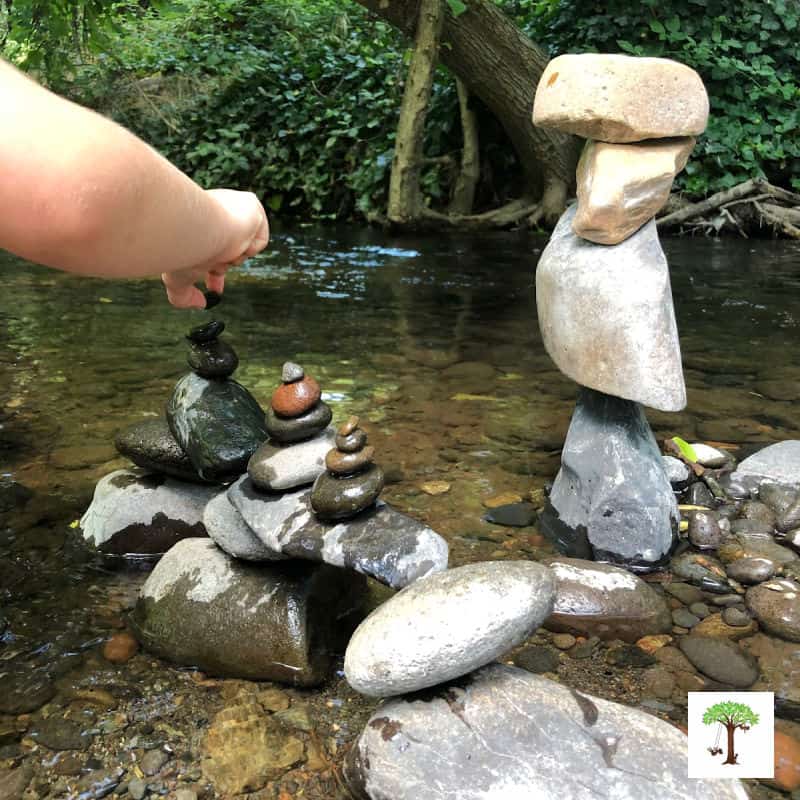
10. Race leaves or Sticks:
Racing leaves or sticks downstream is another creek activity that kids can enjoy all year, especially when the water is flowing quickly. Put a leaf or stick in the water and either time how long it takes to reach a certain point downstream, or place another leaf or stick in the water to race alongside it.
Children of all ages love racing leaves and sticks downstream and compete with each other to determine a winner throughout the year. Not only is racing sticks and leaves fun for everyone, but it is also an excellent creek activity for teaching children about current, the speed of the water in different spots and at various times of the year, and water flow patterns at the creek. Knowing these details can help children navigate the creek waters safely, especially if they decide to try tubing.
11. Go Tubing
If the creek is broad and deep enough, with a steady current, tubing can be a fun and enjoyable way to float downstream. Bodyboards are also great for floating on or riding down a creek. Even if you only go fifty to one hundred yards or so through a section of fast-moving water before hitting an eddy or a shallow section of water. If that’s the case, scramble up the shore and walk upstream to do it over and over again. If you decide to go tubing down a creek, always check the safety conditions first, ensure that young children are wearing life jackets, and have a plan or escape route in place in case someone floats away.
12. Relax on a Raft:
It can also be fun to relax on an inflatable raft or tube and enjoy floating in the creek without going anywhere. This creek activity is best suited for an area with no current. Close your eyes, soak up the sun (or enjoy a shady spot by the creek), listen to the soothing sounds of the water, and allow any stress you feel to melt away with the gentle rocking of the calm water. Just be sure to stay aware so the current doesn’t take you away along with it.
5. Take Photographs of Nature and Wildlife:
The natural lights, reflections on water, interesting rock formations, and wildlife make creeks excellent locations for nature photography. Use a phone or camera to take pictures of flowers, bugs, animals, beautiful rocks, reflections on the water, and the surrounding area. Whether using a smartphone or DSLR, you’ll find an endless supply of subjects and beautiful shots to capture year-round. I’ve taken some of my favorite nature photos at the creek with both of these types of cameras, some of which are featured in this article. The image below features a picture of a turtle on a log, in the bottom left corner, and some Mallard ducks diving for food in the background near the shore within a beautiful creek oasis.
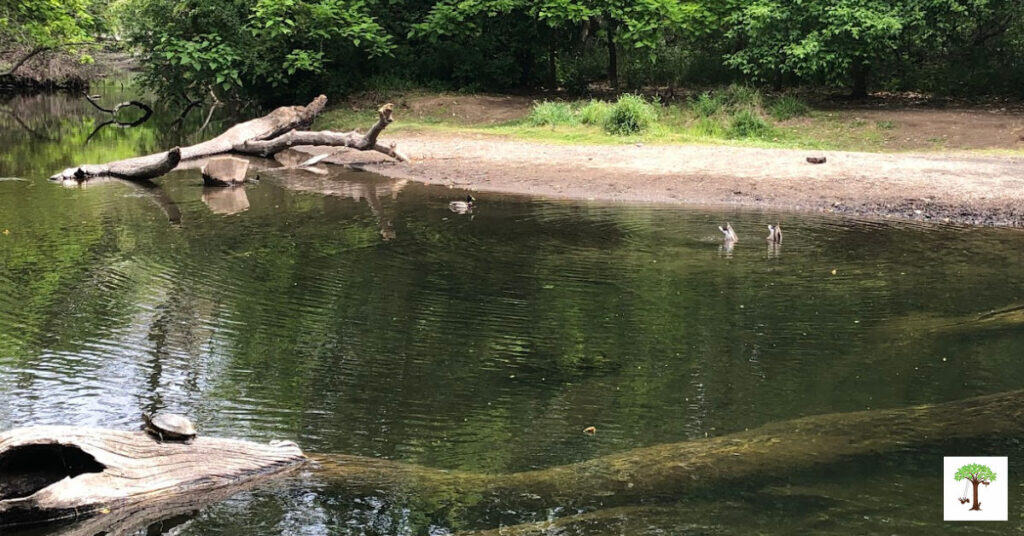
A photo I took of nature and wildlife at the creek, featuring a turtle on a log and ducks diving for food in a beautiful watery oasis.
13. Climb Something fun:
Often, creeks have something fun to climb on in or out of the water. Boulders, fallen logs, and trees can frequently be found near a creek shore, making an excellent natural jungle gym for kids. My daughter loves climbing things, such as trees and boulders, or even up the rocky sides of a craggy creek, so she always manages to find something to scramble around on at the creek.
The log with the turtle on it, along with the other portion of the fallen tree in the background of the photo above, are some of her favorite things to climb at the creek in nature’s playground. After I took the photograph, she climbed up on the log to get a closer look at the turtle. Like the ducks, it had seen her before and learned that my daughter won’t hurt it, so it didn’t try to swim away.
Please supervise children if they attempt this creek activity, as it can be dangerous, especially if they are little daredevils like mine. In the photo below, my daughter is enjoying one of her favorite “sit spots” in a tree by the creek in the spring that she had to climb to reach. Read my tips about climbing trees to learn more about how to climb a tree and some of the benefits of climbing and other risky play activities. You can also see her climbing up a log in the video below. Discover more information about enjoying time in a sit spot in this article about outdoor nature activities for kids.
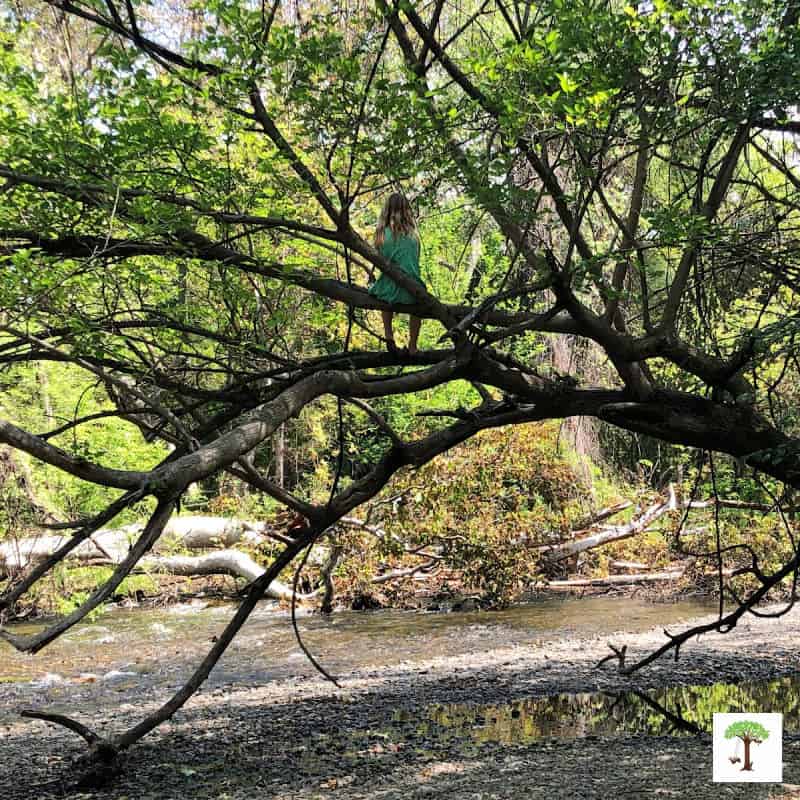
In this photo, my daughter is sitting on a tree branch high above the shore of a creek, in one of her favorite “sit spots” at the age of seven.
14. Jump and Make a Splash:
Often, there is something to jump off into deep enough water in the creek. It’s not always possible, depending on the depth of the creek and whether there’s something like a log, rock, or a short ledge to jump off and make a splash. The jumping zone must be clear of debris, such as branches, logs, and boulders, and free from any objects that could harm a person if they were to touch the bottom after entry. This activity can be dangerous, so please supervise children, conduct a safety check, and exercise caution if you choose to participate.
One of my family’s favorite locations to jump and make a splash was where a tree trunk got lodged over a deep swimming area in the creek. We called it “Jumping Log Beach,” and many other community members of all ages enjoyed swimming at this location, climbing the tree, and jumping from it into the creek as much as we did. Unfortunately, a season of heavy rainfall caused a significant amount of swift-running water, which dislodged the log and carried it downstream after about 20 years of jumping fun. Although it’s no longer there, we still have plenty of pictures, videos, and memories of it. You can see my daughter jumping off it to make a splash from two different spots in the video below, at the age of seven.
15. Enjoy an Educational Exploration:
Spend a day learning at the creek. Creeks offer hands-on educational opportunities for children and adults of all ages. A few are discussed within some of the other creek activities written about within this handy guide. Students of all ages and grade levels, including college and lifelong learners like myself, can learn about geology, biology, environmental science, and other related subjects.
Look for different rock types, study erosion patterns, learn about the water cycle, or test the pH levels of the water. Educational creek activities are perfect for homeschoolers, forest schools, outdoor groups, nature clubs, after-school programs, science projects, class field trips, and summer camps.
16. Allow time for Imaginative Play Adventures:
Children can spend hours in imaginative play along a creek shore. One day, I saw two boys spend hours playing an inventive game, imagining they were on a pirate ship, verbalizing their grand adventures for everyone nearby to hear. I’ve also witnessed my daughter and her friends create elaborate pretend play scenarios over the years, from making pretend food beside the creek to pretending to be different animals doing various things in or around the creek.
Children can also spend hours playing at the creek, fully engaged in imaginative play within a pretend world of their own, like my daughter is in the photo below. When my daughter was young (from three to nine years old), our daily dog walk took us along a trail by a creek. I set aside a few hours every day for our nature walk, allowing her the time she needed to dawdle and do whatever caught her attention. She would spend hours lost in her imagination, and that was exactly where she belonged. Get them outside, and let them play.
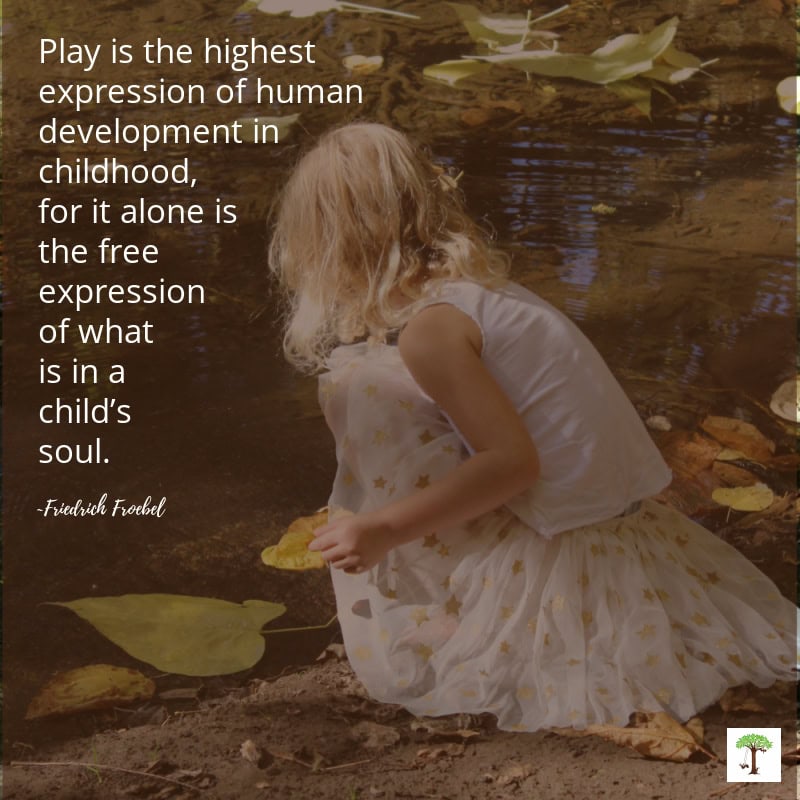
17. Play with Water Toys:
Toys such as toy boats, fish that swim, water soakers, balls, innertubes, rafts, and other items that float make great water toys at the creek. Make a popsicle stick boat, or bring along some of your kids’ favorite bath, pool, or beach toys, such as a shovel and bucket.
If you bring toys to the creek, please ensure that you take home everything and leave the area as you found it when you leave. Any toys lost or left behind at the creek become trash and litter, which is unhealthy for the waterway and the surrounding environment. Please do your part to keep nature as you found it.
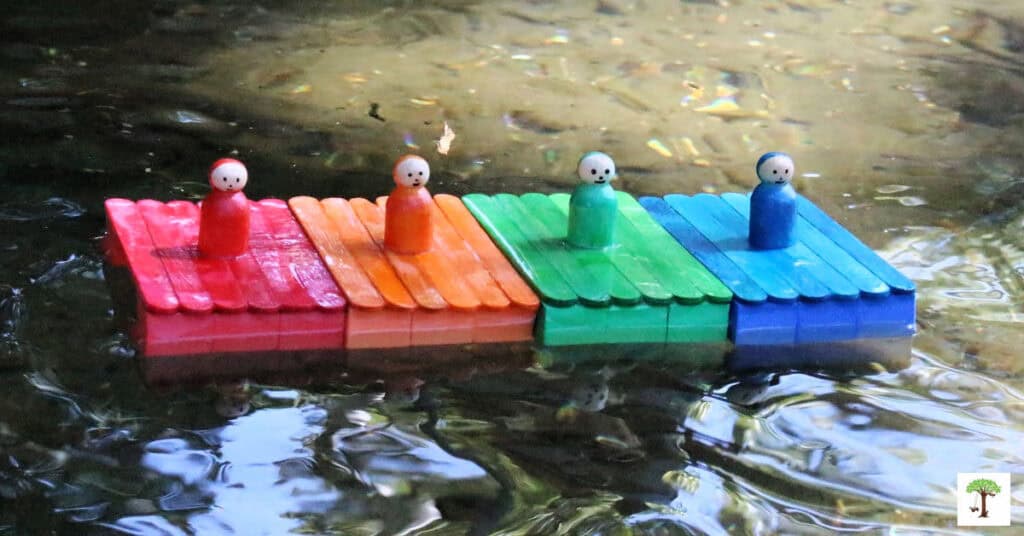
Here are some popsicle stick boat crafts my daughter and I made and brought to the creek to play with. (The peg doll on top is cute, but optional)
18. Throw a Stick for a Dog:
Most dogs love to run after a stick and jump into the creek to go for a swim, to chase down a stick thrown for them. Some will even bring you one with a look of excitement and anticipation, hoping you get the hint. Look for a good-sized stick that floats and toss it into the water. Then have your dog fetch it for hours of creekside fun. Our dog loves this activity!
19. Go Fishing:
If the creek contains fish, such as trout or bass, it can be an excellent spot for catch-and-release fishing. Check local regulations before you cast a line. It’s exciting for children of all ages to catch a fish, but it’s even more fun to let it go and swim away.
20. Make a Mud Pie or Sand Food:
This isn’t always possible, depending on where the creek’s water is flowing and the type of environment surrounding it. My daughter loves making sand or mud pies, cakes, and all sorts of other mud food by herself or with her friends at the creek.
After she has created a basic structure, she decorates it with various natural craft supplies, such as sticks, leaves, and pebbles. She made a mud pie cake one day that she decided looked more like a gnome home or a fairy house once she was finished. You can see this magical mud and sand creation, complete with natural decorations, in the photo below. Read about making mud pies for more information.
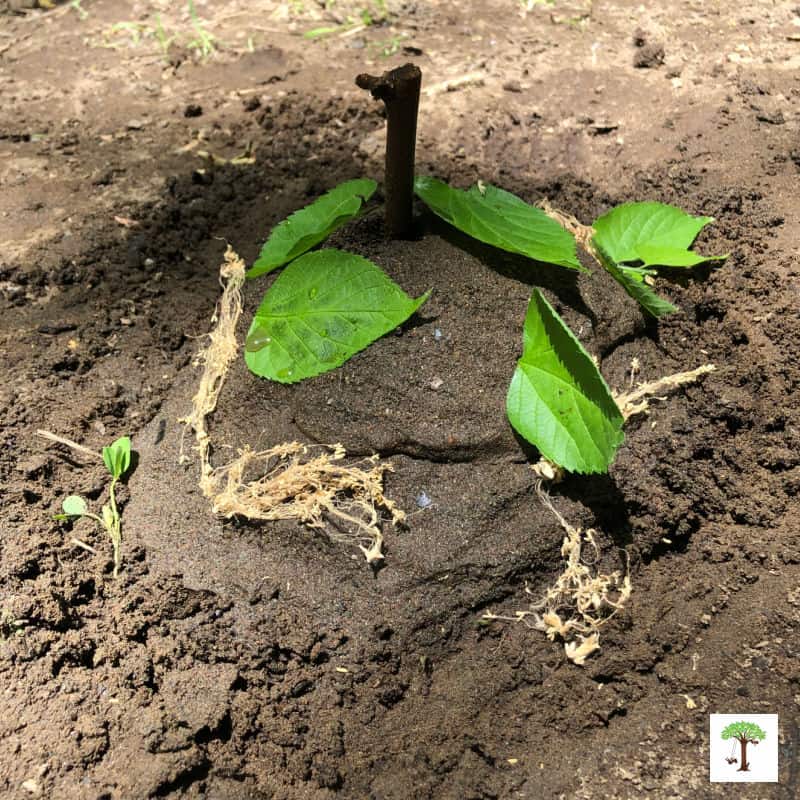
21. Build a Fairy House or Gnome Home:
Make a house for a fairy or a place for a gnome to call home with natural materials at the creek. My daughter has made several of these adorable creations. Use your imagination with the natural supplies you have available to build something unique, like the fairy house my daughter made in the photo above. Mud, sand, sticks, rocks, leaves, flowers, pebbles, and many other natural materials can be used to construct something magical and unique for a fairy or a gnome.
22. Collect Natural Items for Nature Crafts:
Collect natural items around the creek to make nature arts and crafts. Grasses and pine needles can be used to weave baskets, and acorn caps can be made into lovely necklaces and ornaments with a marble sitting inside. Almost anything you can find in abundance, such as rocks and leaves, can be made into a mandala.
One day, my daughter and I saw numerous freshwater shells in the creek, which we bought home to make these adorable owl crafts. Gather a few items to make crafts with, but please don’t take too much or strip Mother Nature of her natural resources from any one area.
23. Make a Nature Mandala on the Shore:
Collect a few natural items to make a mandala along the shore of a creek. My daughter created the nature mandala in the photo below, beside a creek, and left it there for others to enjoy. Mandalas made of stones or rocks are also fun to design at a creek. For more information about this form of art, read this post on making nature mandalas.
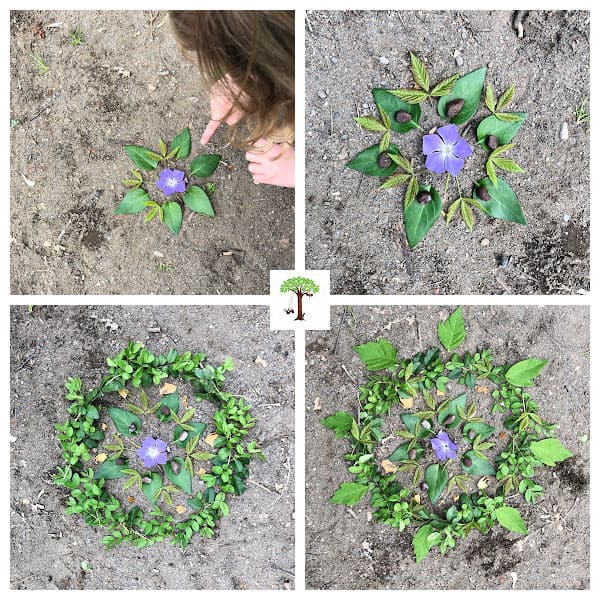
24. Enjoy a scavenger Hunt:
Observe a few things at the creek and challenge participants to find them and point them out to you. Make a quick list of anything you see, or call them out one by one and encourage children to find them.
Natural items to hunt for can include a stone to skip, a tadpole, a flying bug, a little fish, someone swimming, a floating stick, a plant growing in the water, a feather, algae, or anything else that catches your eye. Alternatively, you can gather a few natural treasures and challenge participants to identify and collect the matching items. Read these tips for designing a nature scavenger hunt for more ideas.
25. Relax, Listen, and Connect with the Natural World:
Sit quietly and listen to the soothing sounds of the water, the birds, and the wind in the trees to relax and connect with the natural world. Spending time in nature offers numerous benefits for our physical, mental, and emotional well-being, including boosting our mood and alleviating stress. Listening to the sounds of nature at a creek increases this effect exponentially. Close your eyes, breathe deeply, and allow a sense of peace to wash over you.
26. Write in a Nature Journal:
Bring a notebook or journal to write down what you see, hear, and feel at the creek. You can write a story or a poem, list the plants and animals you see, or write about a specific discovery, experience, or feelings at the creek. For more information, read these tips about making and keeping a Nature Journal.
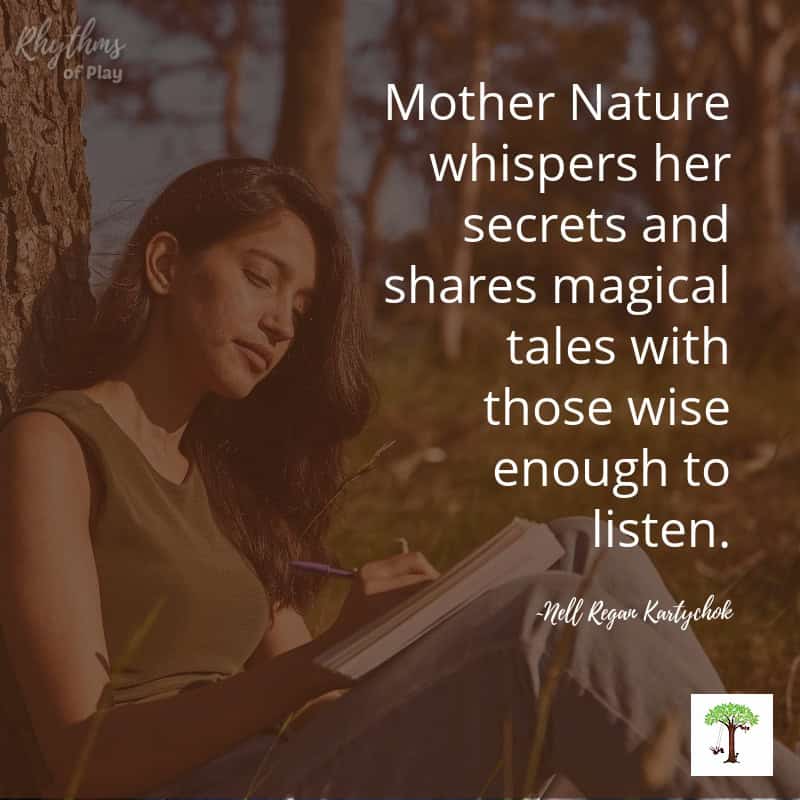
27. Draw or Paint What You See at or in the Creek:
Bring a sketchbook, colored pencils in a pencil case or a portable watercolor set, and allow the creek to inspire you. Draw or paint anything you observe that catches your interest or fancy. Many people enjoy using their nature journals for this purpose.
Use your art supplies to draw frogs, plants, leaves, rocks, birds, a flowing creek, the surrounding area, or anything else you find interesting. Sketching or painting things you see in the natural world is a great way to hone your observation skills, practice mindfulness, and learn more about the subject matter you are drawing or painting.
28. Sit in Meditation:
The sound of running water is naturally calming, making creeks an ideal place for mindfulness exercises, such as meditation. Find a comfortable spot to sit, breathe deeply, and allow your thoughts to flow downstream, drifting away like the creek water.
29. Be a Creek and Natural Waterway Protector:
Follow the guidelines below to care for the Earth and protect our natural resources for generations to come:
Use chemical-free, reef-safe sunscreen: The chemicals in sunscreens that you spray on are particularly harmful to the environment. The chemicals in most sunscreens can harm the ecology of our waterways and their aquatic inhabitants. Please choose a reef-safe option to limit damage to watery worlds.
Don’t use soap or other chemicals near the water: These can harm waterways and their local inhabitants far and wide. Remember, all water leads to the sea.
Be gentle with animals and plants: Harming the plants and animals in and around the creek can devastate the local ecology. Please be mindful.
Please don’t leave anything behind: Collect everything you bring with you and pack it out, including towels, clothes, toys, and especially plastics and hazardous trash, such as diapers.
Pick up litter for proper disposal: Keep the creek clean and enjoyable for everyone by collecting any litter you see and disposing of it properly. I like to bring a recycled bag for this purpose to pack out my trash and any other litter I see.
Fun Things to Do at a Creek: Activities for Kids and Adults
My family has spent many days enjoying creeks near and far during the spring, summer, fall, and even winter. As you can see from the list of creek activities above, there is always something to do at the creek, no matter the time of year. Creeks may be small, but they are mighty in the experiences they provide.
From playful splashing to peaceful reflection to educational activities, these freshwater havens invite all of us–young and old–to slow down and connect with nature. Whether you’re seeking adventure or tranquility, there’s something for everyone to do at the creek.
Get the kids outside to play in a creek with these water activities and fun things to do along the shore. If you don’t know of a creek near you, call your local parks and recreation department. They will most likely be able to point you in the right direction. You might also enjoy these nature activities or the outdoor activities listed below.
When you visit, please respect Mother Nature’s playground and the environment. Leave no trace, avoid disturbing wildlife unnecessarily, and refrain from using soaps or chemicals near the water. Thank you!
Learn more about Nell Regan Kartychok, author and photographer of creek activities HERE, and Rhythms of PlayHERE!
Other Outdoor Activities for All Ages:
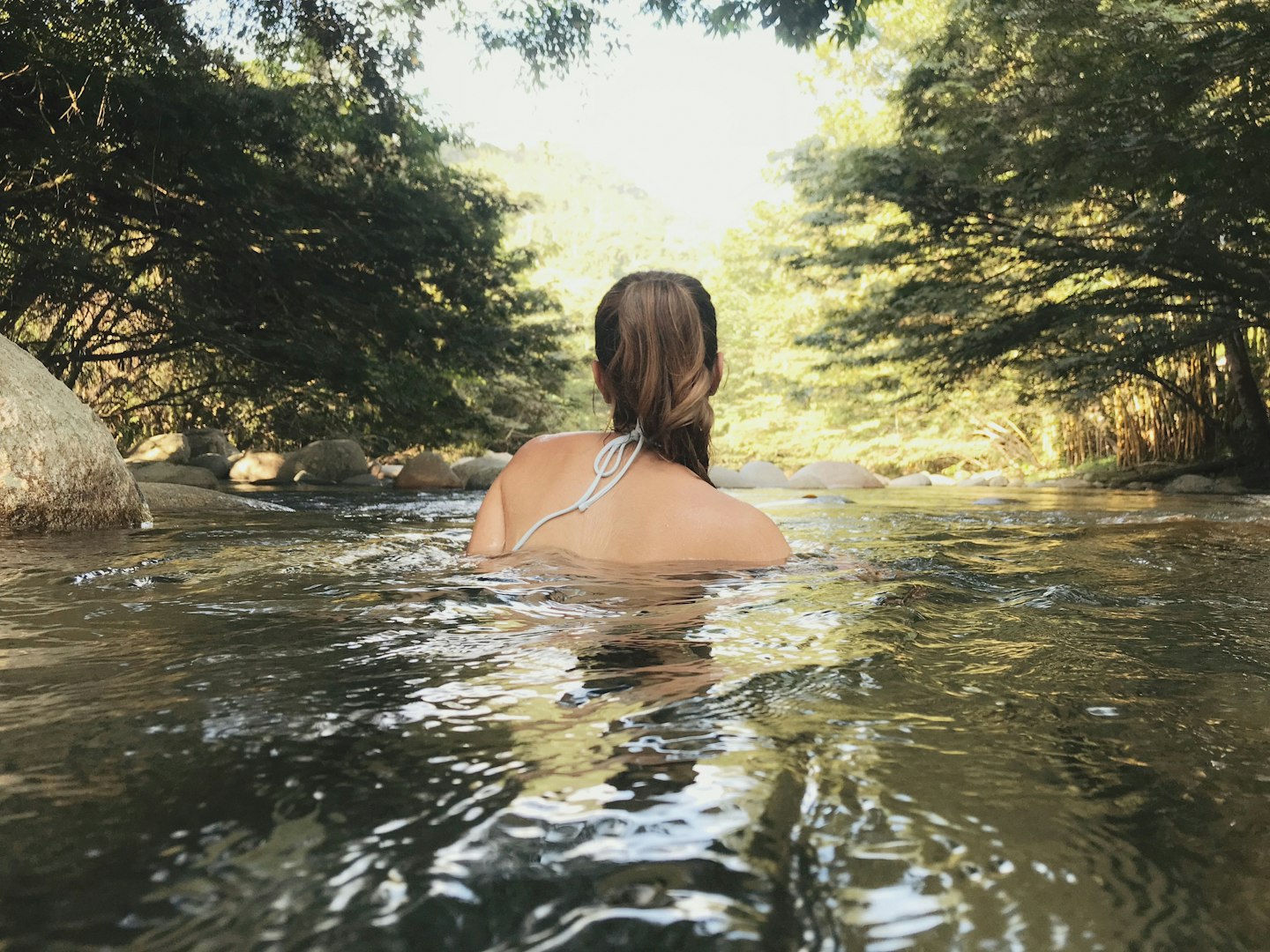
Superscript
Exploring Waterfalls and Rivers
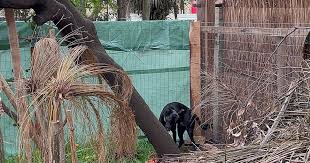
If we ever need an adventure the kids are guaranteed to enjoy, we always pick something where they can play with water. It doesn’t have to be a big hike to a waterfall, but if there is a waterfall then it’ll definitely help with motivation! It can be just as fun to find a dam, a small lake, or walk to a waterfall. Maybe there’s a large river in your area, but there has to be somewhere the river is small and safe to play around – going to the source of a river is always educational too.
Saturday Snapshot: River Rock
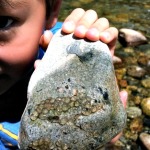
Welcome to “Saturday Snapshot,” a weekly feature that highlights photos we take as part of our seasonal nature photo scavenger hunts. The List: The 2013 Summer nature photo scavenger hunt (You can see our complete collection of #summernaturehunt photos on Instagram and Pinterest.) The Find: A smooth rock The Backstory: The Big Explorer uncovered these eggs under a … [Read more...]White water rafting
If surfing doesn’t get your heart pumping, why not try white water rafting? There are some awesome natural rapids to be found on our rivers where you can enjoy stunning scenery and rub shoulders with local wildlife. With different classes of white-water rivers in the UK, anyone from a completely inexperienced rafter to an extreme adventurer can find their own shot of adrenaline.
Fun river activities for families
Riverside Bingo
Where there's water, there's wildlife! Some of the best areas to spot nature in the UK are along our riverbanks. An important habitat for birds, you can expect to see ducks like mallards, tufted ducks and shovelers, as well as mute swans, kingfishers, moorhens and coots.
Small mammals like otters, water voles, water shrews and brown rats can be glimpsed dipping in and out of the reed beds, while in the water itself, you might spot fish such as brown trout, eel, stickleback, minnow, pike and perch – look out for the tell-tale rings on the surface of the water after a fish has leapt into the air before plopping back in.
For a fun way to discover a host of curious creatures with your kids on your next river walk, download our Riverside Bingo game by clicking the button below, and see who can cross off a line or get a full house first!
River craft activities
It doesn’t matter where you go on a family walk, kids always return home with a pocket or two full of natural treasure. So why not make the most of their bounty and create some colourful artwork? There are all sorts of arts and crafts you can make using items you’ve found beside the river like stones, flower petals and feathers.
You could assemble little twig rafts using feathers or leaves as sails and race them down the river, make fairy crowns from fallen leaves, or collect and press flowers to make pretty pictures. Gnarled tree stumps are great for making rubbings on recycled paper with crayons, and smooth river-worn pebbles make perfect bases for painting on – you could even transform sticks, leaves and foliage into the paintbrushes!
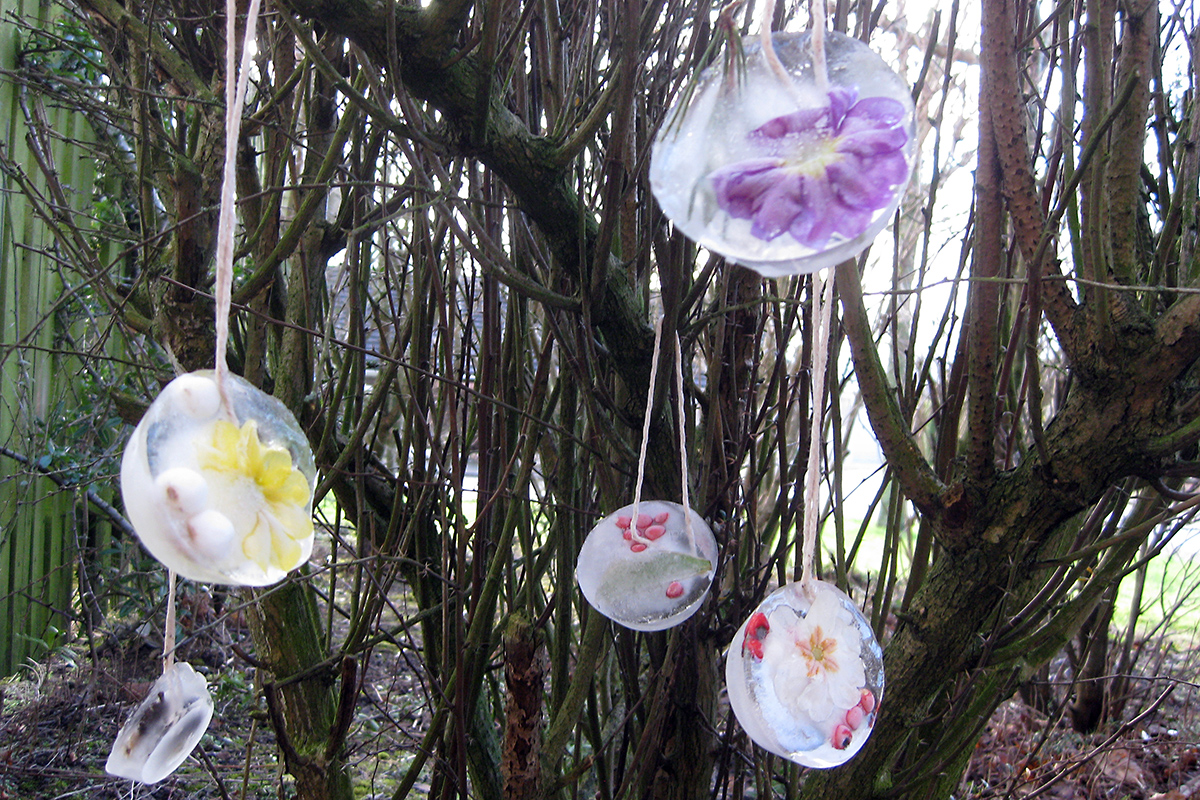
Ice art
Create something beautiful from water
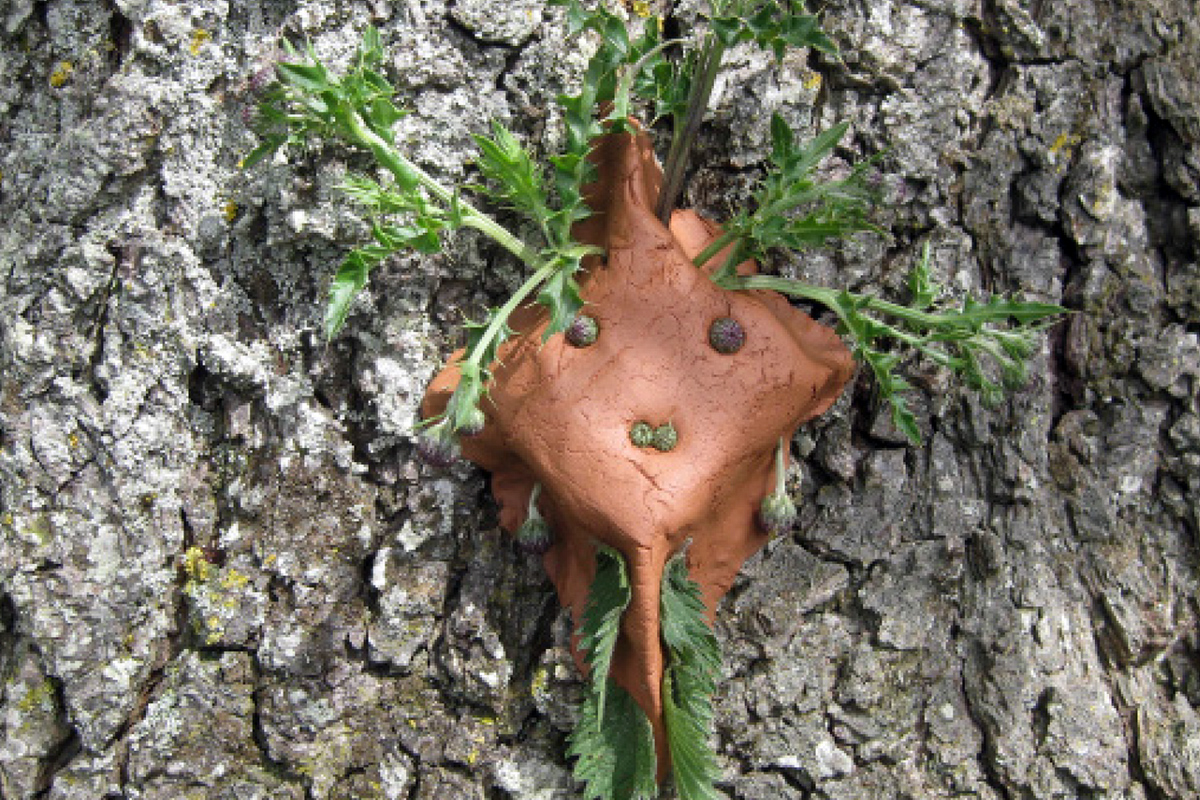
Mud monsters
Make a monster out of natural materials
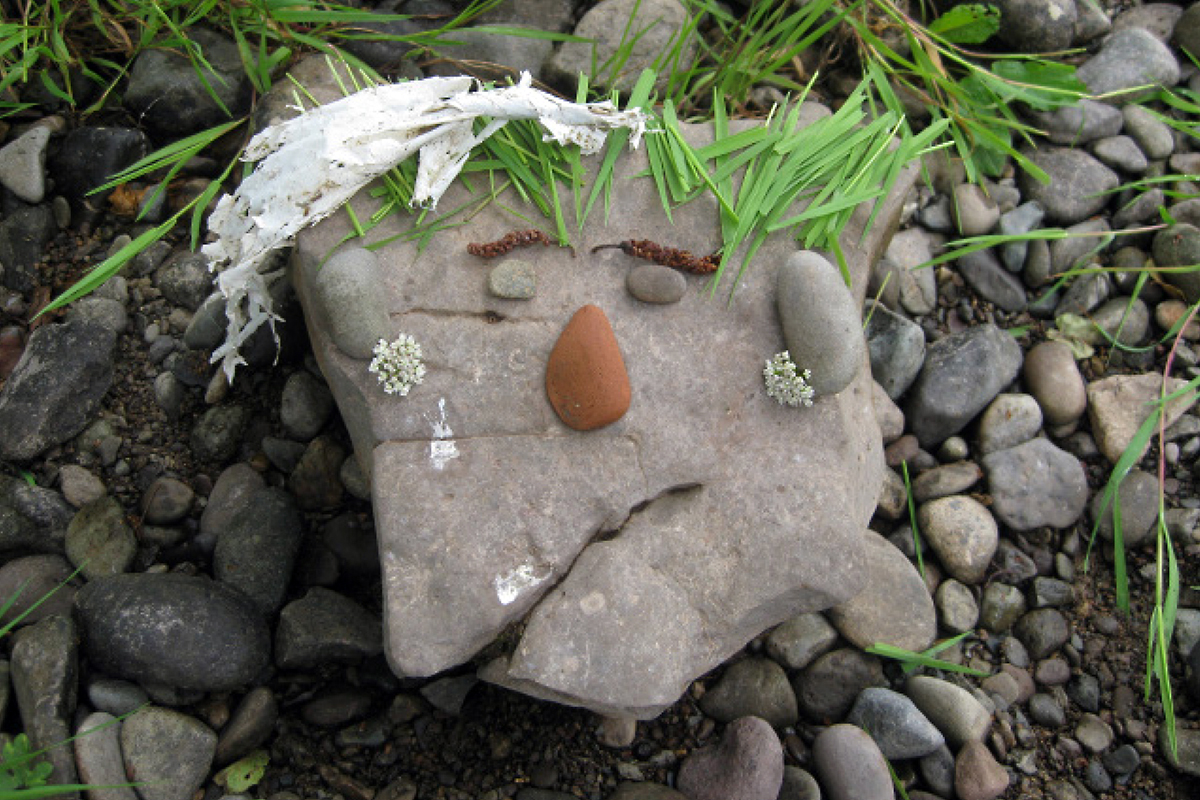
Nature faces
Find natural materials to create a face
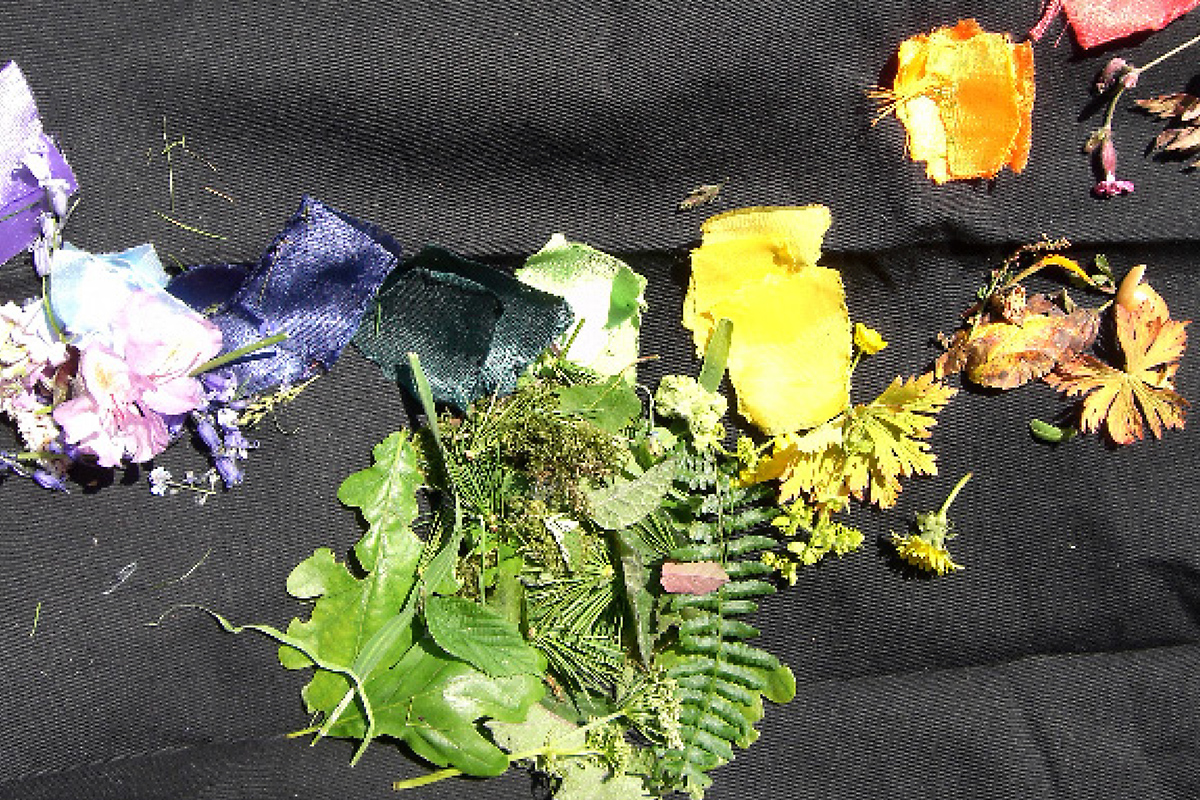
Rainbow walk
Can you make a rainbow from natural things?
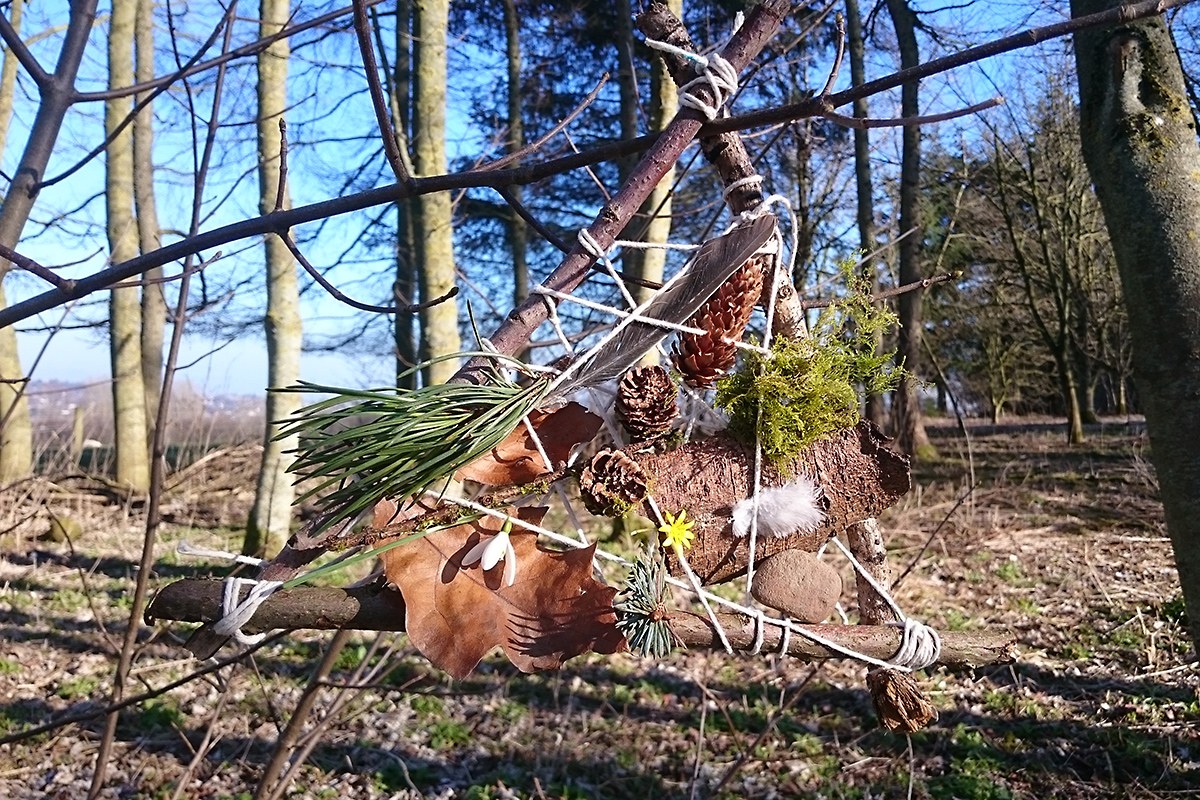
River Woven Memory Catcher
Make a lasting reminder of your visit
River dipping
There’s a hidden world of amazing wildlife living beneath the surface of our rivers, so grab a tray and a net and get dipping to see what you can find! Not only is river dipping super fun, but it is also one of the most educational river activities on our list. It’s a chance for kids to study the river in detail, learn about its biodiversity and discover how important it is environmentally.
Imagine the excitement on their faces when they catch a great diving beetle, an alien-like dragonfly nymph or a wriggly flatworm. The RSPB has put together a brilliant step-by-step guide to help you with your watery adventures, and for added fun, little ones can practice drawing their identified critters before they release them back into the river.
“Rivers know this: there is no hurry. We shall get there some day.” –
Winnie-the-Pooh
Poohsticks
Young or old, we all love Winnie-the-Pooh. Originally invented by the lovable bear himself in A.A. Milne’s book The House at Pooh Corner, the traditional game of Poohsticks has kept children entertained for generations and is widely regarded as one of the simplest and best river activities for kids.
So, how do you play Poohsticks? First things first, find a bridge over a river and hunt out some good-sized sticks. To tell each other’s sticks apart, you could decorate them with natural materials such as flowers or leaves. Determine which way the river’s current is flowing and stand on the side of the bridge that has the water running towards you. Line up, side-by-side, hold your sticks over the edge of the bridge at arm’s length and on the count of three drop your sticks into the water. Then, run over to the other side of the bridge to see whose Poohstick emerges first, the fastest wins.
A good spot to play Poohsticks would be the original bridge in East Sussex’s Ashdown Forest where the game was invented by Winnie-the-Pooh. But to be crowned World Poohsticks Champion, you need to head to Witney in Oxfordshire, which hosts the annual championships!
Eeyore’s top-secret tip: “You just have to let your stick drop in a twitchy sort of way”.
Feed the ducks
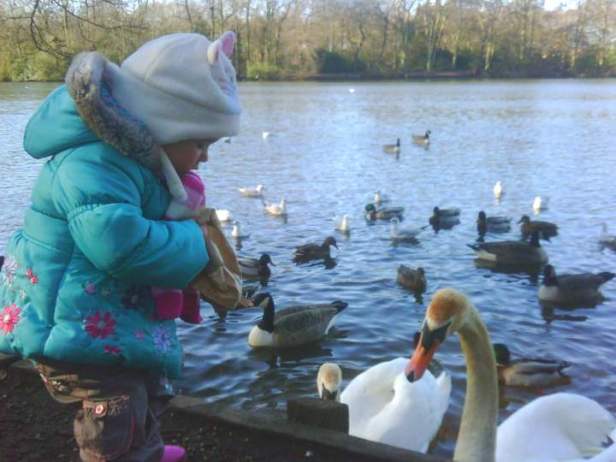
One of the top riverside traditions when visiting as a family is to fill a bag with some bread and feed the ducks. But did you know that bread – especially white bread – is BAD for them? For starters, bread is not very nutritious for waterfowl like ducks, swans and geese, too much of it can lead to weight gain and malnutrition. So, what can you feed the ducks with instead on your next river walk?
Try these alternatives for a healthier lunch:
Duck feed pellets
Grain and birdseed
Chopped vegetable peelings
Porridge oats
Defrosted peas
Chopped lettuce
We also recommend avoiding the crowds and spreading the love by visiting another family of ducks who may need some new friends.
Pure thrill-seekers should head for the rapids in early spring or after heavy rainfall when some of our UK rivers are graded a challenging 4 or 5, while those looking for something gentler could try rafting in the height of summer when many rivers are graded 2 and 3, with slower flowing water. If you’re eager to grab a paddle, some of the best rivers to make a splash on are the River Tay or Dee in Scotland, the River Wye, Usk or Rhondda in Wales, or the River Allen in Northumberland.
River tubing
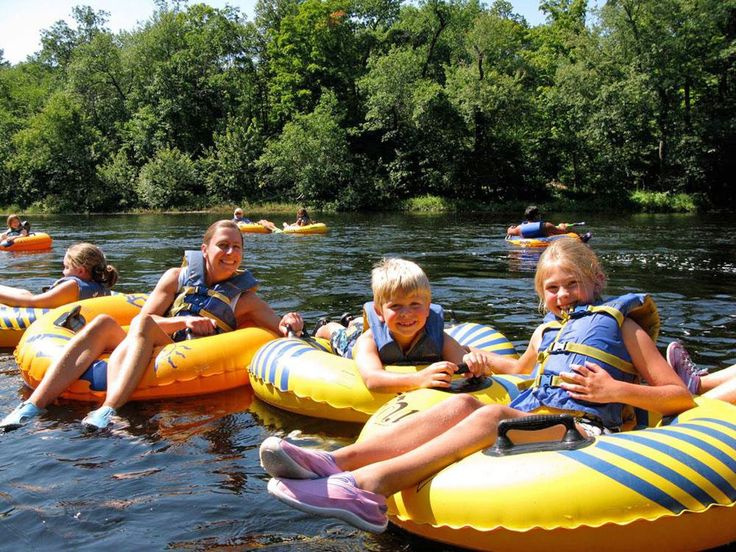
Splash, float and jump your way down the rapids with river tubing. One of the most hilarious water sports you can do on a river, grab your pals and descend a river rafting run, whilst sitting within a specially designed tube with your bottom in the water. As you navigate the many twists and turns of the river, you’ll very much resemble a group of turtles on their backs but it’s a lot of fun – be prepared to get wet and possibly fall out mid-rapid! Or if you’d like to discover more exciting river activities for groups, read our guide to Great British water sports.
Wild swimming

Wild swimming in the UK’s rivers is a skin-tingling way to wash away stress and find freedom in nature. Said to boost our levels of ‘happy’ hormones, as well as improve our circulation and immune system, taking a dip in a river is a wonderful activity to share with your partner.
Many rivers across the UK are great spots for a little wild swimming. The River Dart in Devon has tempted swimmers for decades with its clear waters, particularly outside the village of Staverton. The unspoiled Grantchester Meadows in Cambridgeshire offer a multitude of relaxing places to dive into the River Cam surrounded by greenery, or if you fancy joining the kingfishers on the River Thames, the Pangbourne banks are a bucolic setting. Other celebrated swimming spots include Claverton Weir in the River Avon, the entirety of the River Stour in Kent, the River Ouse in the Sussex Downs, and the River Usk in Wales.
Read our blog on the best wild swimming spots in the UK for more top places to bathe in the wild, and always keep in mind that rivers do pose hazards – be sure to check the current, gauge the depth and watch out for reeds before you jump in.
Fishing
Fishing in UK rivers is one of the top ways to relax in the great outdoors. Whether you are new to the sport or a seasoned professional, it’s a chance to unplug from the distractions of daily life and enjoy the sights and sounds of nature. It’s also said to reduce stress, improve concentration, and increase your vitamin D intake, even when the skies are grey.
Before you set out on a fishing trip, you just need to check whether it Is legal to fish in your chosen river and whether you need a licence or a day-ticket. Some of our favourite fishing rivers in the UK include the River Wye in Wales, River Don in Aberdeenshire, the Rivers Burn and Ure in North Yorkshire and the River Camel in Cornwall.
Browse our guide to the Great British fishing lakes and rivers for more super fishing spots and tips for keen anglers.
Bird watching
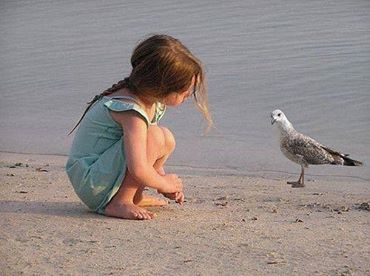
It’s not just fishermen who come out to play when the sun shines, our rivers are home to a myriad of different bird species. From shimmering flocks of wading birds to the dazzling flash of the blue and orange feathers of a darting kingfisher, there is plenty to see on a stroll along the river.
Come spring, reedbeds and riverbanks come alive with the chattering songs of warblers, and little fluffy ducklings, cygnets and tiny coot chicks are a common sight. Look out for herons diving into the water for fish, listen for the honking of Canadian geese, and marvel at the dippers seemingly walking on water with their unmistakable big white bibs. And when autumn rolls around, thousands of migrating ducks, geese and swans arrive from Europe and beyond, so there is always something worth bringing along your binoculars for.
Discover the best times of year to birdwatch with our guide and if there’s a bird you’d like to put a name to, check out the RSPB’s handy online species identifier.
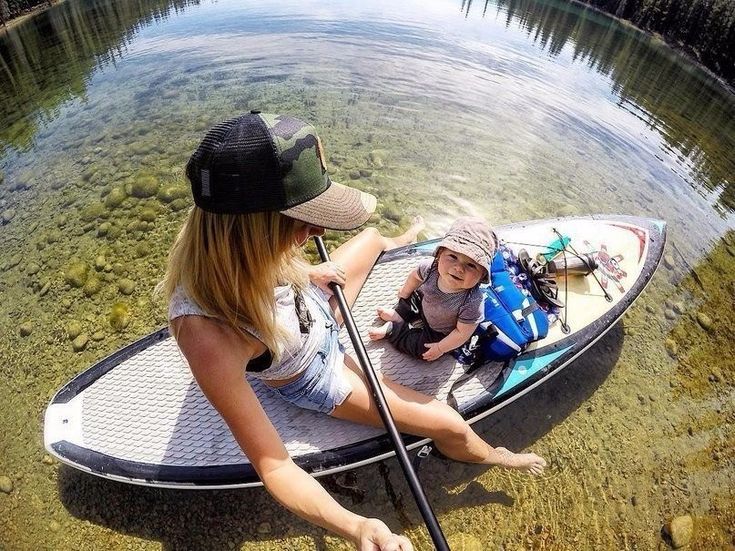
Stand-Up Paddleboard
Adventure level: Low-Medium (depending on your balance and core strength)
If your kids are a little older, try hitting the water on stand-up paddleboards (SUP). Try SUP at Palmer Lake, Prospect Lake, Monument Lake, Quail Lake or any of the reservoirs around Pikes Peak. You can also try a SUP yoga class. I did that one time in Omaha, and it’s a mix of peacefulness and quite a workout trying to stay balanced.
River safety
There are so many fun ways to enjoy our rivers, but it’s important to stay safe while doing so. Here are our top tips for river safety:
Keep children away from the water’s edge and stick to the footpaths.
Don’t jump or dive in as the depth may vary and there can be unseen hazards.
Don’t swim near weirs, locks, pipes and sluices. These and some other water features are often linked with strong currents.
Be sure that the river is safe. Give yourself an easy route in and out of the water, look for currents, fast-moving water and make sure it's not too deep.
Inland waters can be very cold, no matter how warm the weather is. Those going into cold water can get cramp and experience breathing difficulties very quickly.
Keep a look out for boat traffic. Boaters, especially on larger vessels, can find it very hard to spot swimmers.
Beware of weeds – you can get tangled and trapped in weeds growing at the bottom of the river.
Never boat or swim alone.
Leave things as you find them – take your rubbish away with you and don’t take any creatures home as they need the river to survive and thrive.
10 Ideas for Water Play at the River
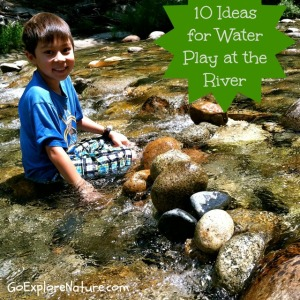
Summer was made for playing in the water. Which is why I’ll be talking about just that for the next few weeks. Today it’s all about water play at the river, next week the beach, and lastly, in the backyard.
The focus here isn’t on adventuring into the water for sport (like swimming, rafting or tubing). Instead it’s on simple, unstructured play.
Staying safe around rivers
While nature always has the potential to create unexpected hazards, a little common sense will get you a long way. When you’re around rivers with young kids:
Pick kid-friendly places to play. Opt for shallow areas where you can see the bottom. Stay near the rivers’ edge and look for natural pools or small areas surrounded by rocks and away from the current.
Do not leave kids unattended. I know I’m a little overcautious in this area, but I think it’s too important not to be.
Stay clear of swift-moving water. Avoid whitewater (where streams flow swiftly over rocks) completely.
Don’t drink the water. And wash hands with soap and water after you play to prevent any potential water-borne illness.
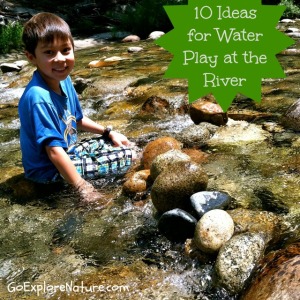
1. Splash!
Use hands, feet, sticks – whatever it takes to make a splash!
2. Throw rocks.
Make it game by seeing who can throw a rock the farthest or make the biggest splash.
A word of caution about throwing rocks with kids. Set up a few ground rules before you get started. Decide where it’s OK to throw rocks (hint: away from others) and how big a rock is too big.
3. Fish.
All you need is a stick and a long shoot of grass to create a fishing rod. Can you spot any fish?
4. Practice skipping rocks.
A variation on throwing rocks that older kids may enjoy, skipping rocks is actually a lot tougher than it looks. You need to find just the right rock and the right throwing angle to get it right.
5. Float a boat.
Use natural materials to make a boat. Try bark, sticks and leaves for sails. See how far your boat can make it on the current before it sinks.
6. Build a dam.
How good a beaver would you make? Use rocks to try to dam up a small area and find out.
7. Search for signs of wildlife.
We’ve spotted water bugs, spiders and webs – even larva eggs under rocks (accidentally, that is). There’s plenty of wildlife riverside as well, like butterflies and birds.
8. Go on a rock hunt.
River rocks come in all shapes, size and colors. See how many different kinds you can discover.
9. Practice your river crossing skills.
This one depends a lot on how safe and practical it is to cross the river during your visit. But if the conditions are right, it can be a great way to improve kids’ balance (and judgment) skills. Can you cross without getting wet?
10. Create stacked rock sculptures.
Get artsy by creating your own stacked rock sculptures right along shore. The varied shapes, sizes and colors of river rocks make for endless possibilities.
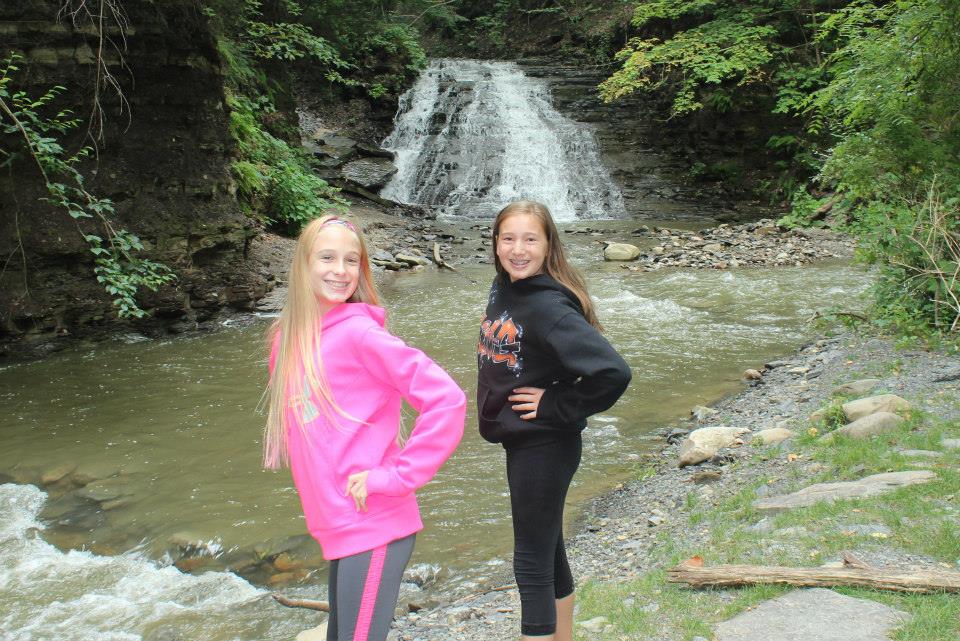
My helpers- Thursday, June 30, 2017
Most waterfalls are usually surrounded by fabulous hiking trails and have swimming areas at the bottom of the falls. With all that activity you may want to make it an overnight camping trip. The state of New York, Colorado and Florida all boast that their waterfalls are the best. So what is a family to do? …Visit them all until you have developed your own ideas as to which is best!! Don’t forget to pack raincoats and super grip shoes when you go.
How to Find Waterfalls In Your State:
Google is certainly your friend here- just searching for “waterfalls in NY state” brings up a list of images of waterfalls in New York as well as a host of articles on the best ones to visit in different regions of the state. (It certainly helps that we live in a state with lots of waterfalls!)
A great article to check out is this one on The Most Jaw-Dropping Waterfall In Every State! Use it to research waterfalls near your summer vacation destination or located in states that are within a few hours drive of where you live!
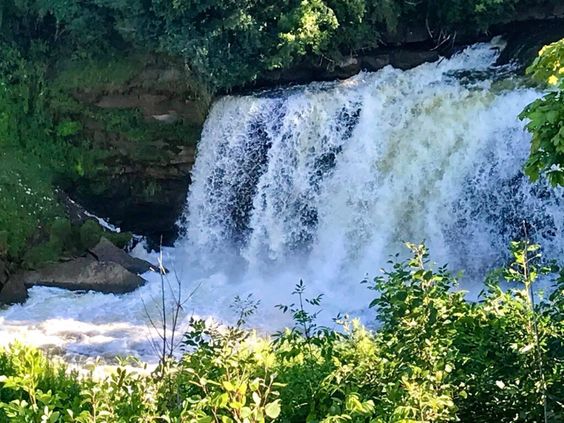
Accessible Waterfalls for People Using Wheelchairs, Strollers or Walkers | Adventures in New York
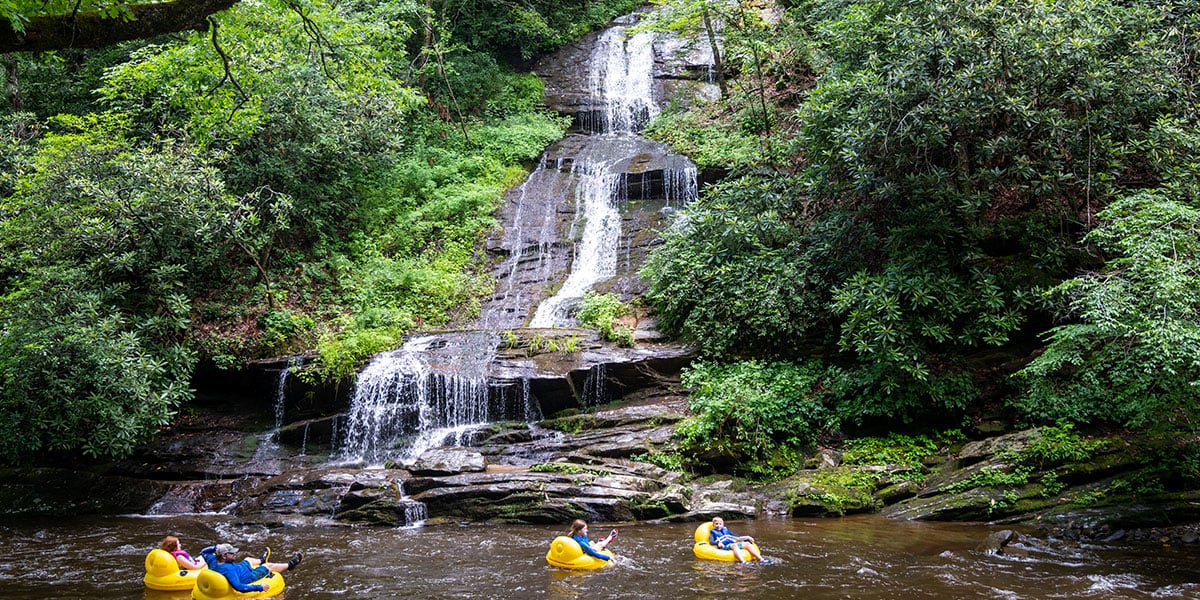
When observing a rivers waterfall, help young children to notice its height, the volume of water flowing, the shape of the fall (cascading, plunging, or tiered), the surrounding rock formations, the mist created, any rainbows formed by the spray, the sound of the water, the vegetation growing nearby, and the plunge pool at the base; all of these elements contribute to the unique character and beauty of a waterfall.
Key aspects to consider:
Water flow: Is the water flow forceful and powerful, or gentle and cascading?
Rock formations: What type of rock is the waterfall falling over, and how does its shape influence the water's movement?
Plunge pool: Observe the size and shape of the pool at the base of the waterfall
Mist and spray: Notice how the falling water creates a mist, and if it forms rainbows in the sunlight
Sound: Listen to the roar or gentle rumble of the waterfall
Vegetation: What plants are growing around the waterfall, including any unique adaptations to the wet environment
Tiered falls: If the waterfall has multiple drops, observe how the water flows between each tier
New York Waterfall Location Map
Over 2,000 waterfalls in over 600 locations across New York State, the map plots public, private, and unknown properties to help you find the falls you want to learn more about.
Another fantastic activity that we did this week was the making of waterfalls and river. There are so many waterfalls among the creeks, rivers near my home in the Finger Lakes. They have carved beautiful canyons or gorges that have been made into New York State Parks.
How to Take Your Baby on a River Trip
Taking a tiny human floating seems intimidating, but it doesn’t have to be.
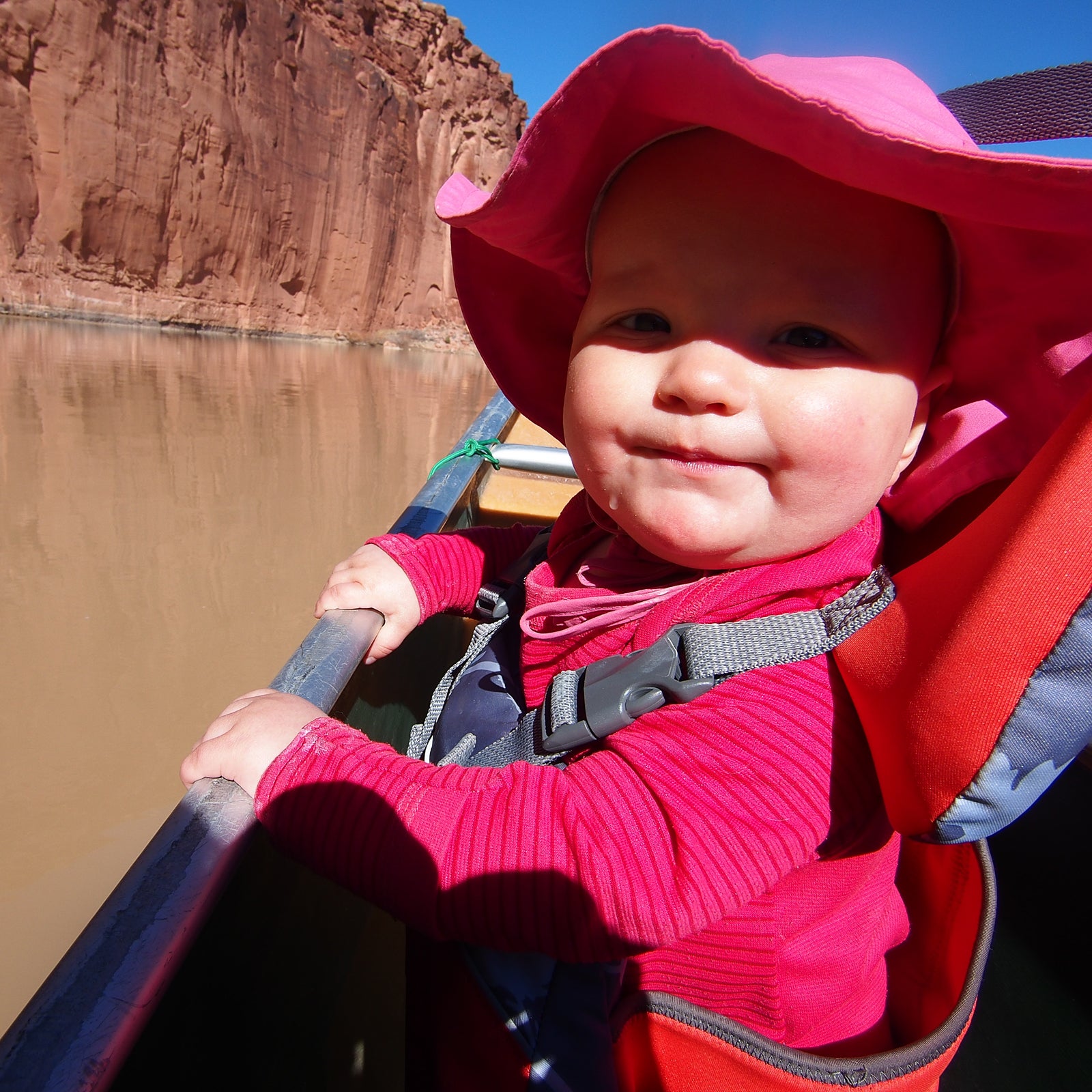
Every March, when we’re sick of winter but too impatient to wait for spring, my husband and I drive to the desert to go paddling. The rivers of the Colorado Plateau run muddy with snowmelt, and the sun feels like heaven. Weather on these trips is variable—we’ve been snowed, rained, and hailed on—but the quiet canyons and starry nights are worth the gamble.
This year, though, there was an even bigger variable: our daughter Josephine, who was 11 months old and had never been in a boat of any kind. How would she react to spending hours each day in a canoe or raft? Would she sleep when nighttime temperatures dropped into the thirties? And was it foolhardy to take her so deep into the wilderness that you couldn’t easily hike out?
Still, as the snow continued to fly at our home in Colorado, I couldn’t stop daydreaming of a 45-mile stretch of calm water that flows through Utah’s Labyrinth Canyon. I’d been reading Alan Kesselheim’s book Let Them Paddle, about canoeing with his children, and the fact that he’d taken an eight-month-old on a month-long expedition down the Yellowstone River made my idea seem tame. For additional inspiration, I reread a few chapters from Mardy Murie’s classic memoir Two in the Far North, in which she takes her six-month-old on a four-month Arctic river trip in the 1920s, long before GoreTex and disposable diapers. Clearly, I rationalized, humans have been taking babies down rivers for millennia.
Despite those two books, there’s relatively little information about how to pull off a multi-day river trip with a little one. Apart from a few tips I gleaned from Murie and Kesselheim, we were mostly winging it. As I made lists and packed meals and stuffed clothes into drybags, I was slightly terrified that the minute we were stuck in the bottom of a canyon with a wailing baby, we’d regret leaving the house.
There were indeed a few times when we were stuck in the bottom of a canyon with a wailing baby. But I never once regretted it. Here’s how we pulled it off.
Buy a Good PFD
One of the smartest things I did when pregnant was to use my baby shower to convince friends and family to buy me fancy outdoor baby gear, including this bomber PFD from Level Six. This one is comfortable, doesn’t ride up, and will fit for several years. I also made my daughter wear it around the house for a couple weeks so that she was used to it before we got on the water.
Choose Your Destination and Boat Wisely
First, your destination: You want water with easyrapids (Class I) or none at all, in an environment where you’re already comfortable with backcountry travel. Then, choose your craft. Kayaks are not practical with a baby. Rafts can haul lots of gear and people but are slow, heavy, and often have standing water on the floor, which means no dry place for an infant to hang out other than in your arms. Canoes, on the other hand, are practically made for babies. The gunwales are the perfect height for a standing baby to hold onto, the hull stays mostly dry and offers a solid surface for playing or napping on, and they’re easy enough for one person to paddle if the other needs to hold or feed the kiddo.
Learn to Canoe
Any sport that requires two people to operate a single machine—like tandem bicycling or canoeing—is a fight waiting to happen if you don’t know what you’re doing. Before you push off with a baby on board, get on a local lake or river and practice paddling with your partner. Master the J-stroke, reverse stroke, and pry and draw, or consider taking an introductory course from an organization like the American Canoe Association. Once you get into the backcountry, there will be plenty of things to stress over; your J-stroke doesn’t have to be one of them.
Give Yourself Extra Time
We spent five days covering just 45 miles (it's a two- or three-night trip for adults). That allowed for a layover day if the weather turned and gave us shorter days on the water, spread out over more time. It was tempting to try to do the trip in as few nights as possible to simplify the logistics, but I’m glad we didn’t. It took a few days to get into the groove of loading the boat each morning, paddling all day with the baby, and setting up camp in the evening, and we wouldn’t have wanted to be getting off the river just as we were hitting our stride.
Pack a Day Bag
When you push off from shore, most of your gear will be hard to access, crammed into drybags and tied to the boat. Make sure you have the essentials in one easy-to-access spot. For us, this meant a 30-liter SealLine Baja drybag that I stashed under my seat, packed with a warm hat and jacket, sunscreen, snacks, diapers, wipes, and a blanket.
Ditch the Cotton Onesies
Sometimes when I dress my infant in her synthetic Patagonia base layers I feel ultra snooty, even though I got them used from the company’s Worn Wear site. On this trip, though, they proved ten thousand times better than cotton onesies: breathable but warm, quick drying, and so durable that Josephine wore them every day on sand and mud and abrasive rocks with no discernible effect.
Take a Rescue Beacon
Emergency beacons—like a SPOT Satellite Messenger or Garmin InReach—let you to call for help from remote areas with no cell coverage. They’re also not cheap. The Garmin costs $400, and the SPOT is $150 plus an annual or monthly subscriptions. But if I was ever in a sticky backcountry situation with an infant, I’d kick myself if I hadn’t invested in technology to activate a rescue with the push of a button.
Bring an Old Sleeping Pad or Car Seat
I had no faith whatsoever that Jo would nap in the canoe; she’s a fussy sleeper who struggles to drift off. But something about the quiet and the rocking motion lulled her right to sleep. I laid her on an old half-inflated Thermarest in the bow, draped a lightweight blanket over the gunwales for sun protection, and paddled in total bliss while she dozed.
For younger babies, we heard of parents who brought a car seat, put an umbrella over it, and let the baby snooze or hang out there while the parents paddled. If you go this route, make sure not to strap your child into the car seat. That way, if you accidentally flip the boat, your baby isn’t buckled to a heavy object that will sink.
Rock the Boat
The best advice we got was to bring a plastic bucket and fill it with rocks every morning. Apparently every baby on earth gets a kick out of throwing stones into the water from a canoe, keeping them distracted so you can paddle. On shore, too, they made the best play things. I brought a couple toys just in case, but Jo was way more interested in the local geology.
Without hesitation, I can say that our springtime journey through Labyrinth Canyon was the best river trip of my life. Not because of the water or the scenery, which were both plenty nice, but because I got to watch Jo discover the joy of traveling by canoe, tossing rocks overboard and watching the world go by.
How Far Can Kids Hike, and How Much Can They Carry?
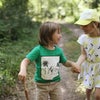
10 Foolproof Tips for Camping with Kids

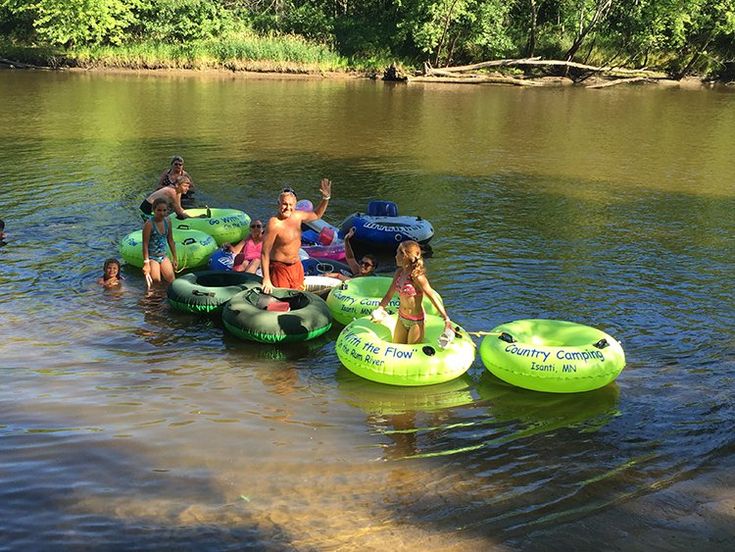
Superscript
Water Sports for Families
Have you ever wished for a way to stay active and bond with your family amidst the chaos of work deadlines and school runs?
I’m passionate about helping busy parents achieve work-life balance. Water sports offer a fun way to stay active, reduce stress, and bond with family. Explore their benefits and hacks to incorporate them into your routine for better well-being. Discover how water sports can enhance your family’s health and happiness!
Let’s discover the joy and tranquility of water sports!
Benefits of Water Sports
Water sports aren’t just about splashing around—they’re a gateway to improved fitness, reduced stress levels, and quality time spent together as a family. Picture the sound of laughter carrying across a peaceful lake while you guide your children in kayaking or feel the excitement of riding waves with your teenager. These activities keep everyone active and foster a more profound connection away from screens and schedules.
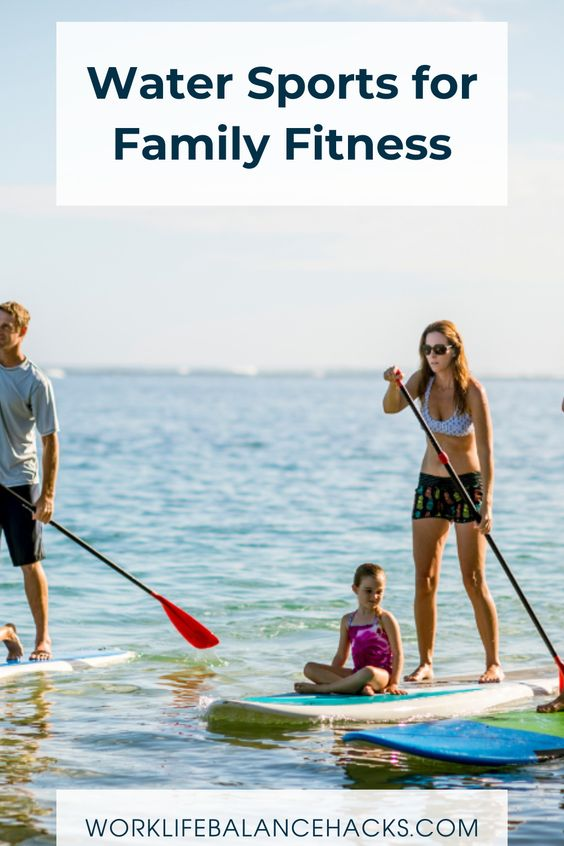
# 1. Get Fit and Strong
Water sports are a fantastic way to stay in shape! Whether swimming, kayaking, or paddleboarding, you’re giving your heart a great workout and building muscle strength without even realizing it. These activities can be a great way for parents and kids to enjoy the outdoors and stay active.
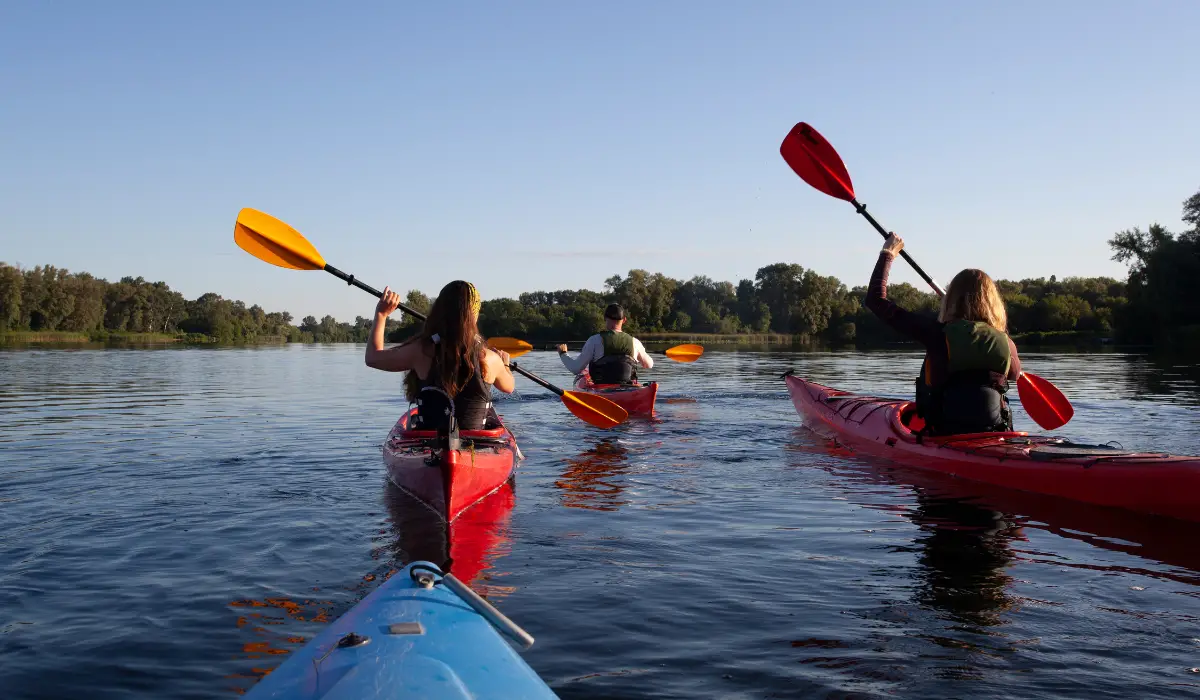
#2. Boost Your Mood
Ever notice how being near water makes you feel better? Water sports are a natural stress-buster and joyful. Splashing around in the water can help reduce stress and lift your spirits, leaving you feeling refreshed and happy. Want to dive deeper into how water sports and other activities can boost your mood and overall well-being? Check out my article on 20 relaxing activities for a happier you.
Additionally, swimming releases endorphins, the body’s natural feel-good hormones. Endorphins can enhance mood and alleviate symptoms of anxiety and depression.
And, do you remember how tired you felt after any water sports the moment you got into the house? That is why water improves much-needed sleep.

#3. Family & Friends Fun Time
Water sports are perfect for family bonding. Imagine the laughter and memories you’ll create paddling together in a kayak or trying to balance on a paddleboard. It’s all about teamwork and making unforgettable moments with your loved ones.
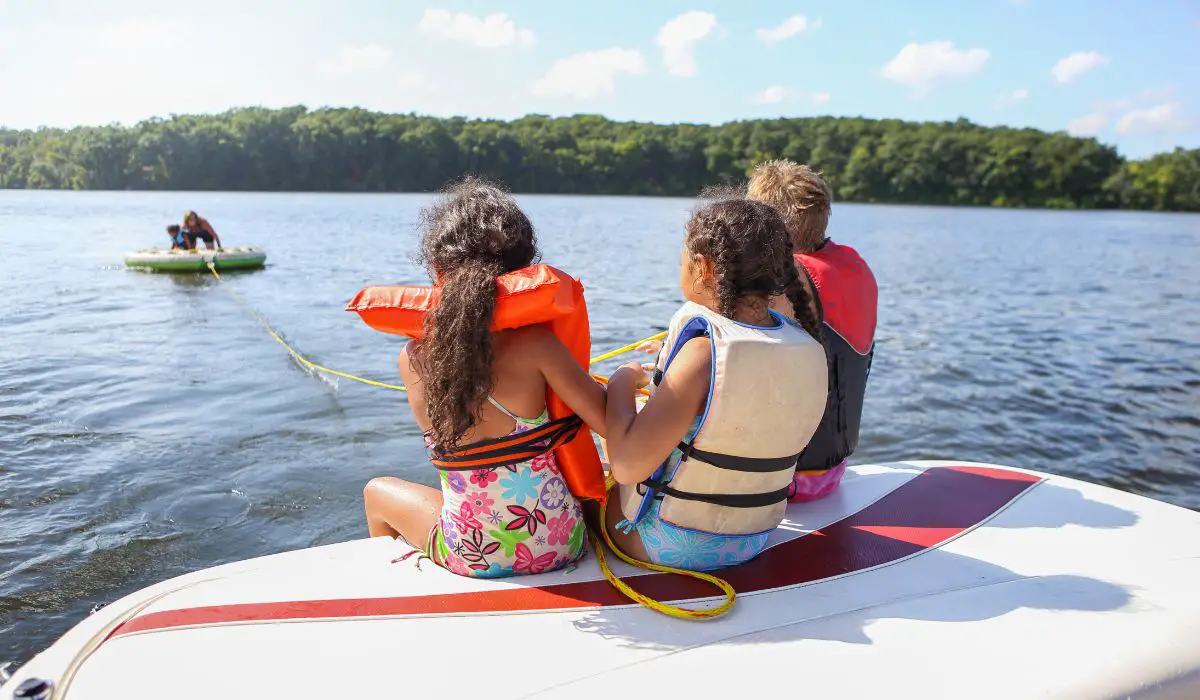
Water Sports Suitable for Parents and Kids
Swimming: Perfect for all ages, swimming offers a full-body workout and builds confidence in the water.
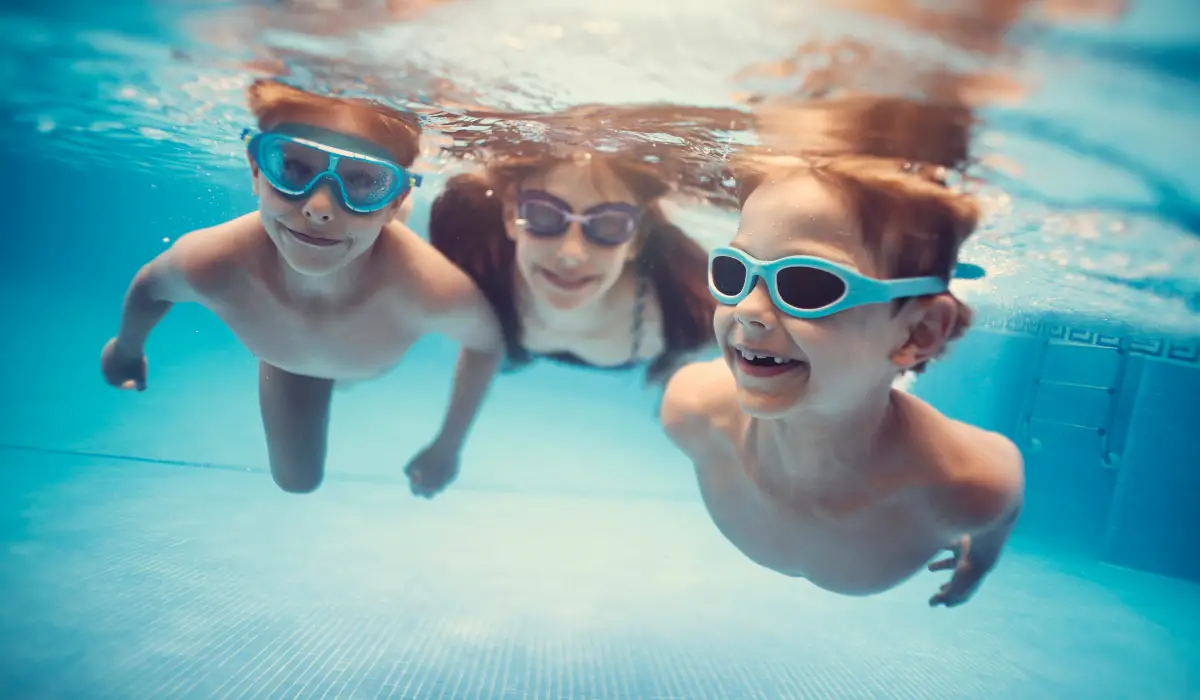
Kayaking: Great for exploring calm rivers and lakes, kayaking is ideal for families looking to enjoy nature together. You can rent yaks at most water sports facilities for a reasonable price.
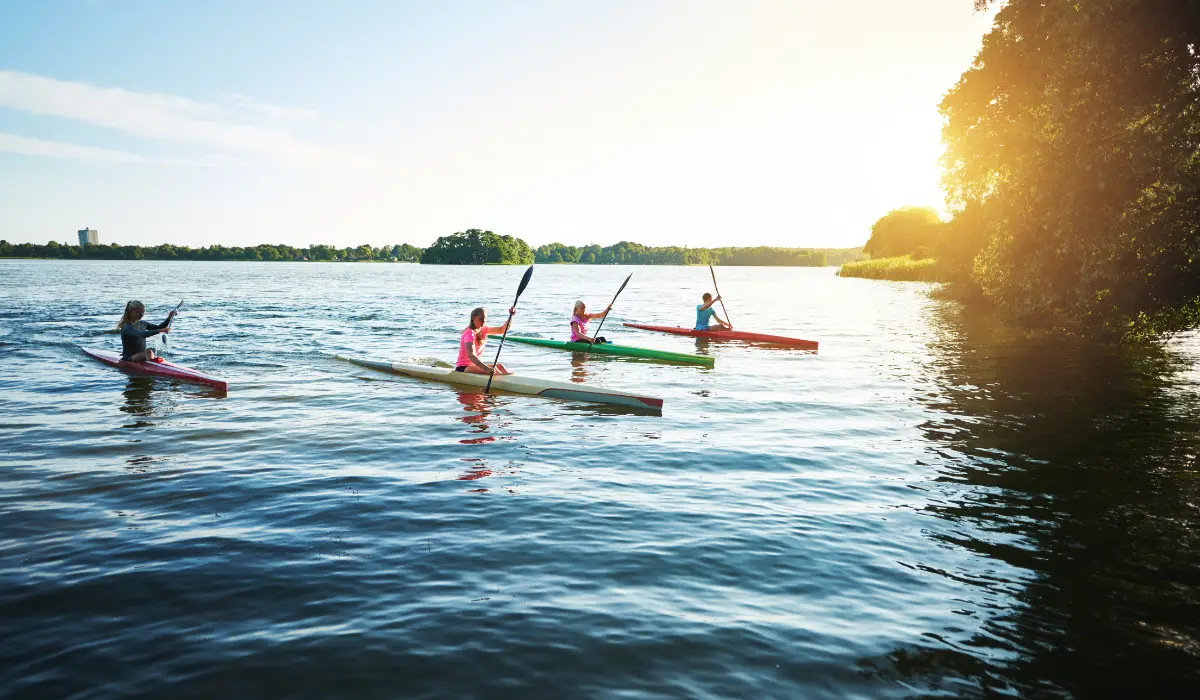
Stand-up Paddleboarding (SUP) is a relaxing way to glide across the water while improving balance and core strength. It’s a funny activity that involves many ups and downs and trials. Prepare to laugh and enjoy it a lot!
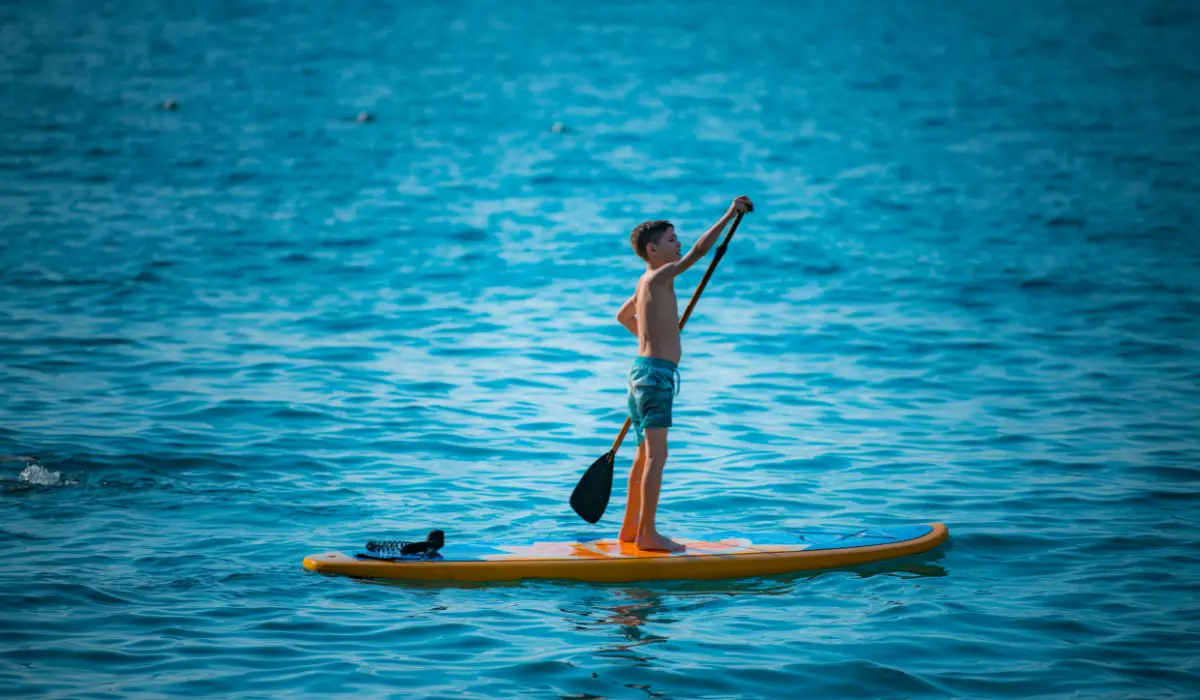
Canoeing: Similar to kayaking but with more space, making it comfortable for families with younger children. Canoeing is an excellent choice for families with children under ten because it offers ample space and stability, which enhances safety and ensures an enjoyable experience for everyone.
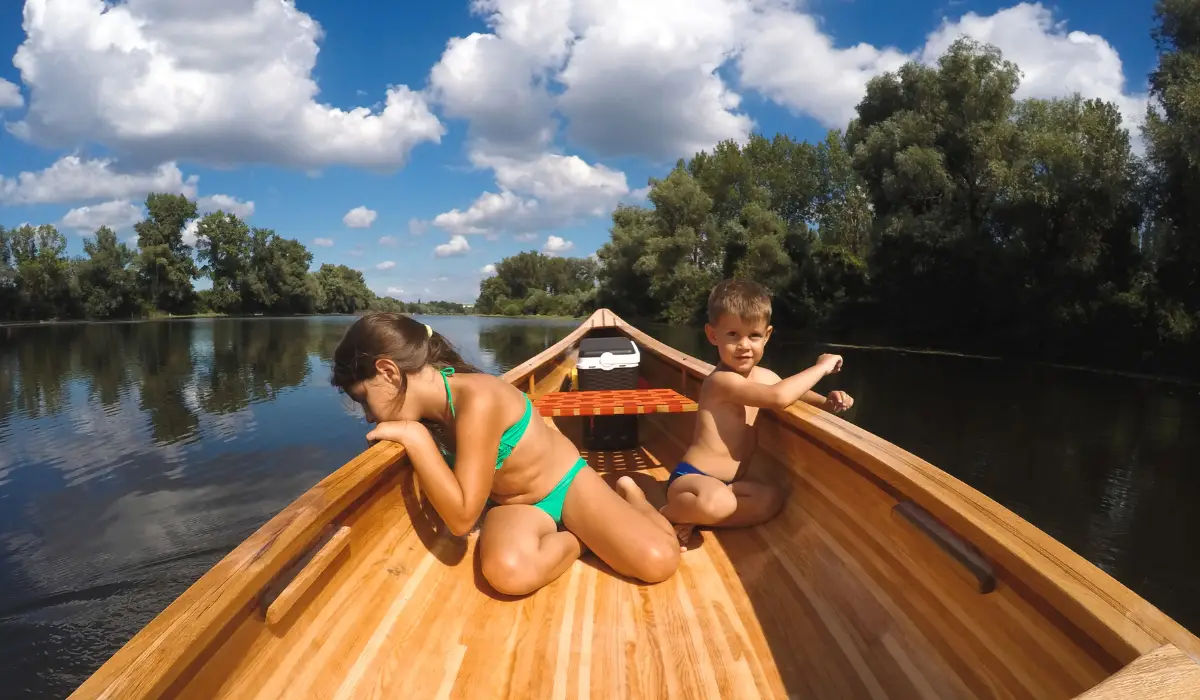
Rowing: Whether in a rowboat or sculling, rowing provides rhythmic exercise and a peaceful time on the water. Video
Snorkeling: Explore underwater wonders as a family, discovering marine life and coral reefs together.
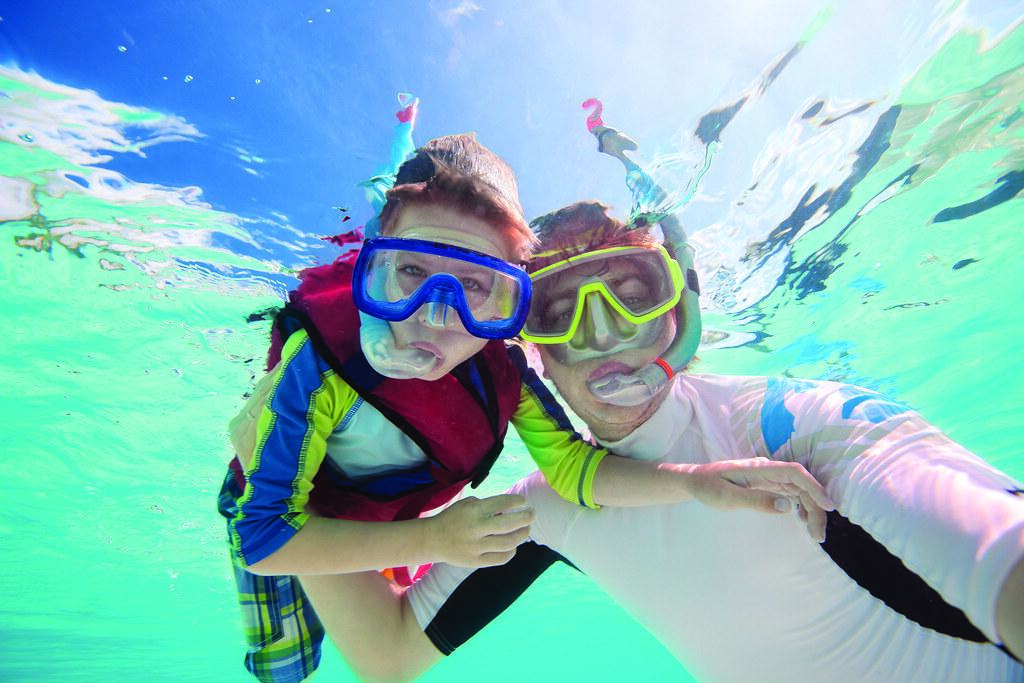
Scuba Diving: For older kids and teens, scuba diving offers an adventurous way to explore the ocean’s depths.
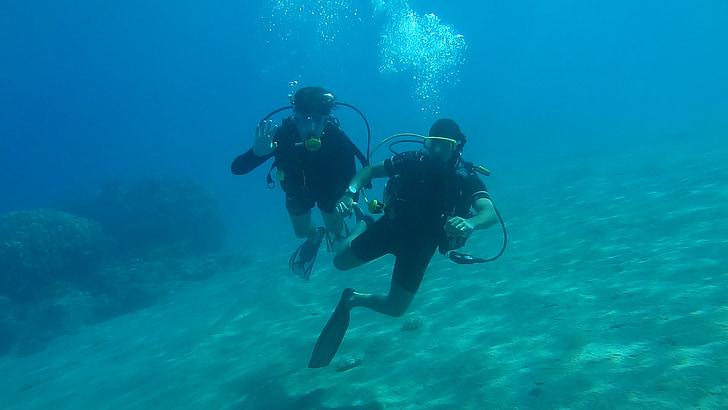
Fishing: A tranquil activity that teaches patience and allows for quiet bonding time amidst nature’s beauty. Educate your children by introducing them to various types of fish, their natural environments, and the significance of responsible fishing methods.
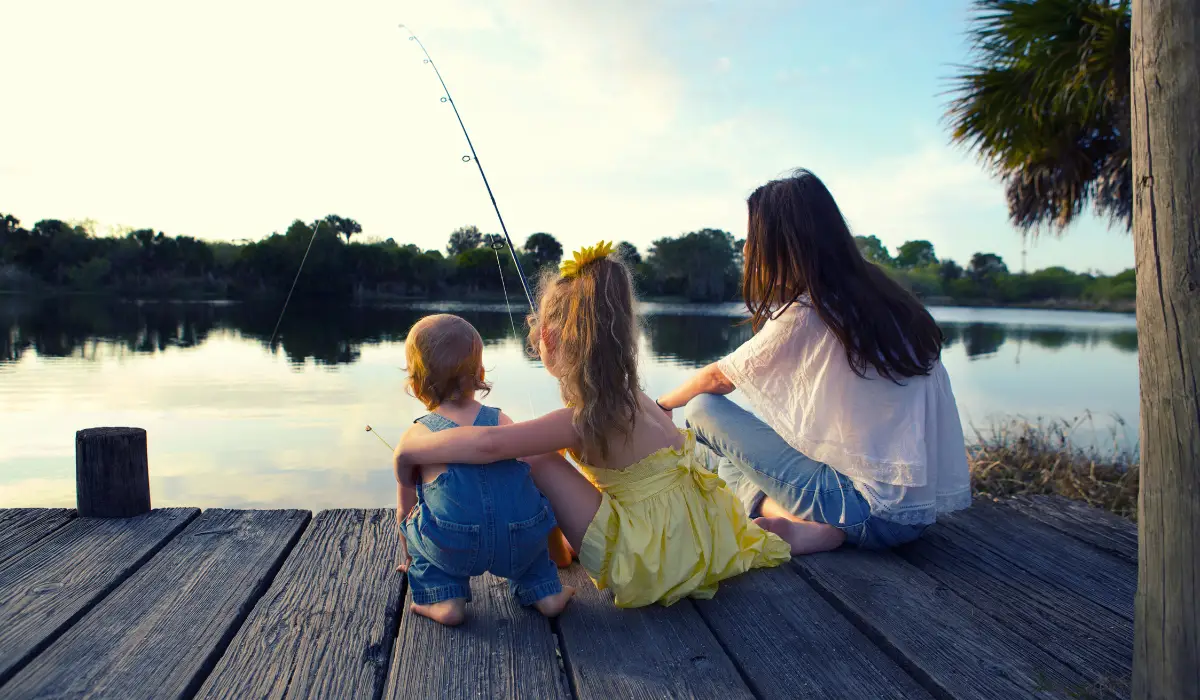
Sailing: Learn to harness the wind and navigate the open waters, creating unforgettable memories as a family.
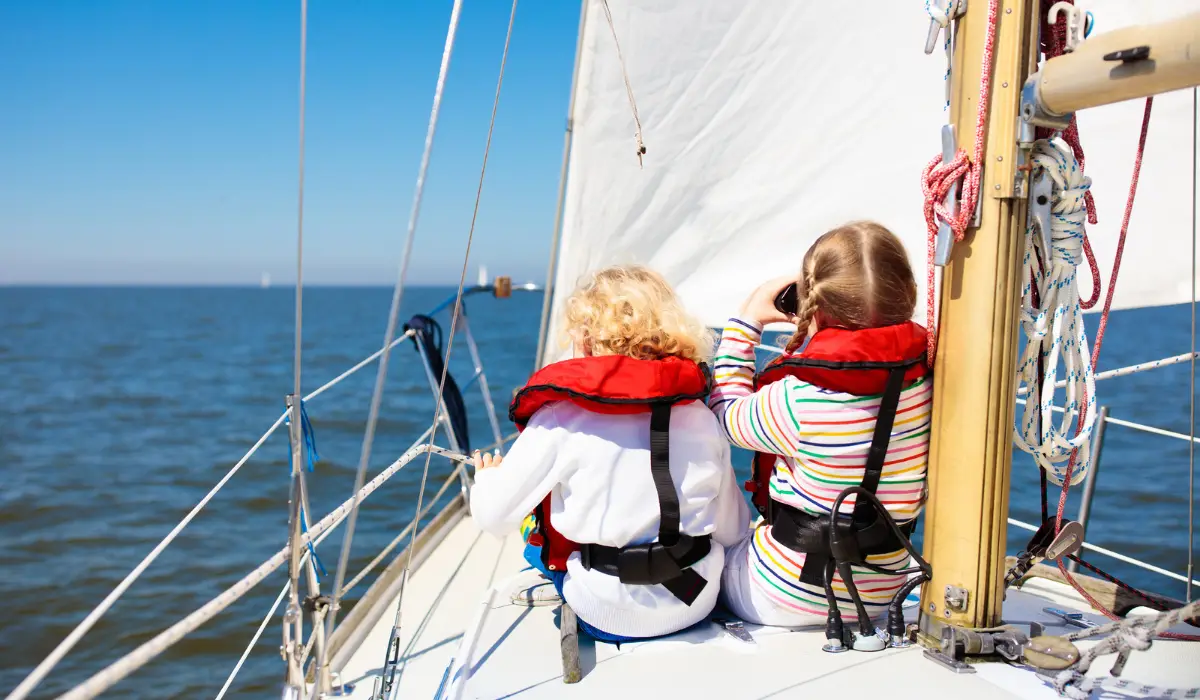
Windsurfing combines aspects of sailing and surfing to offer a stimulating challenge suitable for older kids and adults.
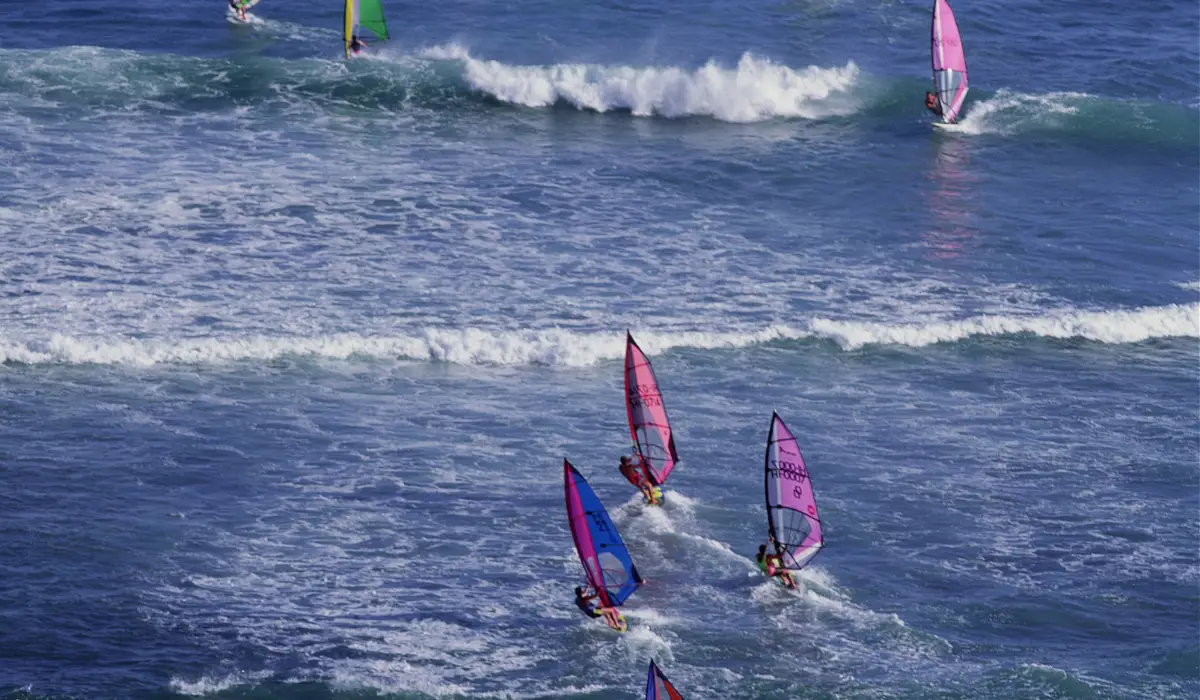
White water rafting
If surfing doesn’t get your heart pumping, why not try white water rafting? There are some awesome natural rapids to be found on our rivers where you can enjoy stunning scenery and rub shoulders with local wildlife. With different classes of white-water rivers, anyone from a completely inexperienced rafter to an extreme adventurer can find their own shot of adrenaline. If you’re eager to grab a paddle, some of the best rivers to make a splash on any River. Pure thrill-seekers should head for the rapids in early spring or after heavy rainfall. If you’re eager to grab a paddle, some of the best rivers to make a splash on are the River
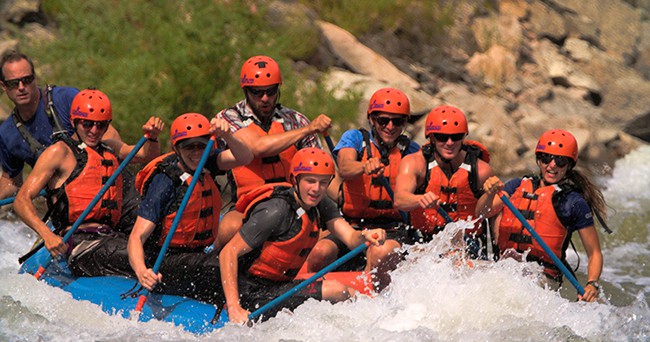
River Tubing
Splash, float and jump your way down the rapids with river tubing. One of the most hilarious water sports you can do on a river, grab your pals and descend a river rafting run, whilst sitting within a specially designed tube with your bottom in the water. As you navigate the many twists and turns of the river, you’ll very much resemble a group of turtles on their backs but it’s a lot of fun – be prepared to get wet and possibly fall out mid-rapid!
Or if you’d like to discover more exciting river activities for groups, read our guide to Great British water sports.
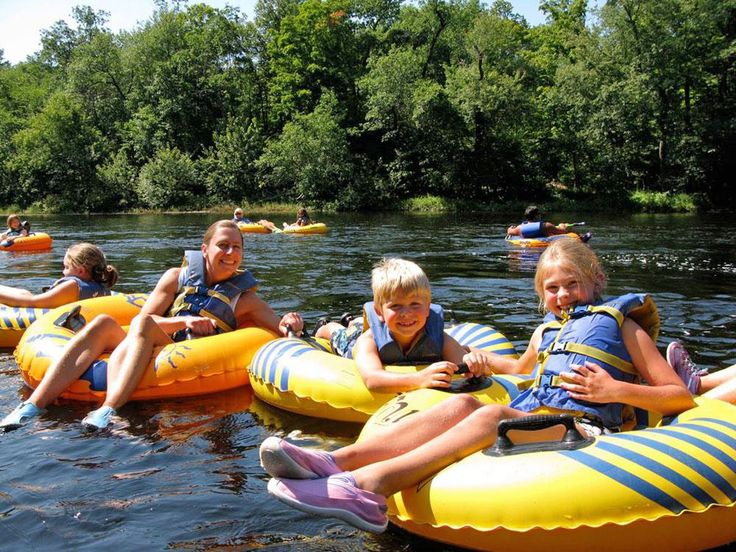
River safety
There are so many fun ways to enjoy our rivers, but it’s important to stay safe while doing so. Here are our top tips for river safety:
Keep children away from the water’s edge and stick to the footpaths.
Don’t jump or dive in as the depth may vary and there can be unseen hazards.
Don’t swim near weirs, locks, pipes and sluices. These and some other water features are often linked with strong currents.
Be sure that the river is safe. Give yourself an easy route in and out of the water, look for currents, fast-moving water and make sure it's not too deep.
Inland waters can be very cold, no matter how warm the weather is. Those going into cold water can get cramp and experience breathing difficulties very quickly.
Keep a look out for boat traffic. Boaters, especially on larger vessels, can find it very hard to spot swimmers.
Beware of weeds – you can get tangled and trapped in weeds growing at the bottom of the river.
Never boat or swim alone.
Leave things as you find them – take your rubbish away with you and don’t take any creatures home as they need the river to survive and thrive.
Hacks for Incorporating Water Sports into Busy Schedules
Get Started: Getting started with water sports is easier than you might think. Start with simple activities like swimming at a local pool or paddleboarding on a calm lake. Remember to prioritize safety by wearing life jackets and following water safety guidelines. These activities can be a great way for parents and kids to enjoy the outdoors and stay active.
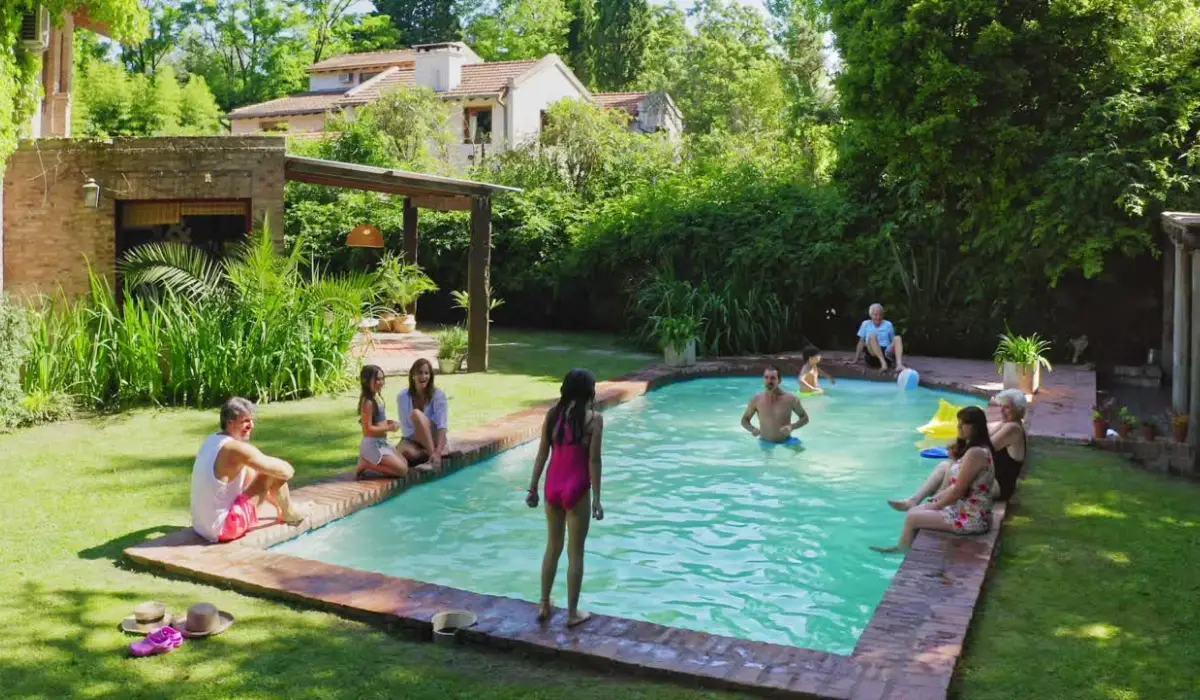
Weekend Getaways: Escape on weekends to beautiful lakes, serene rivers, or stunning coastal areas for an adventurous water sports getaway with your loved ones!
Join Local Clubs: Get ready to dive into the fun! Discover nearby clubs or community centers that offer fantastic water sports programs for the whole family. These unique places provide all the equipment and expertise you need to make a splash. Joining a local club is an excellent way to break down any barriers holding you back and start your water sports adventure today!
Family Holidays: Make your family holidays unforgettable by choosing destinations with endless opportunities for thrilling water sports. The excitement of exploring new places and activities will make lifelong memories for you and your family.
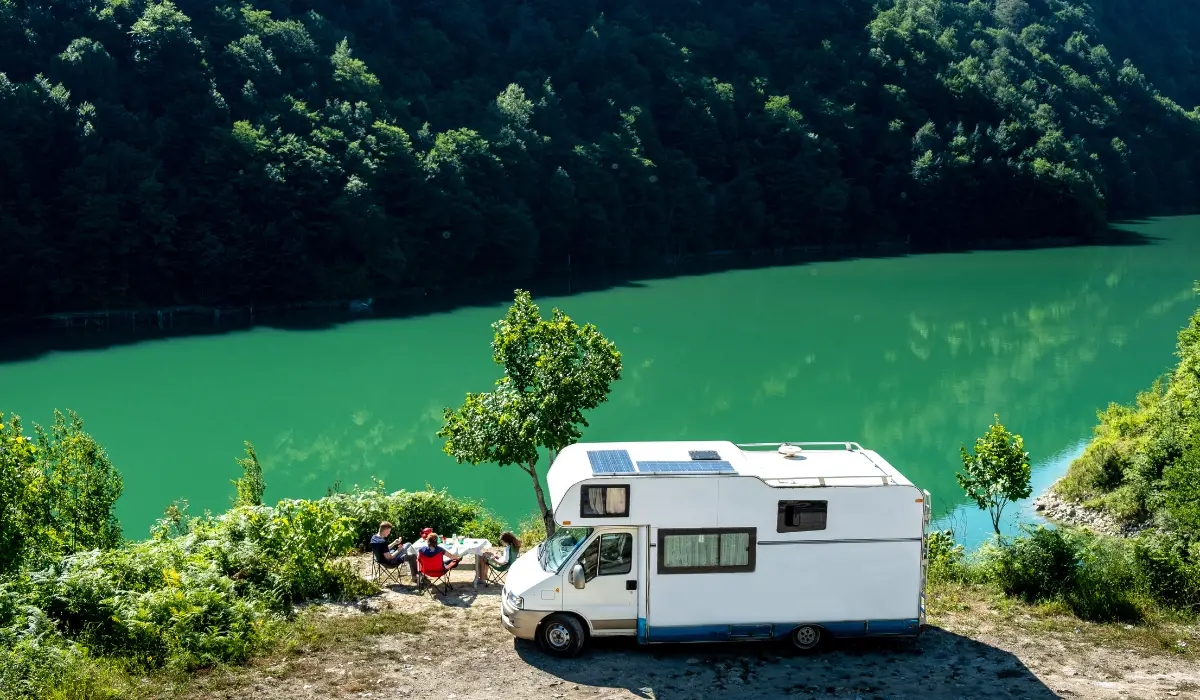
As a whole, embracing water sports isn’t just about staying active—it’s about forging deeper connections with your family and nurturing a sense of adventure and well-being that can transform your lives. So, step away from your desk, grab your swimsuit, and dive into the world of water sports—it’s time to create memories that will last a lifetime and inspire a healthier, more adventurous lifestyle. I hope you are inspired to take a watery action! Let me know in the comments.

